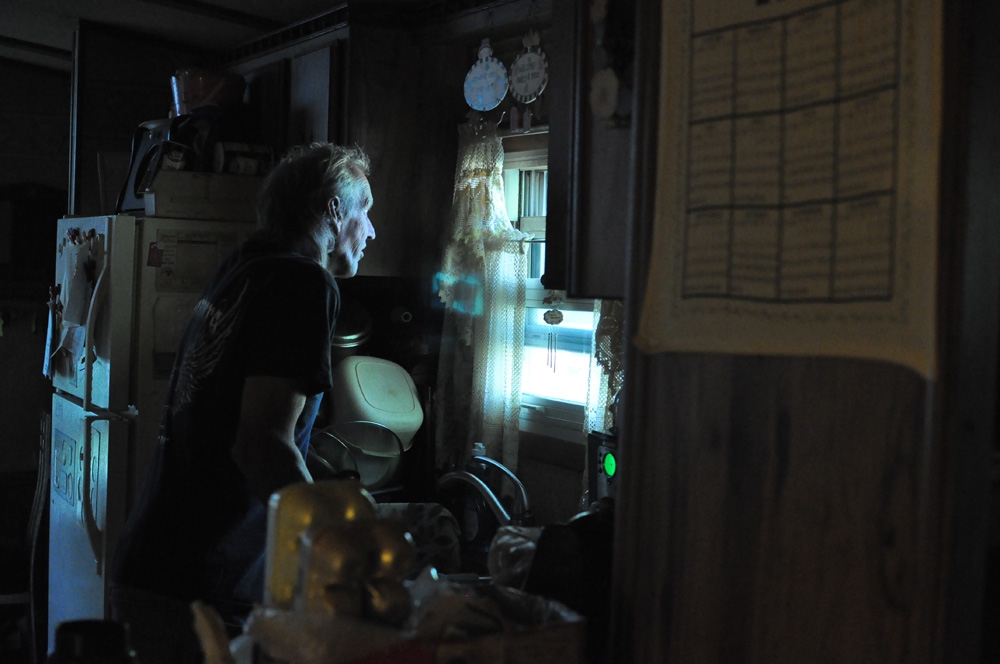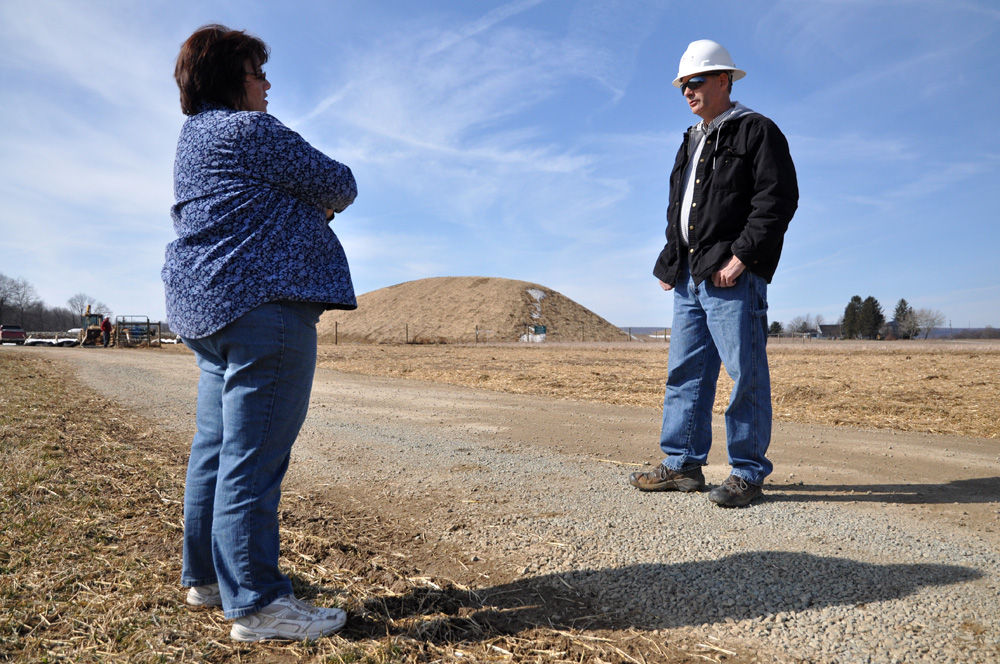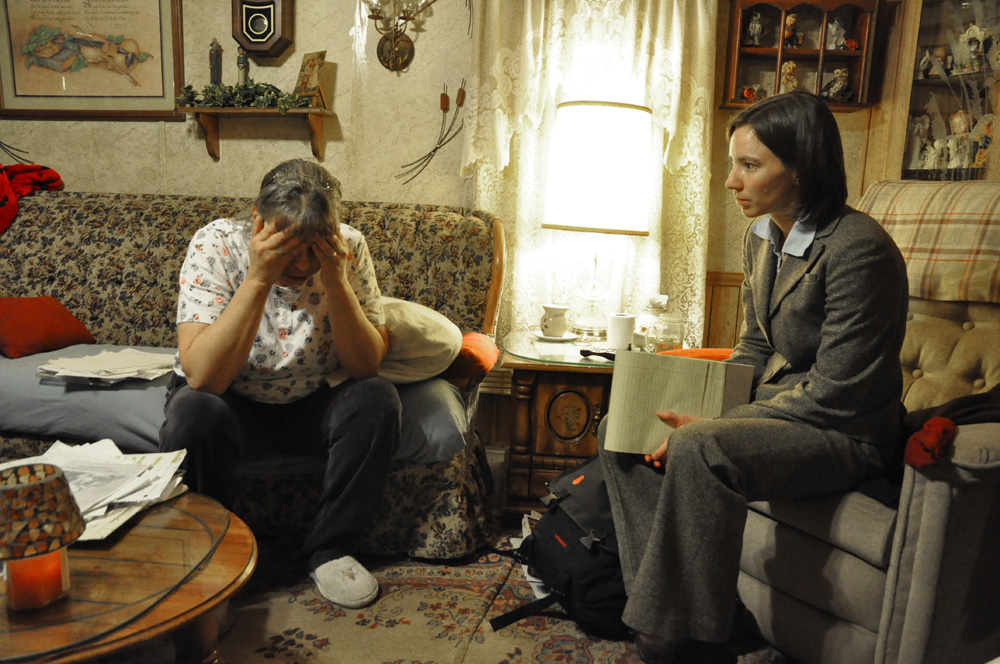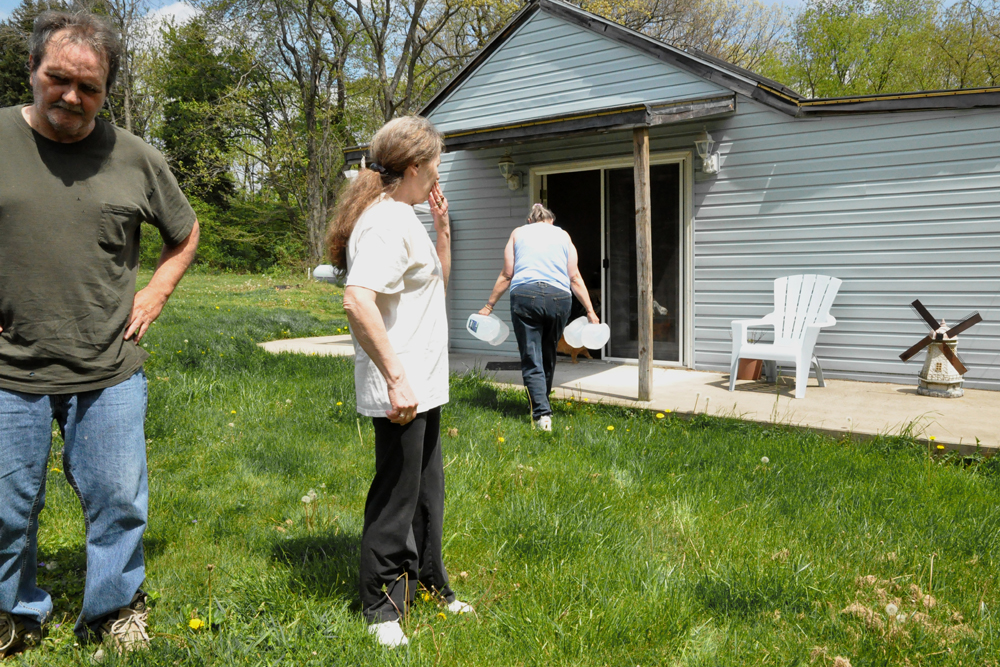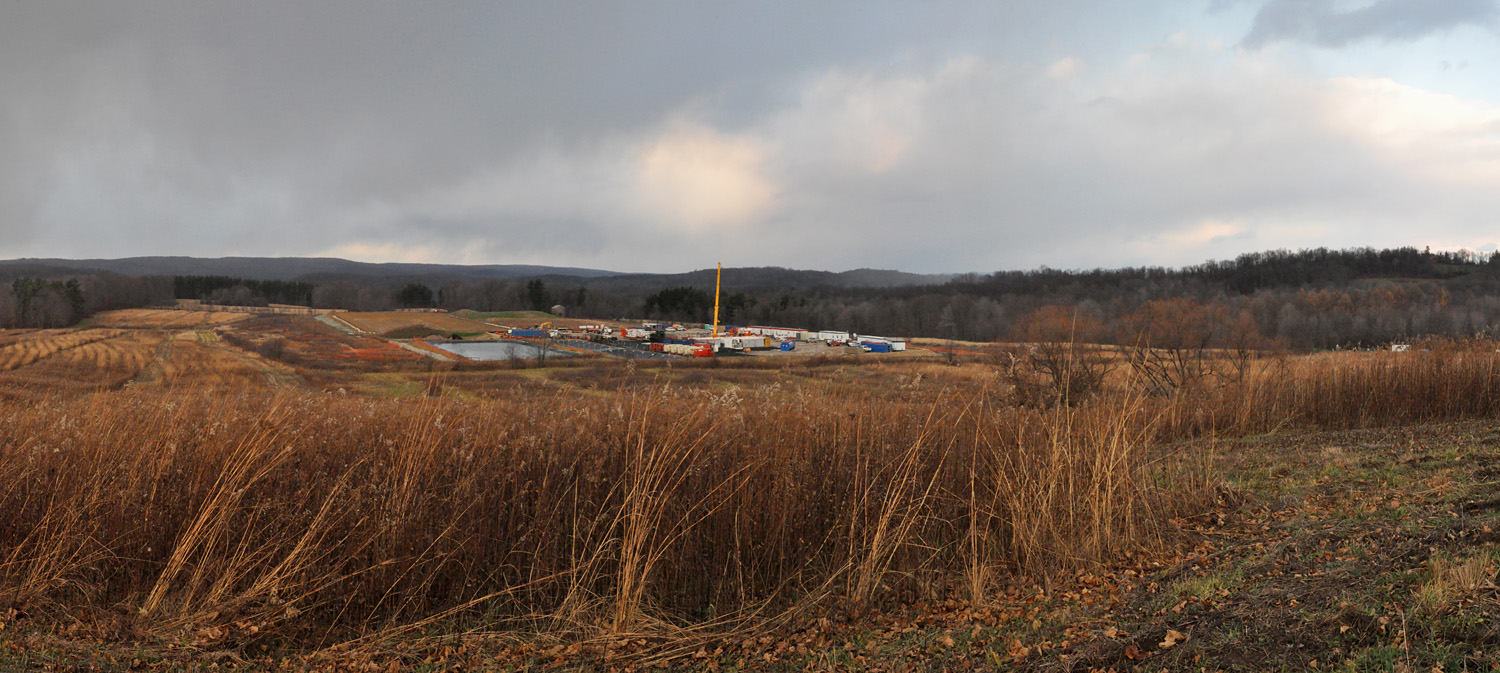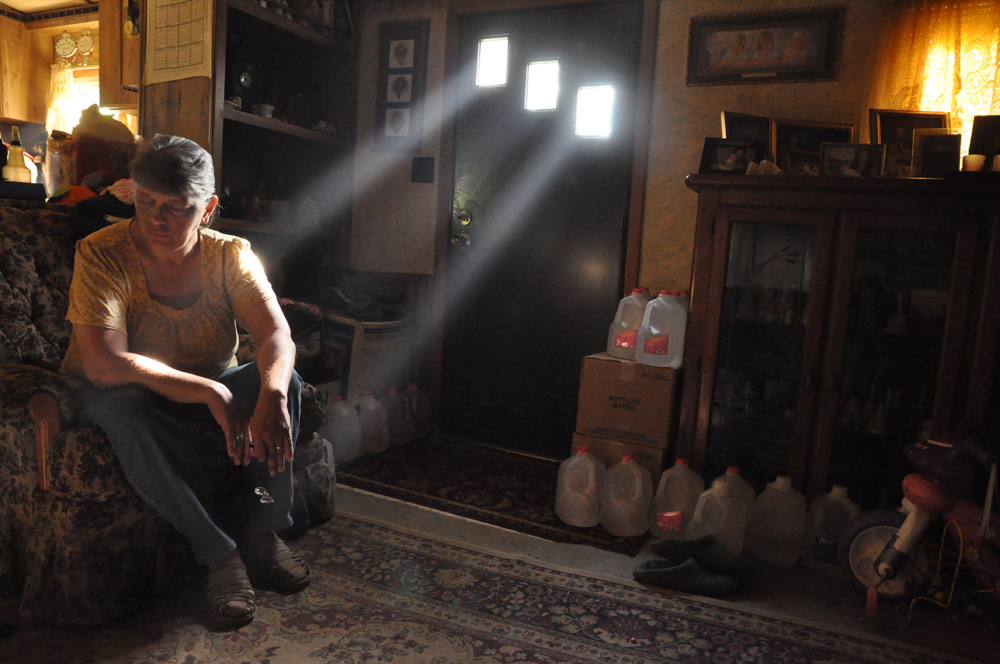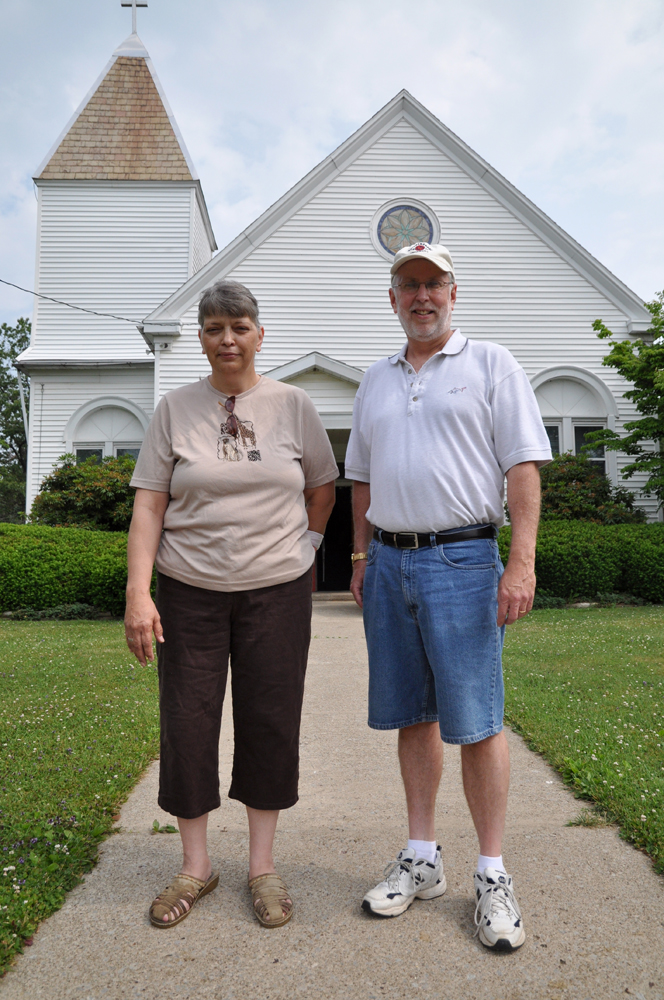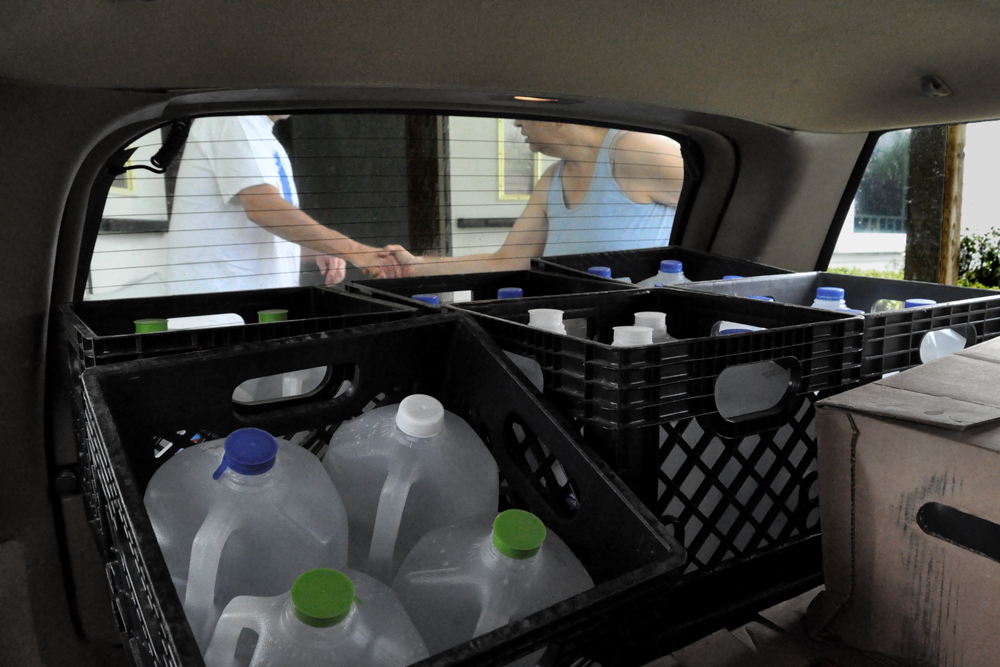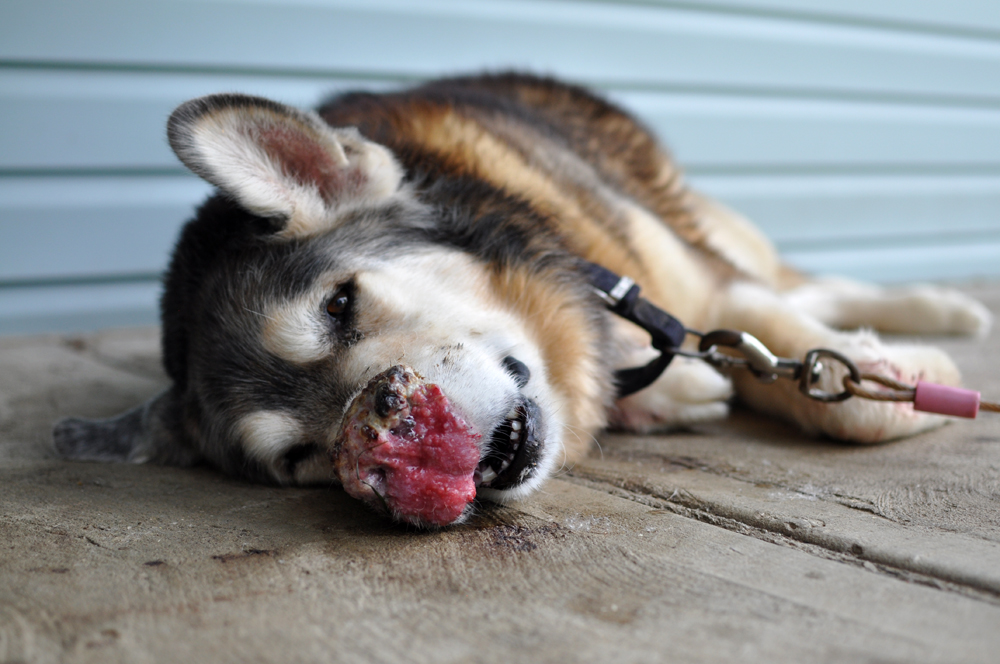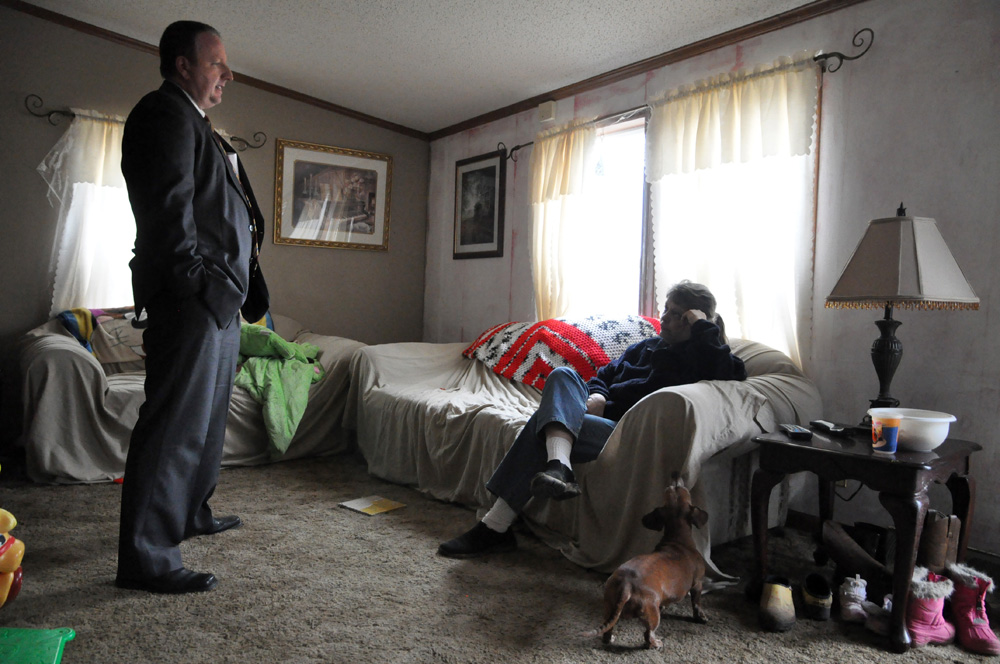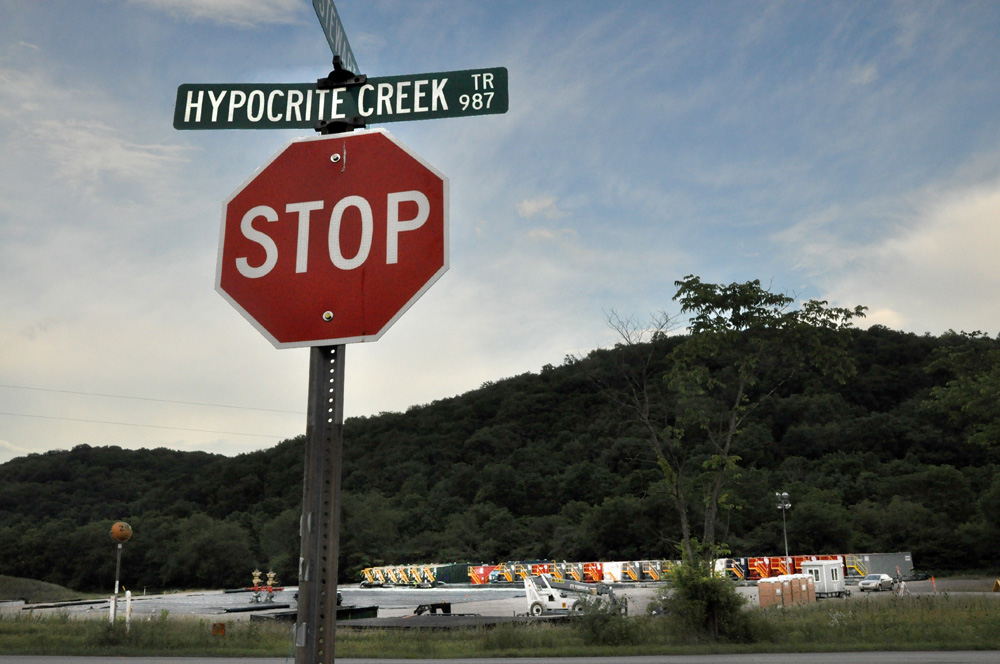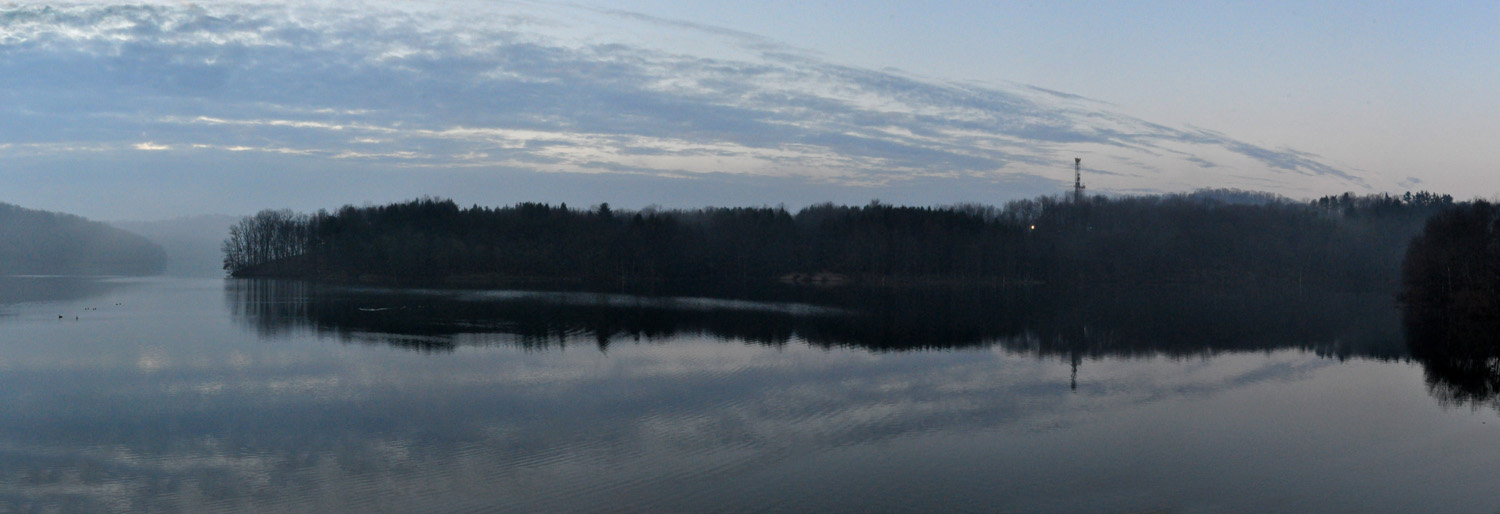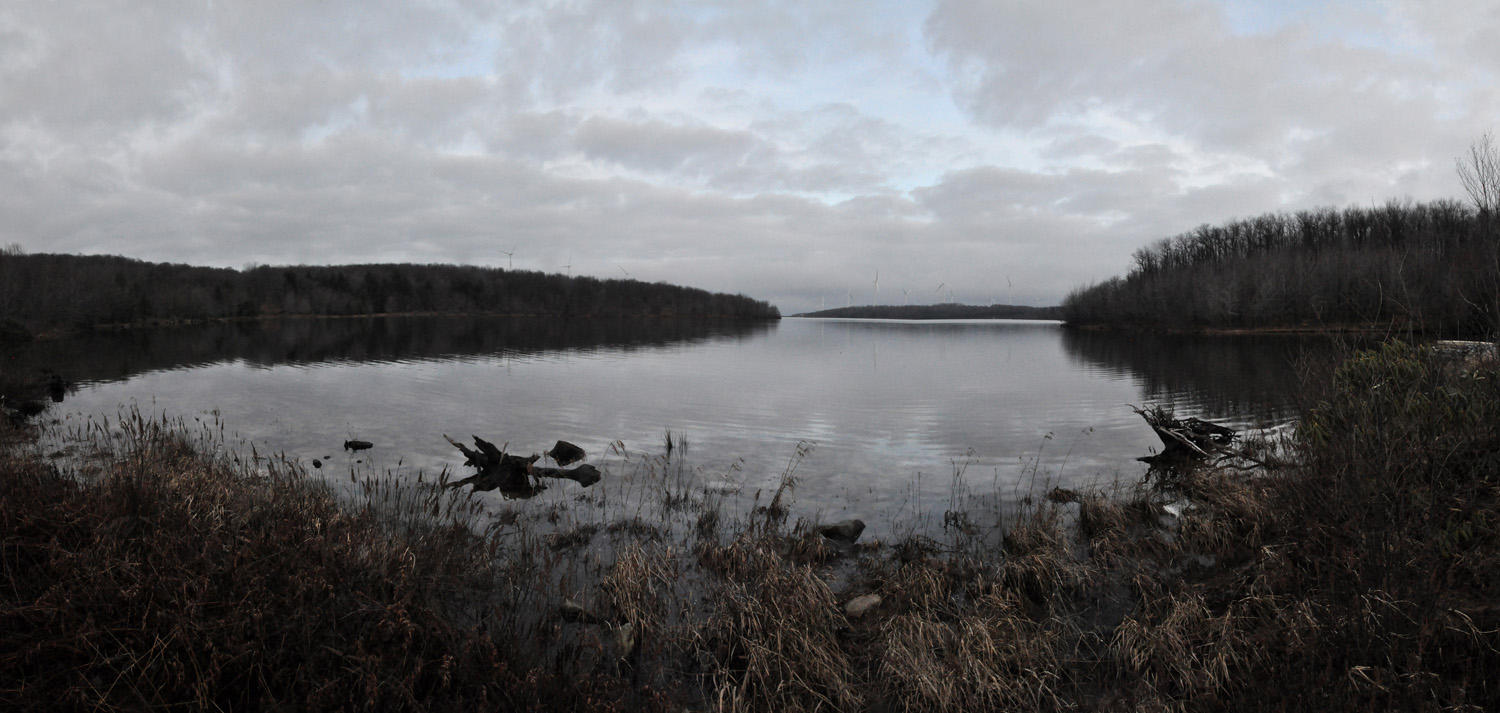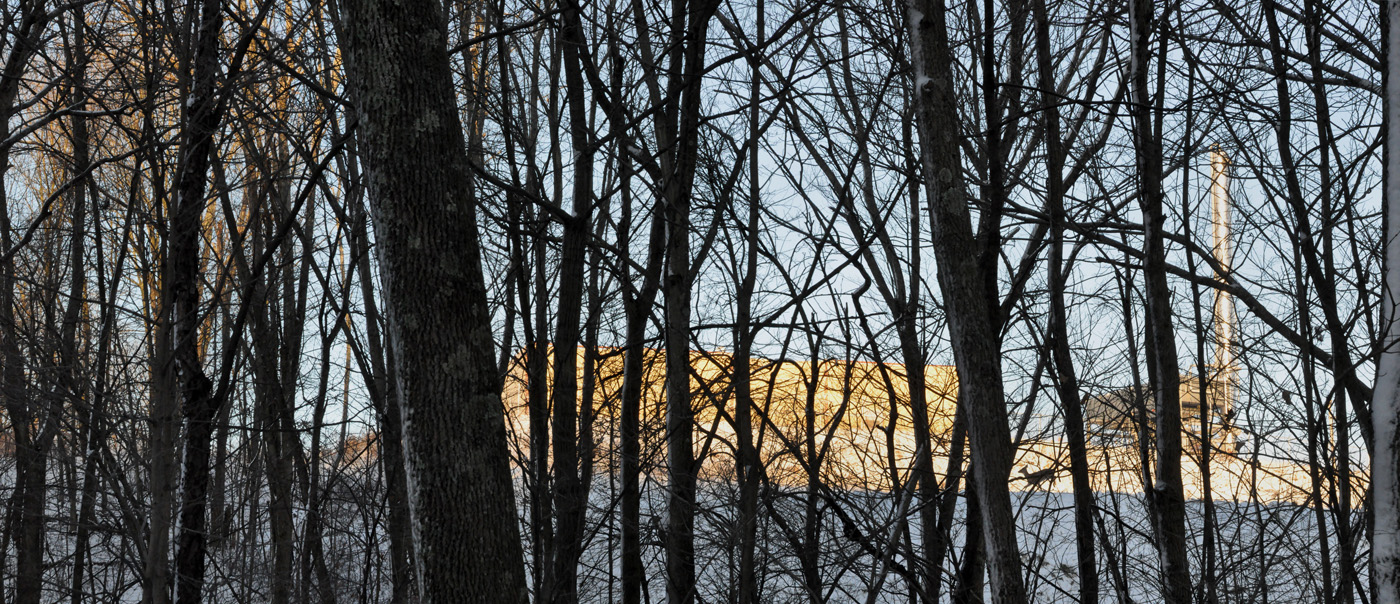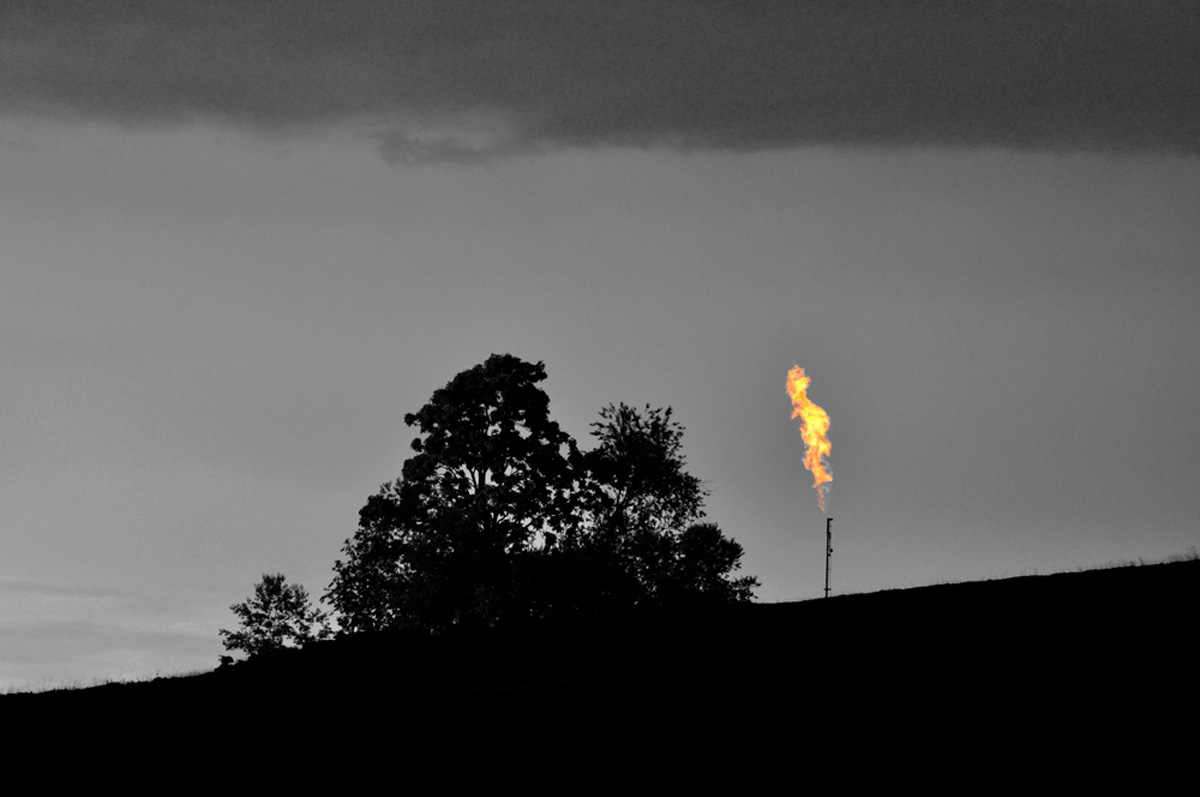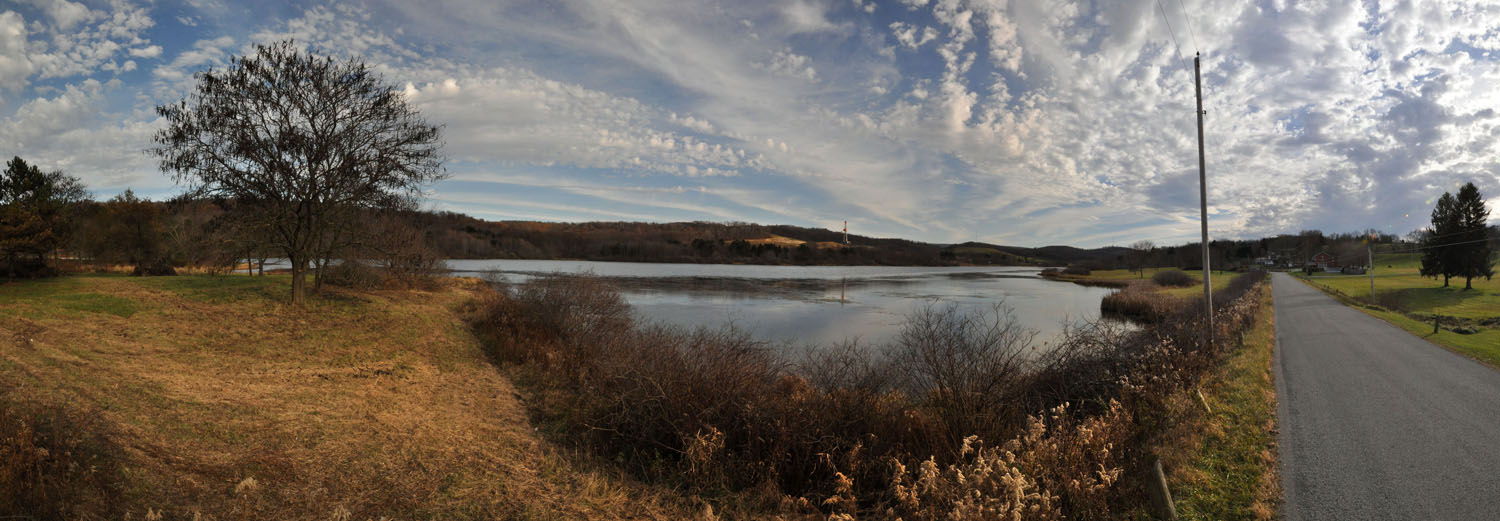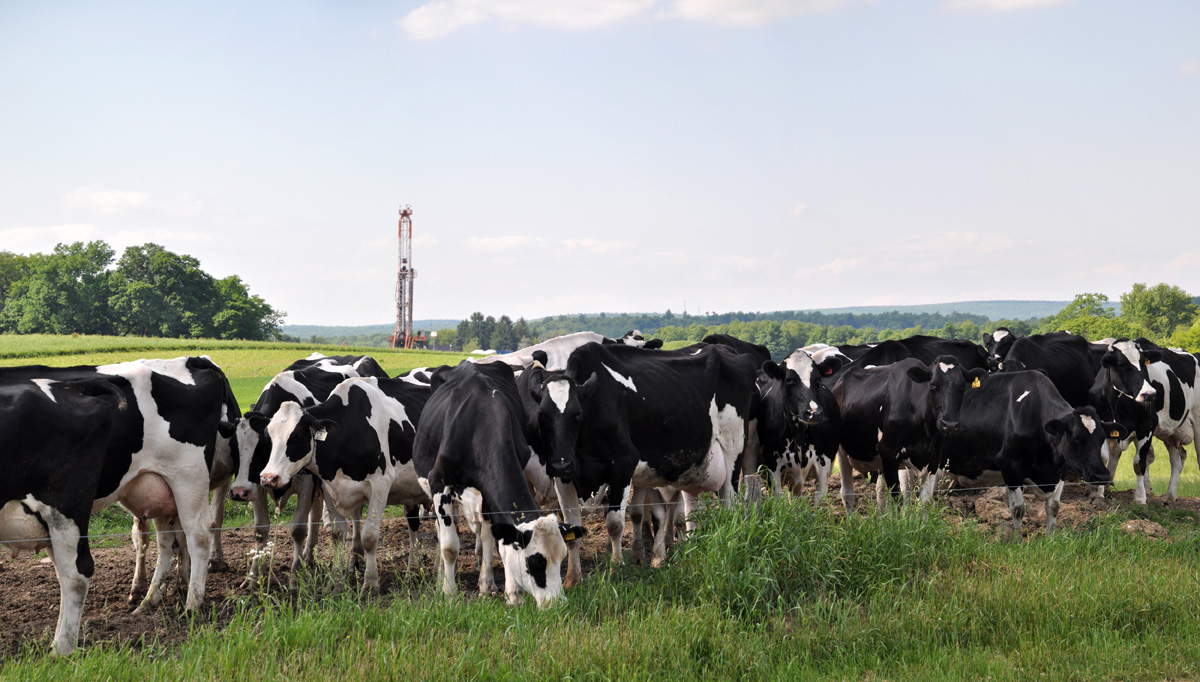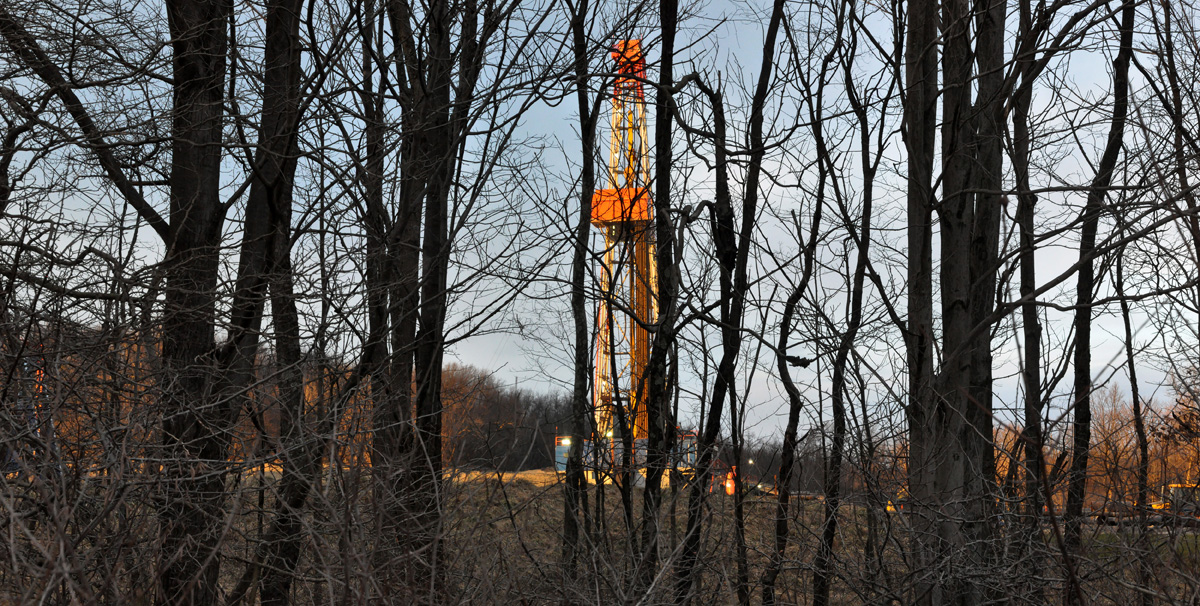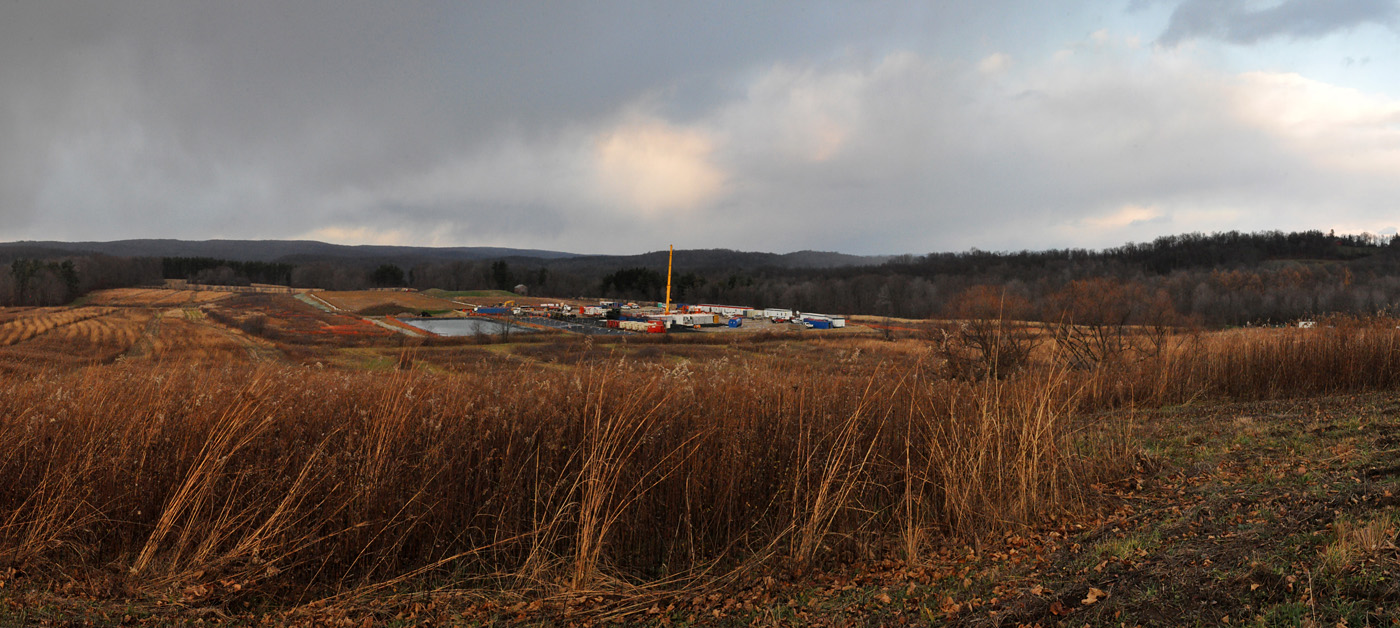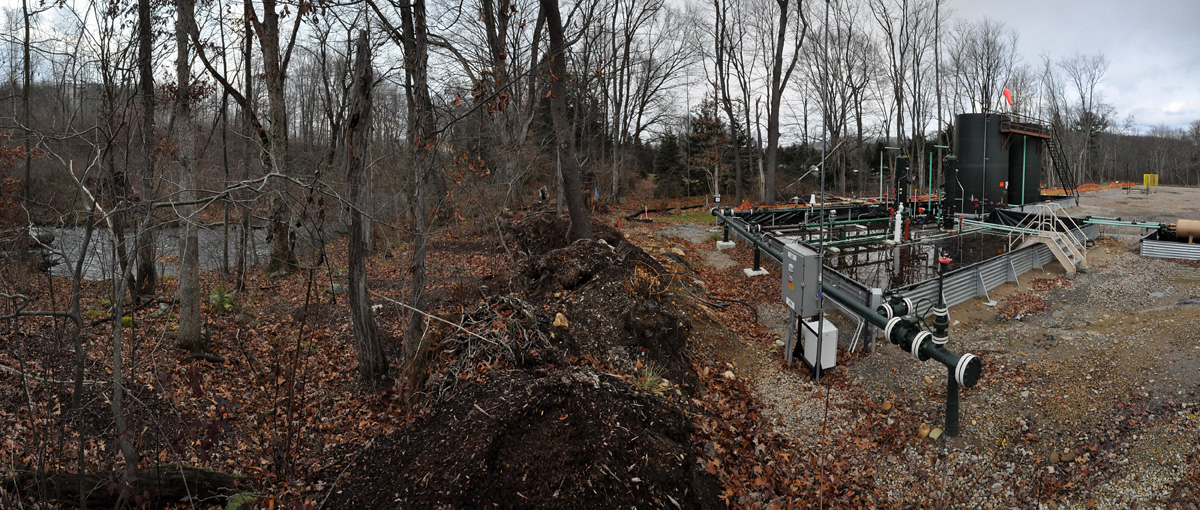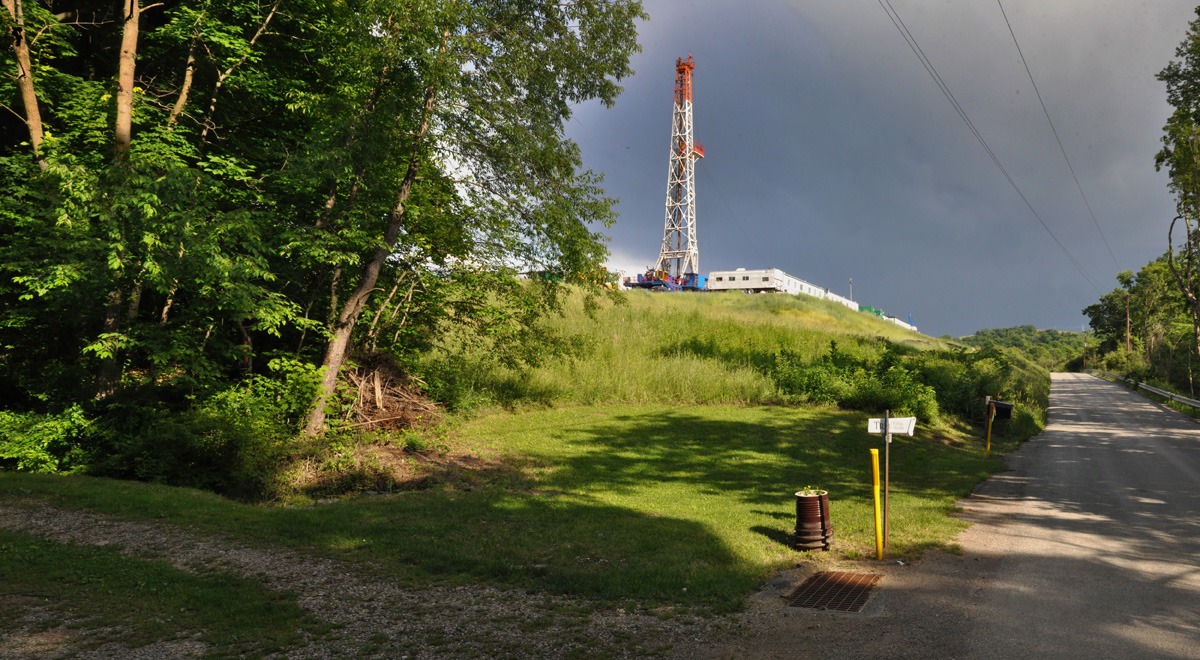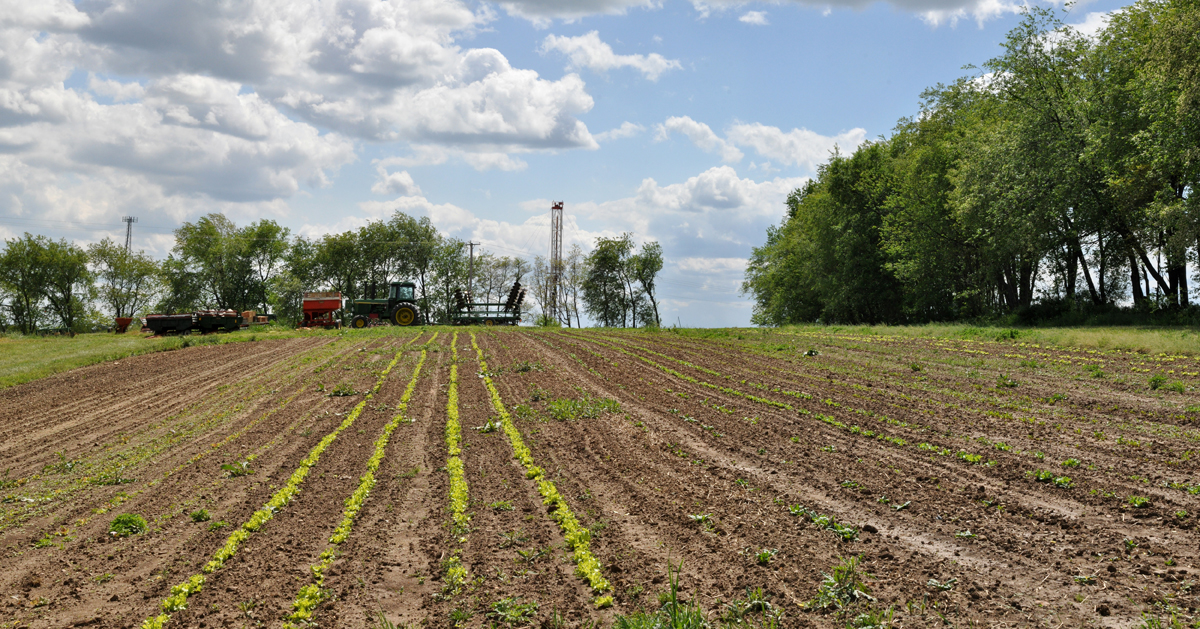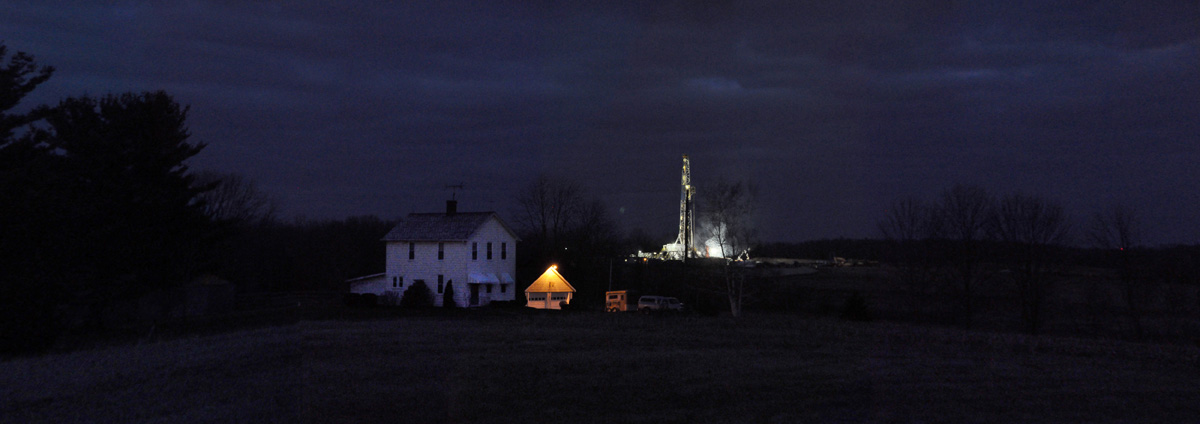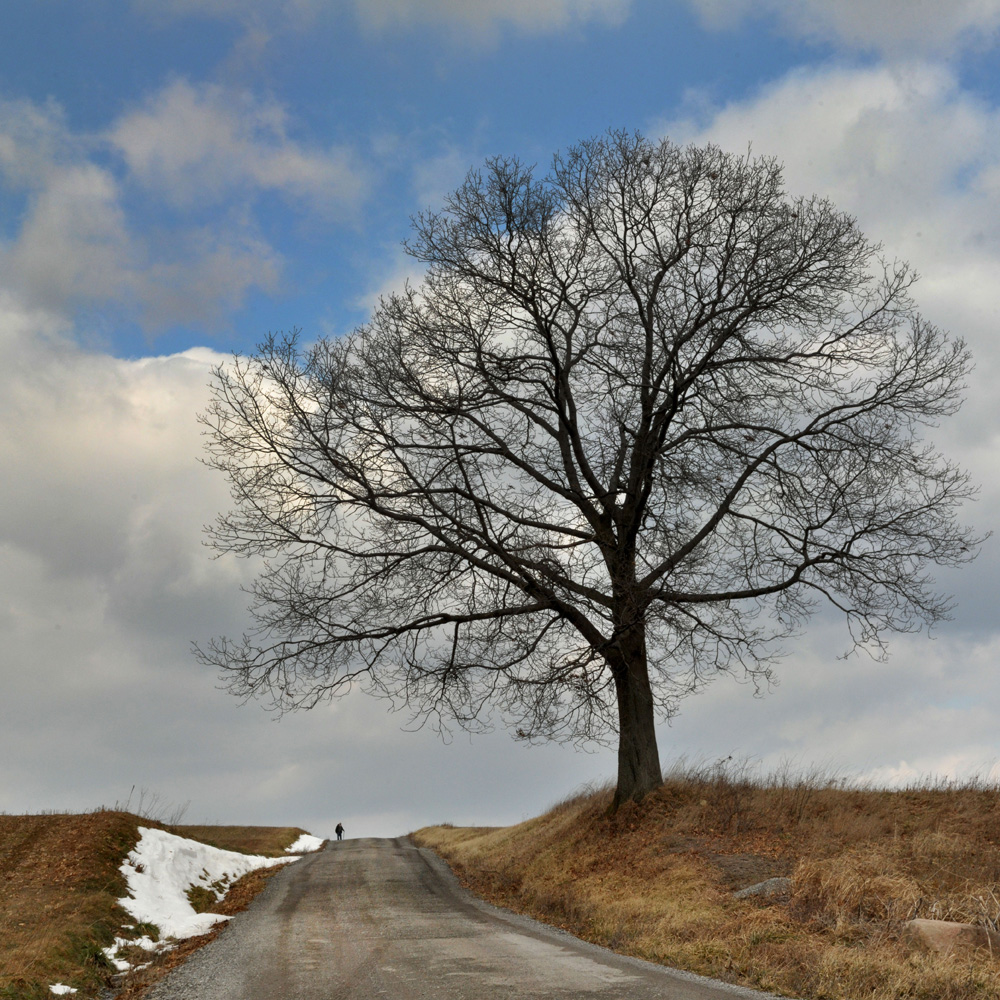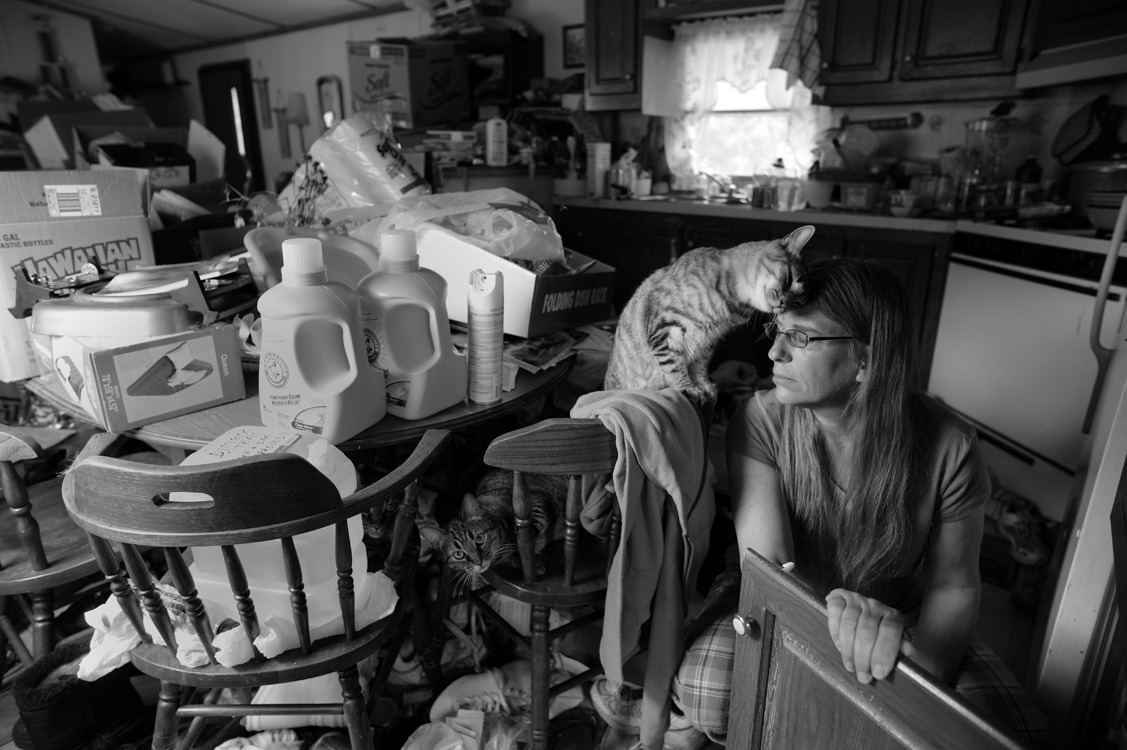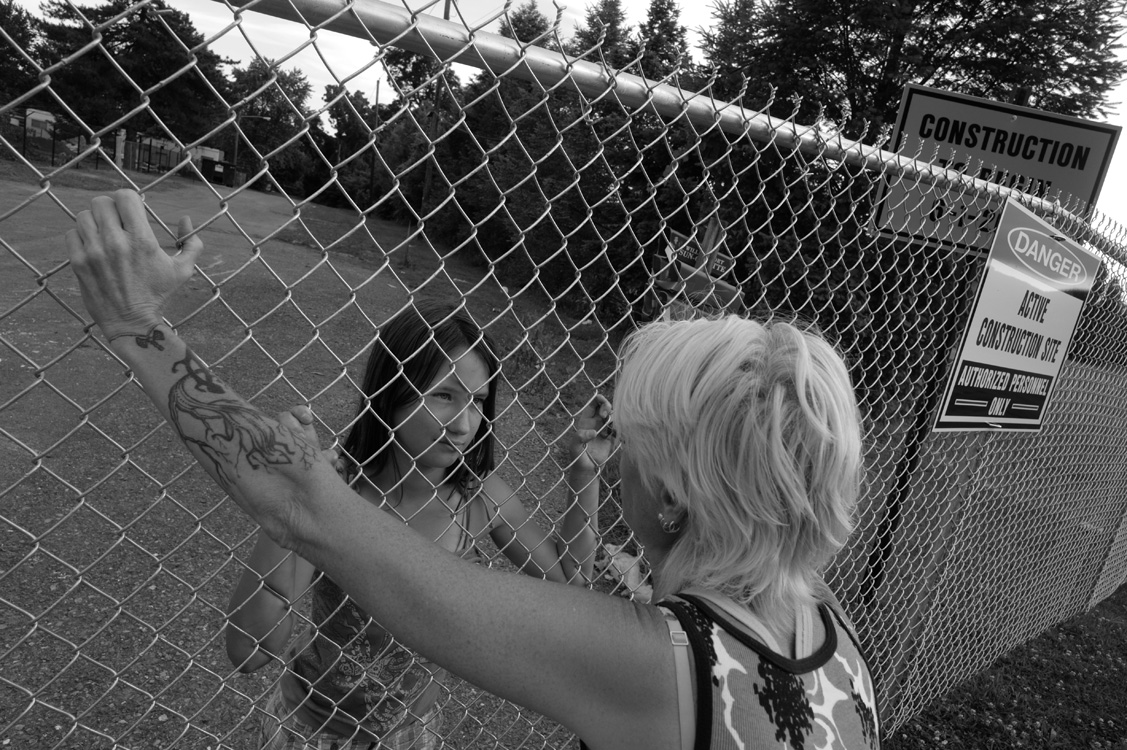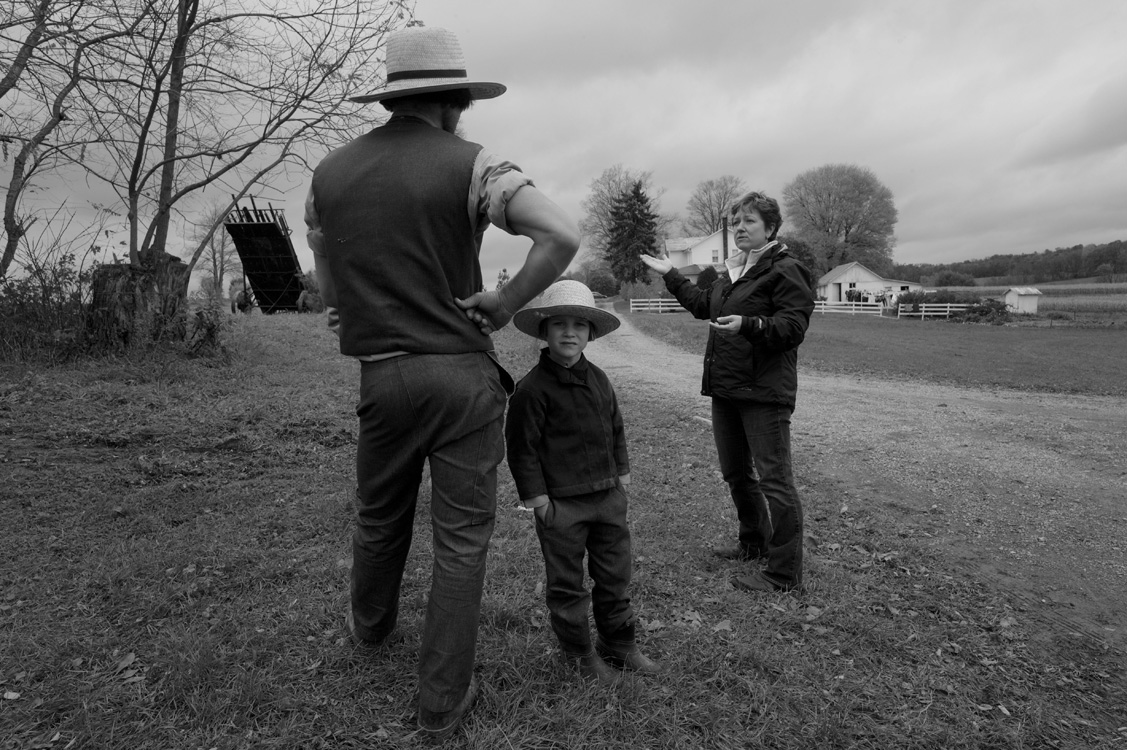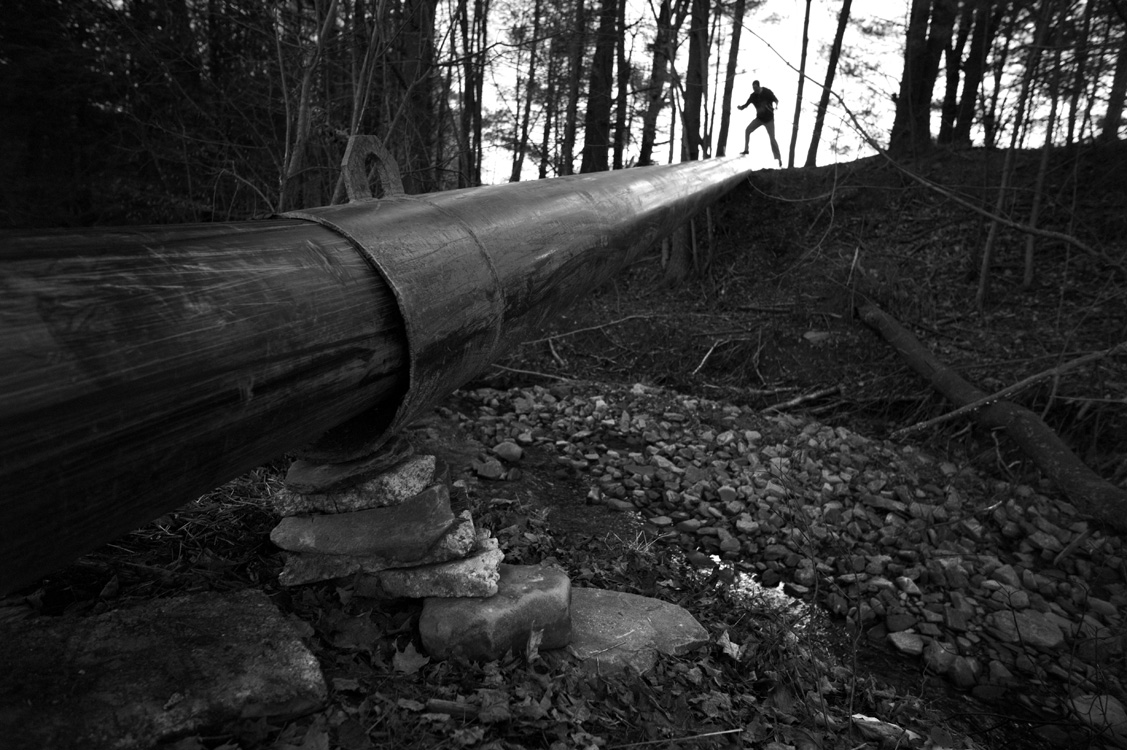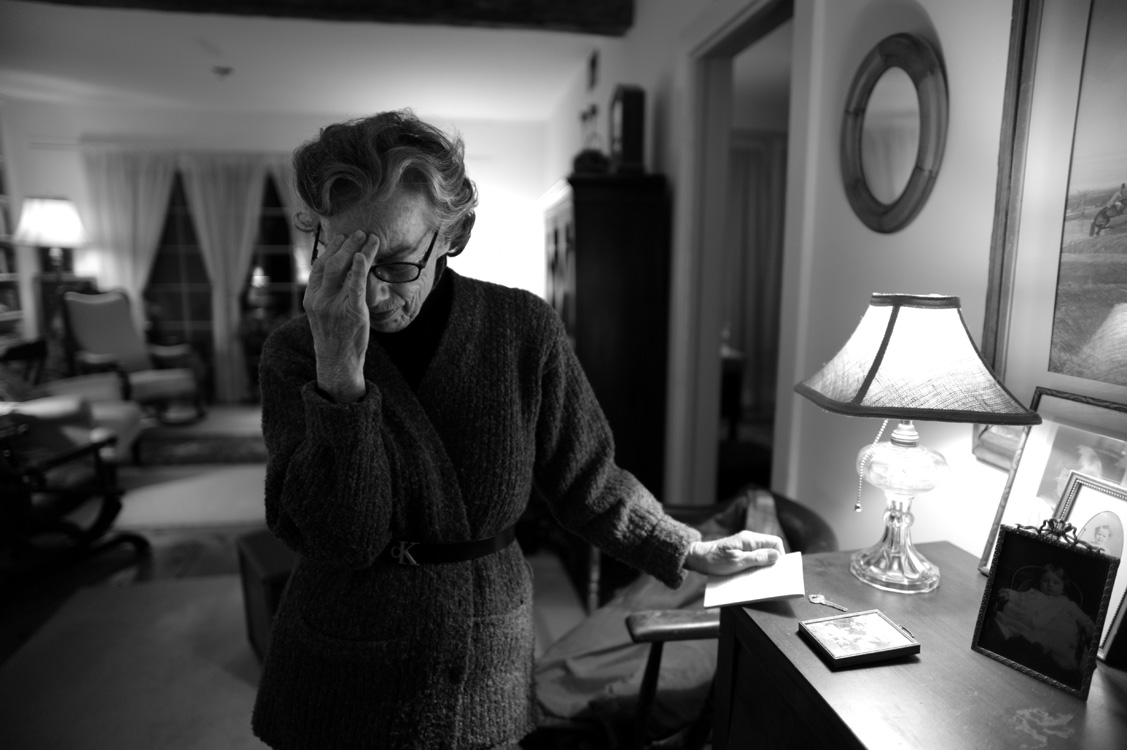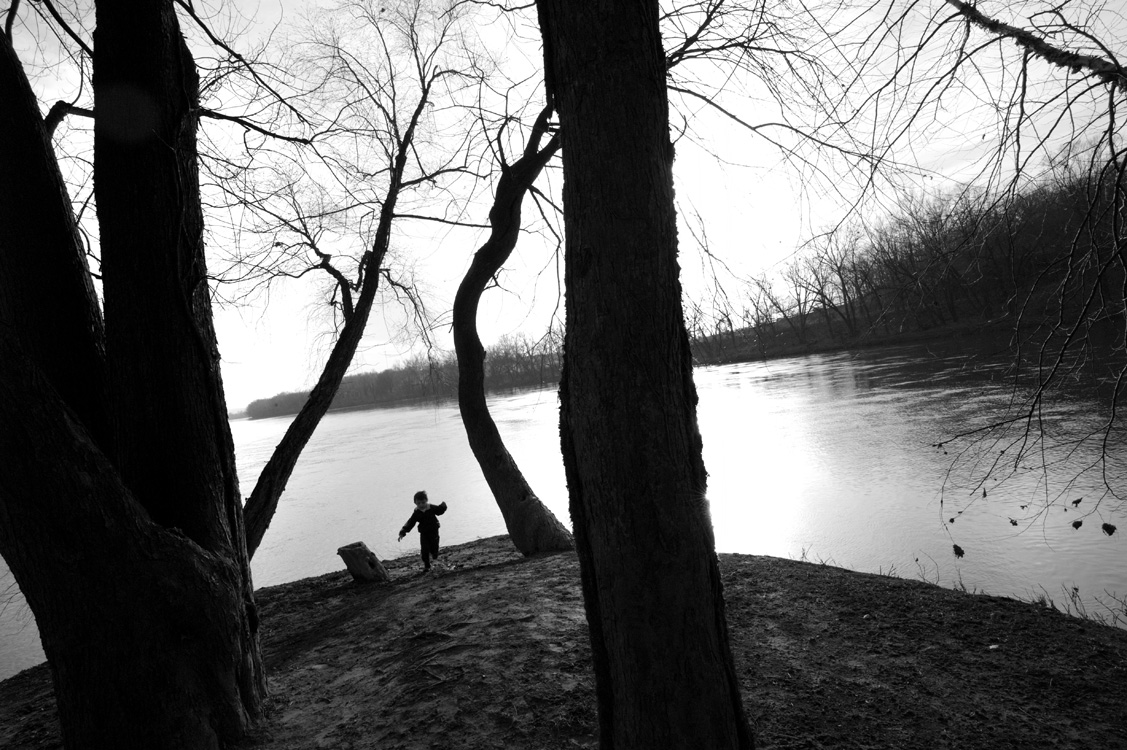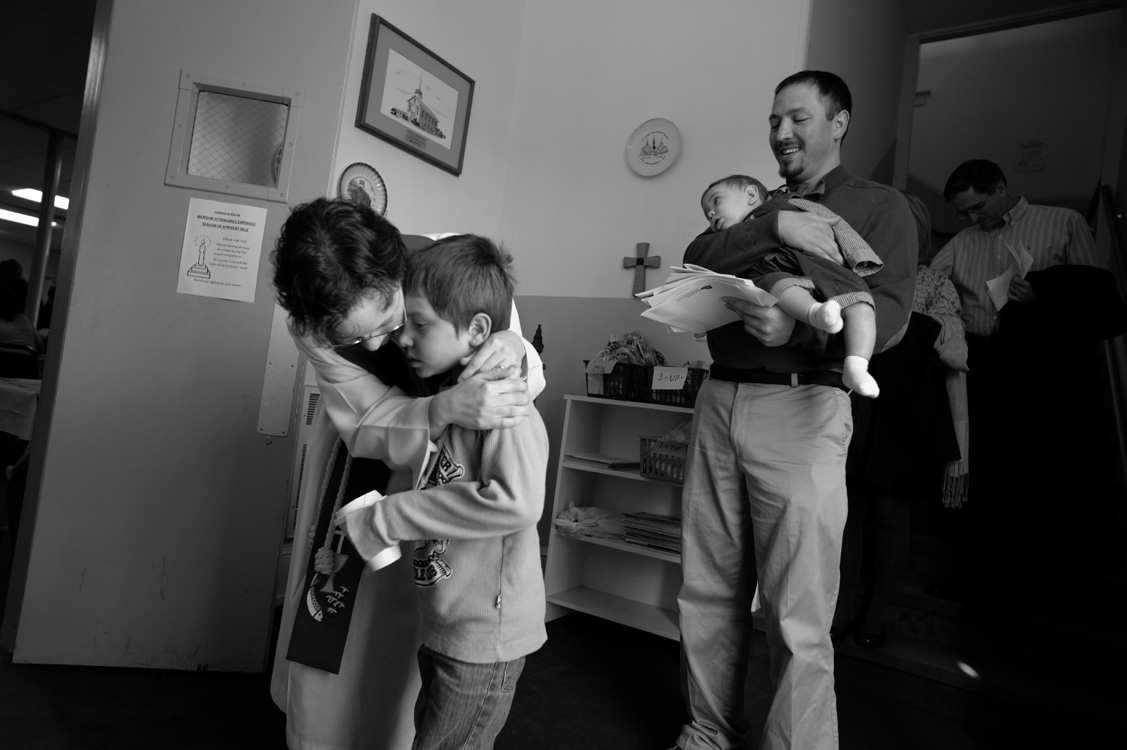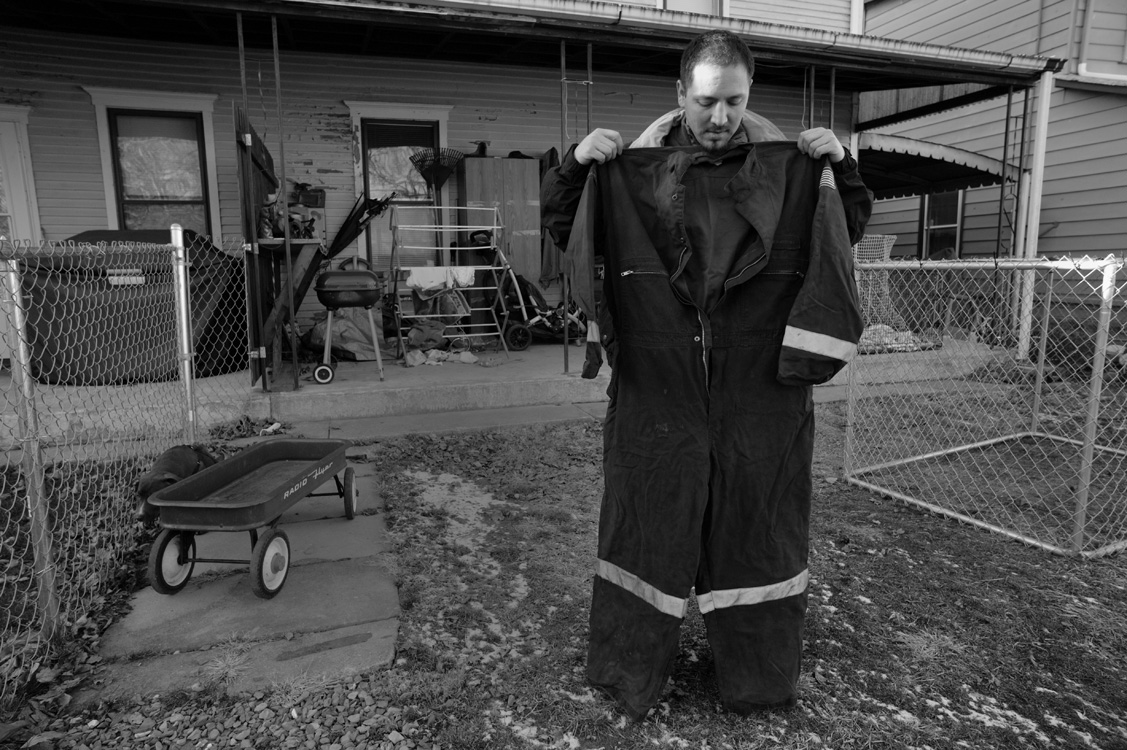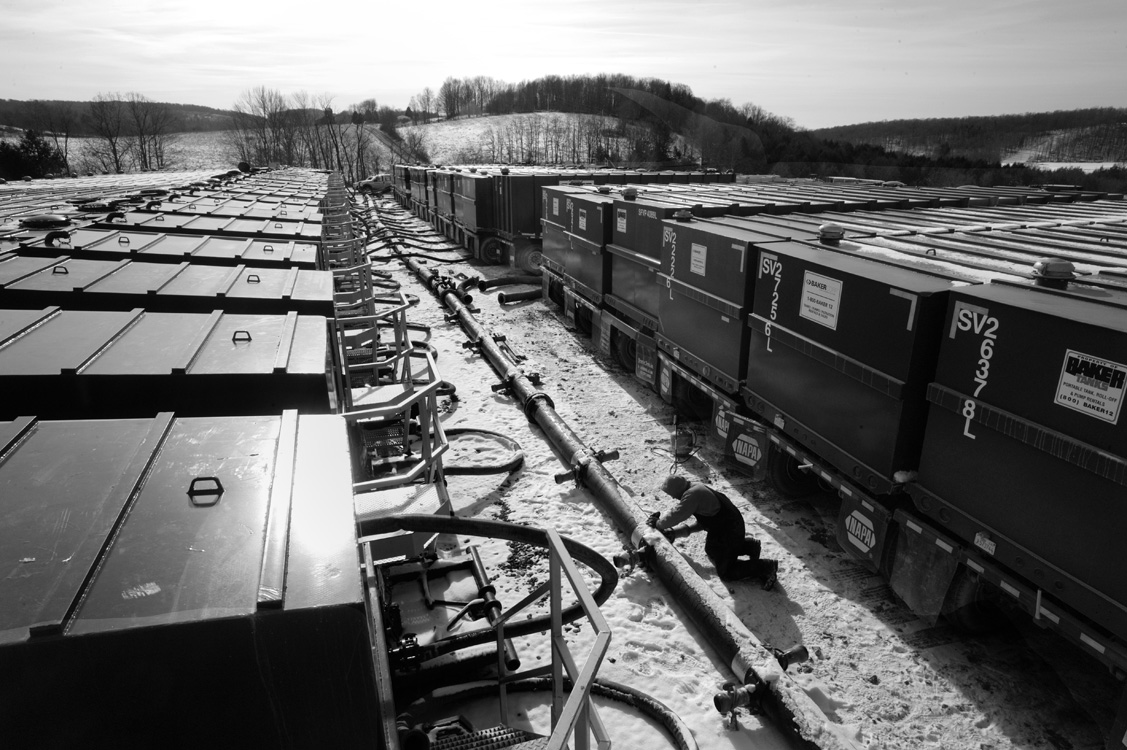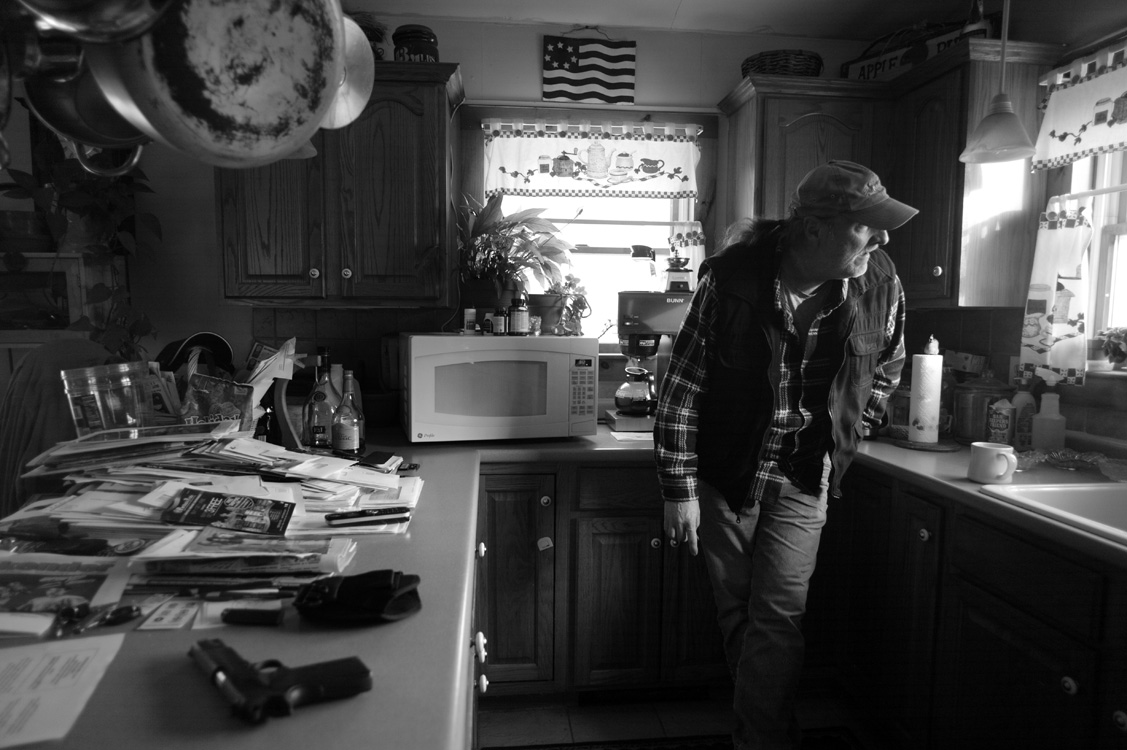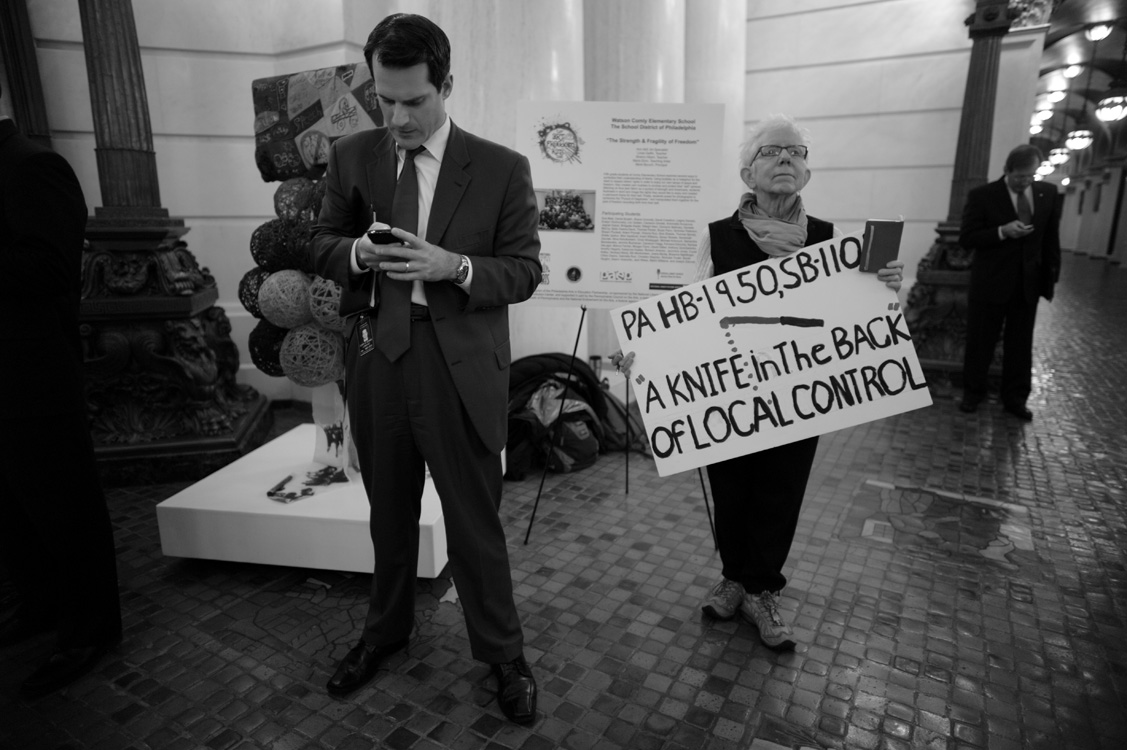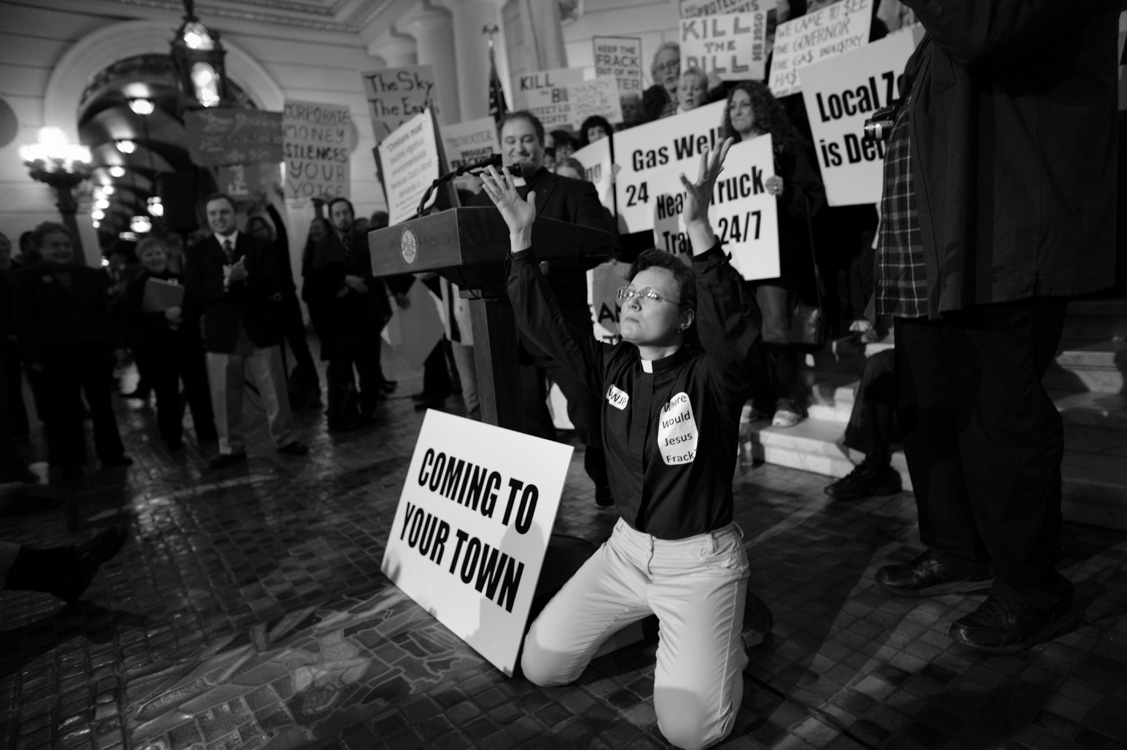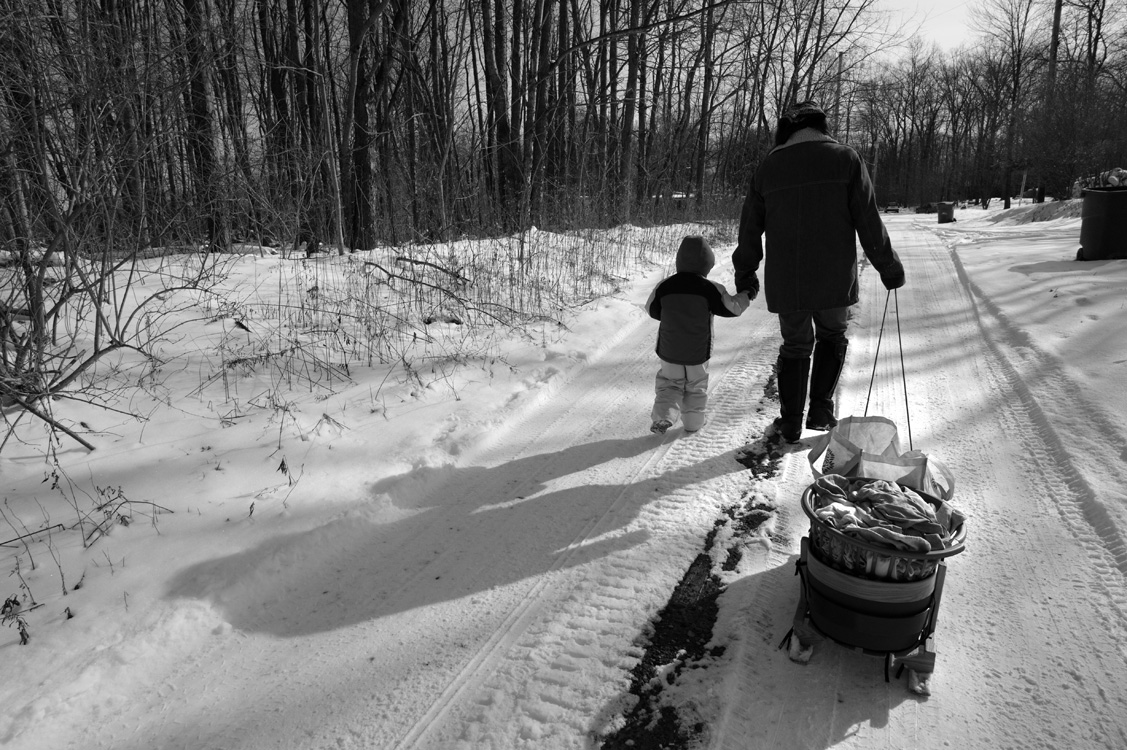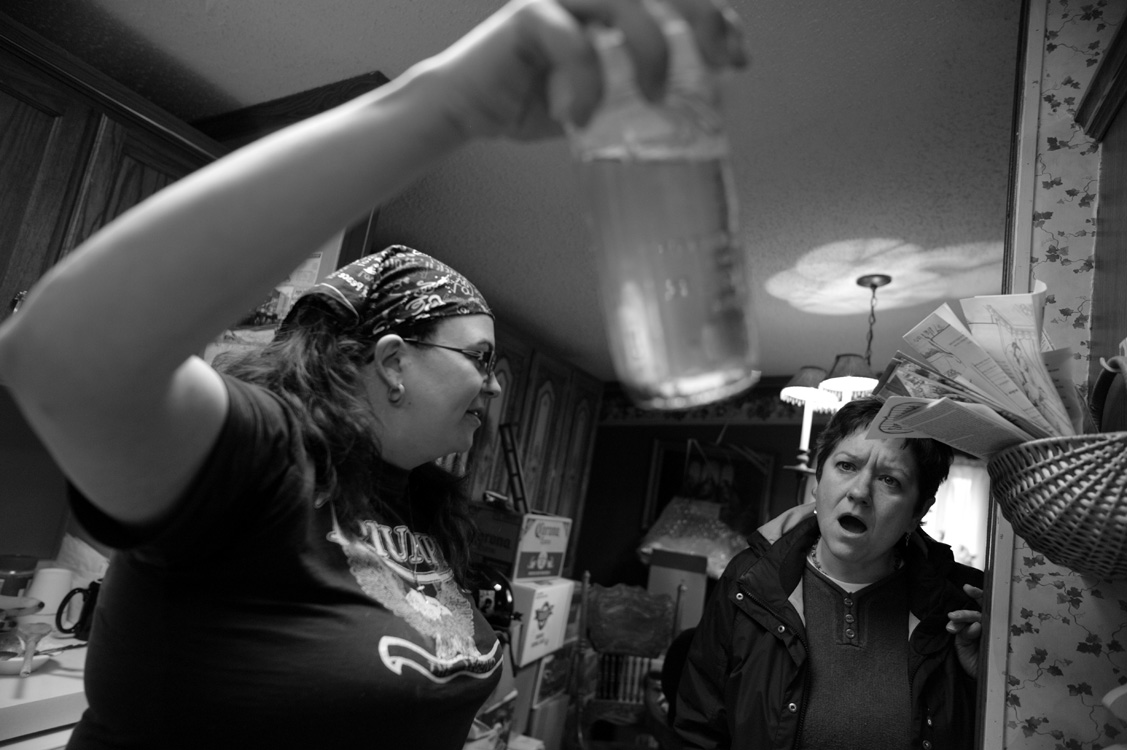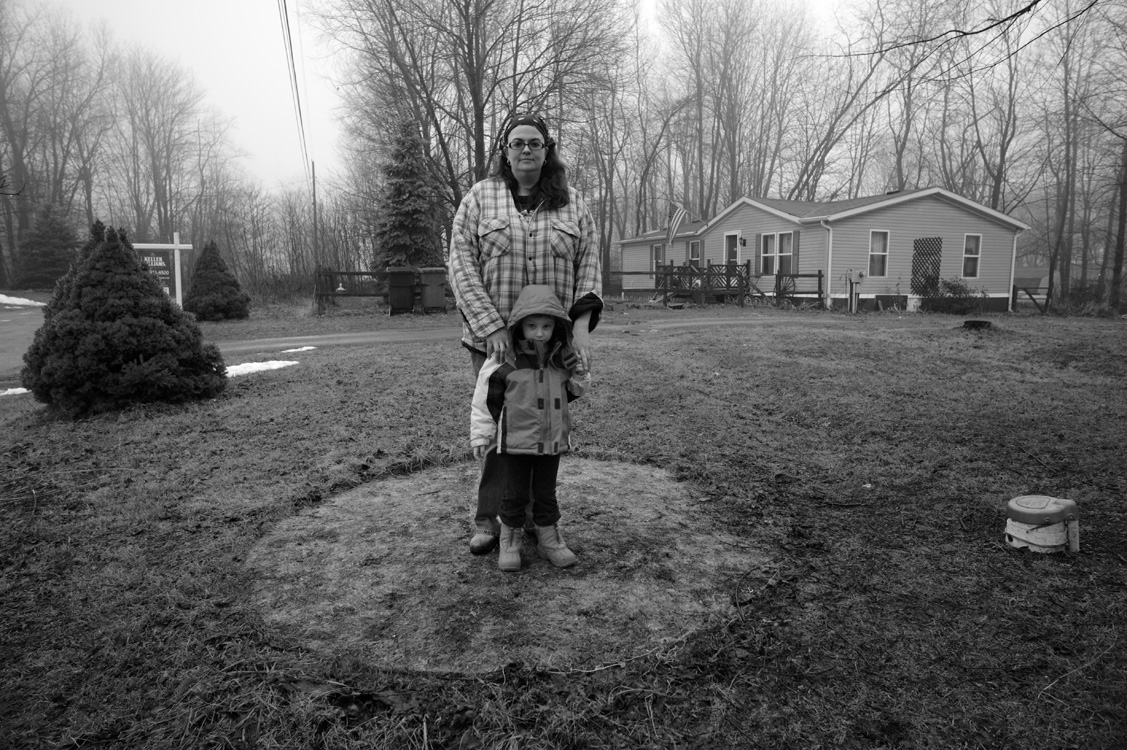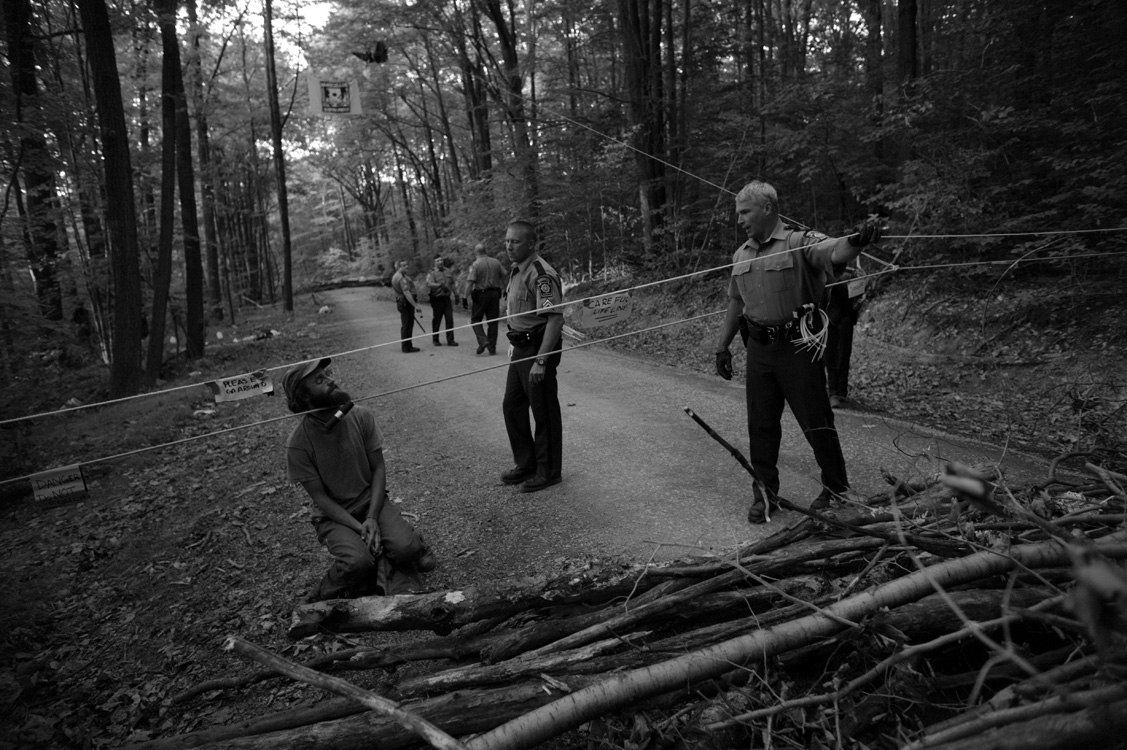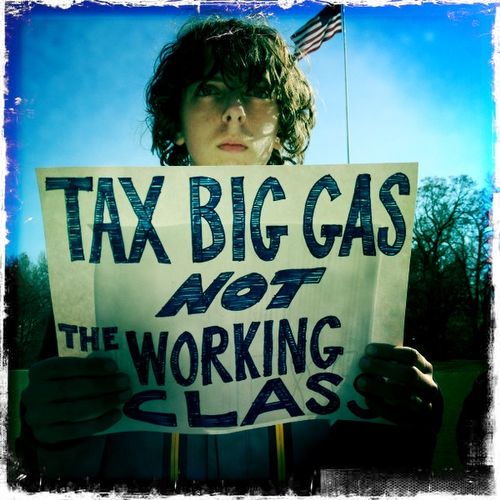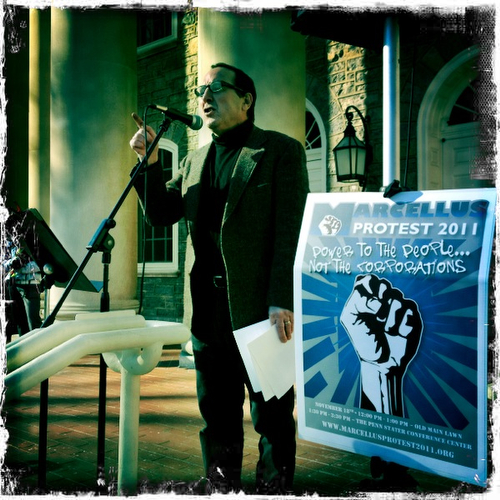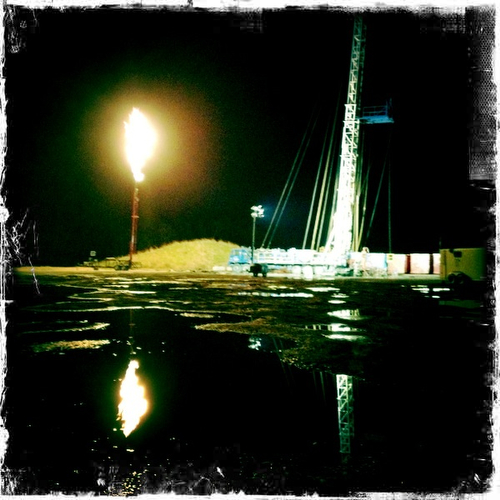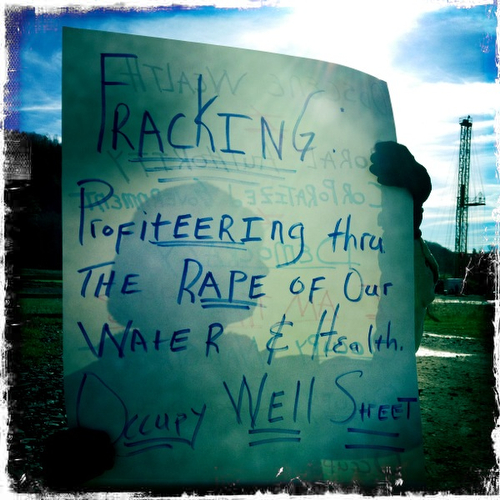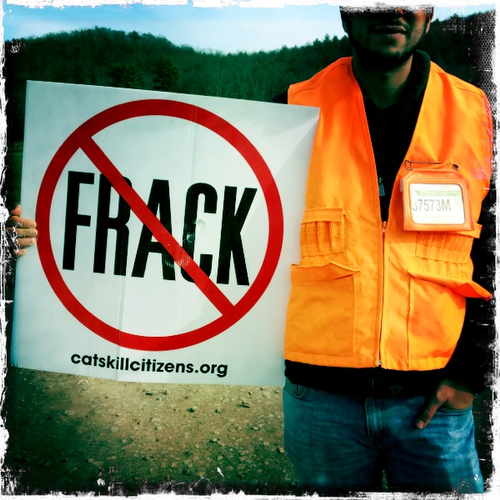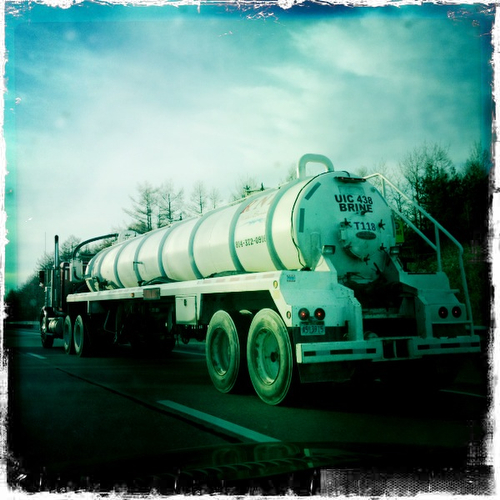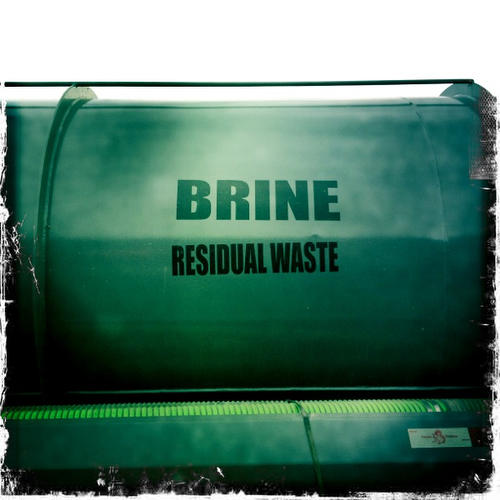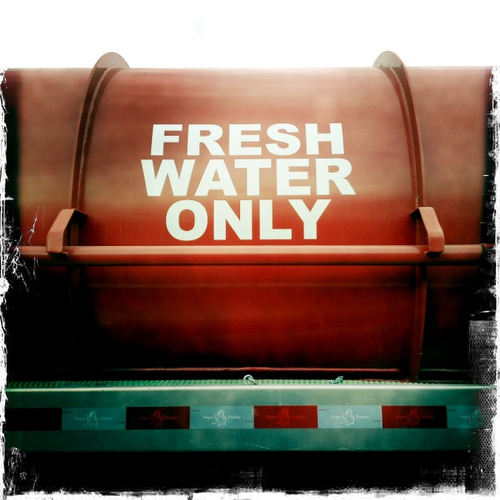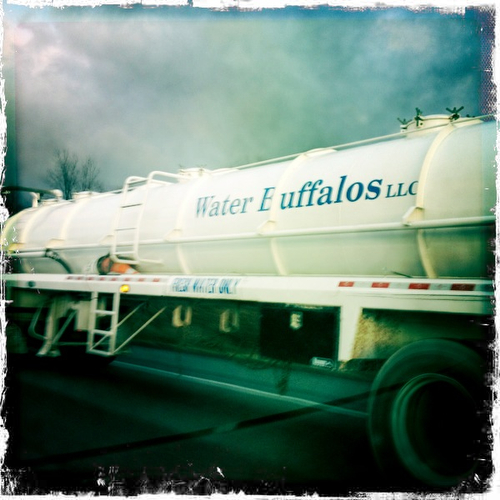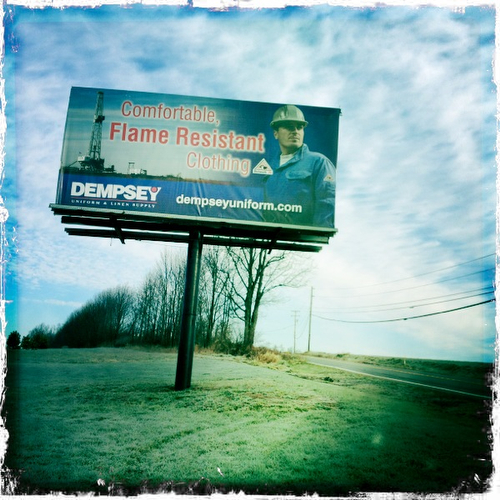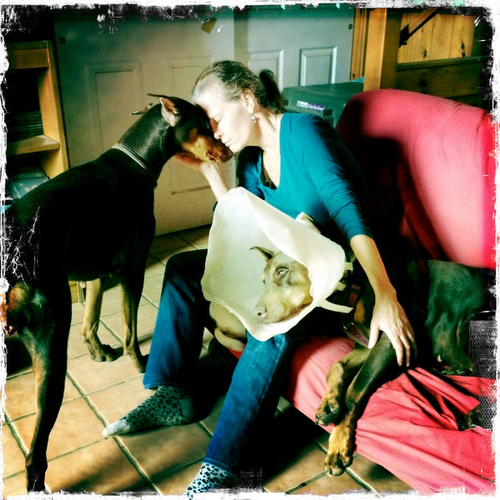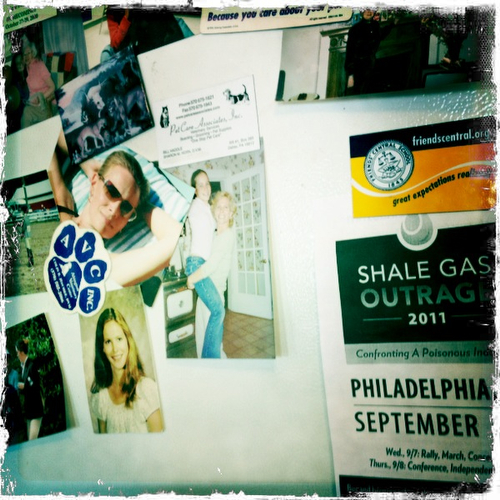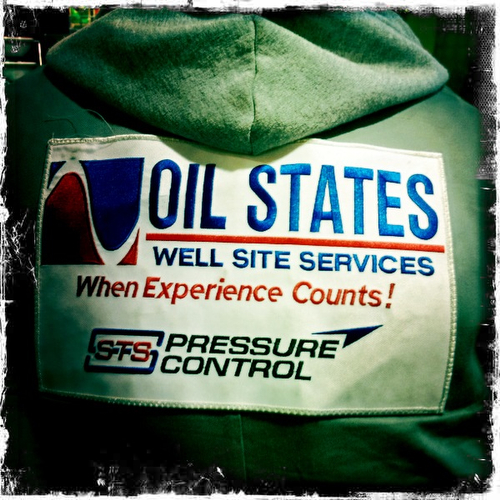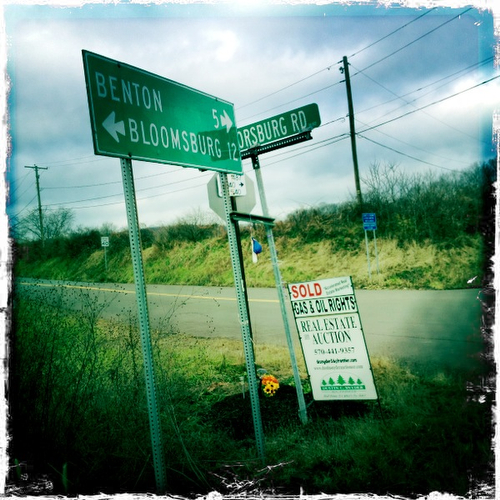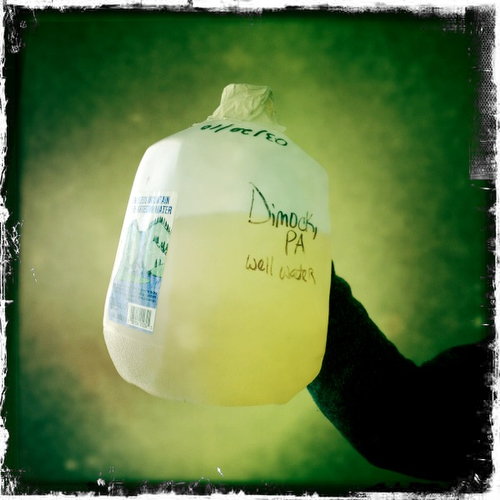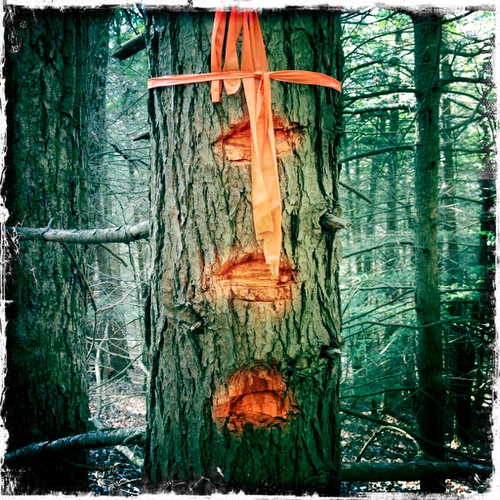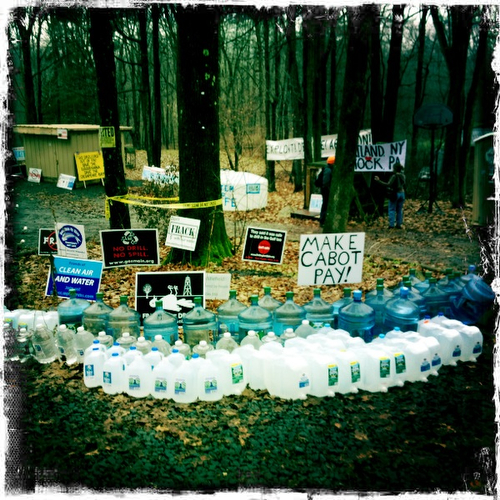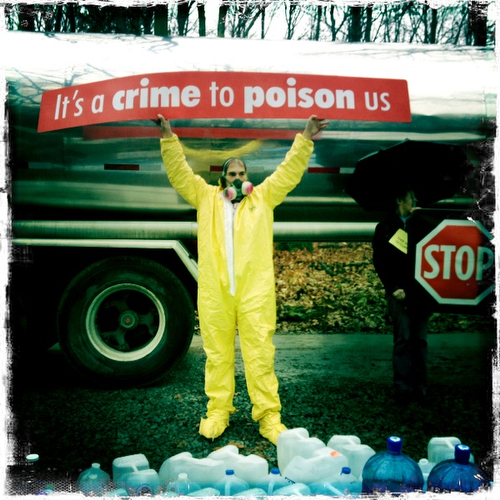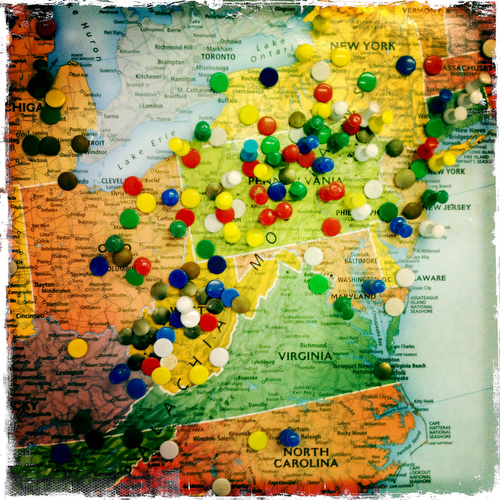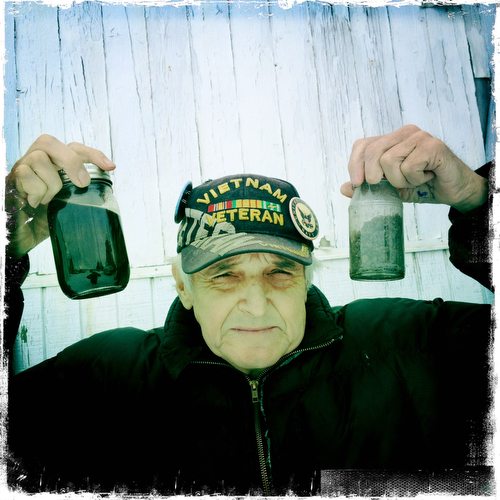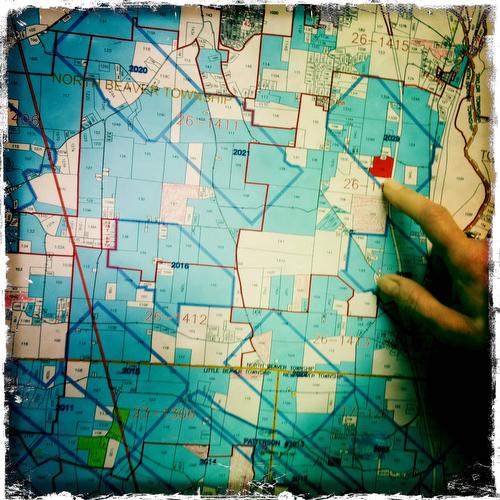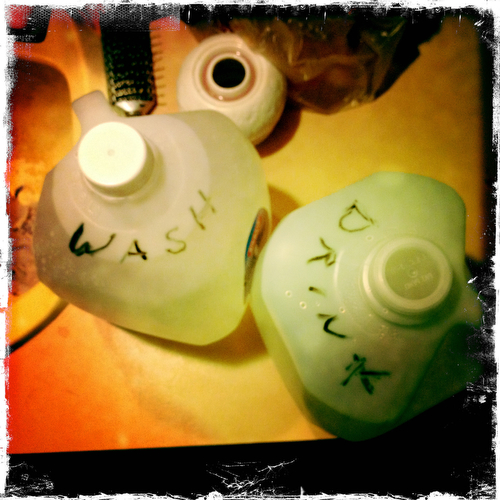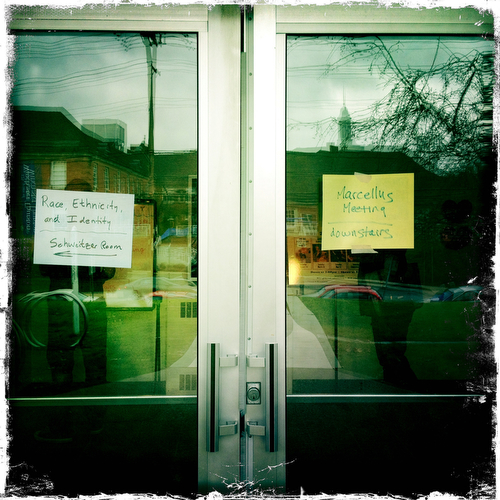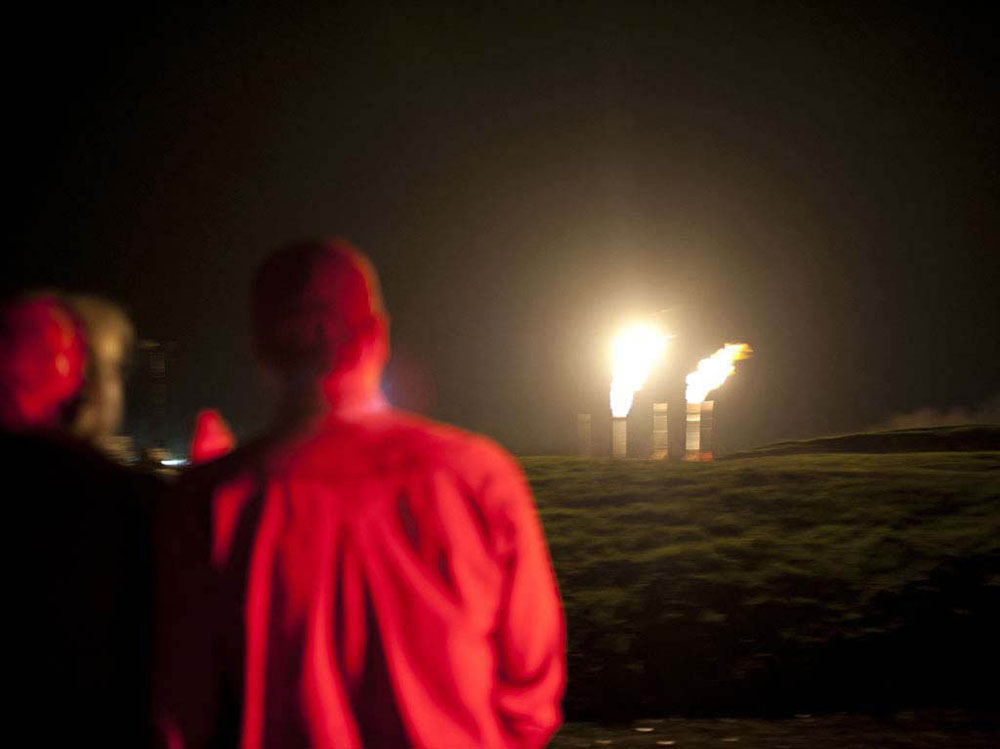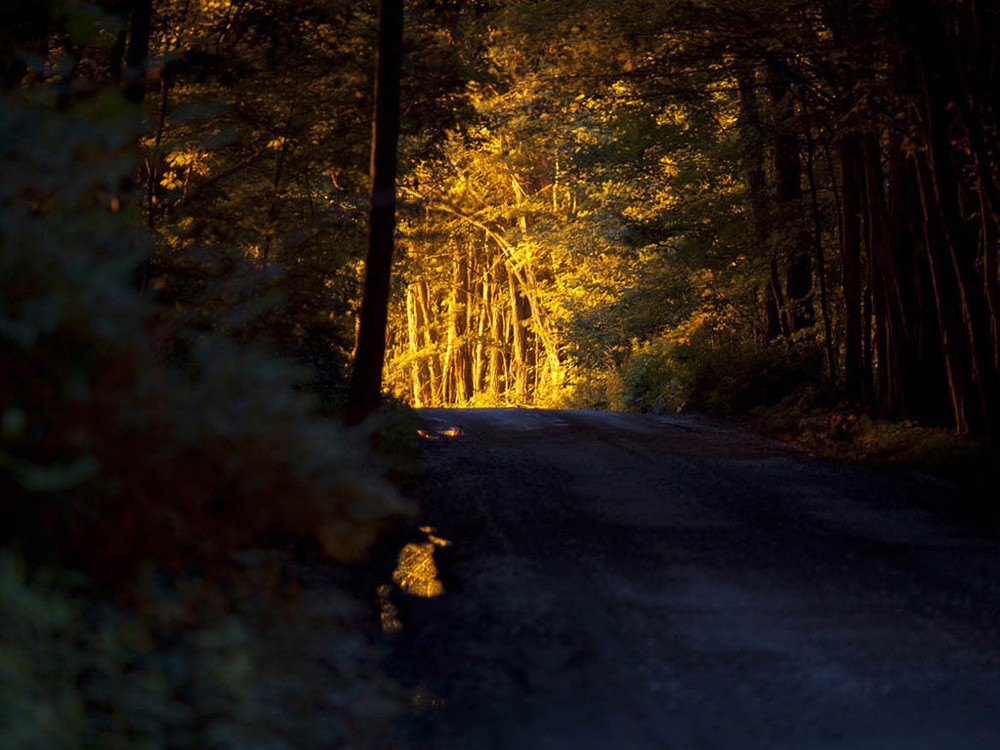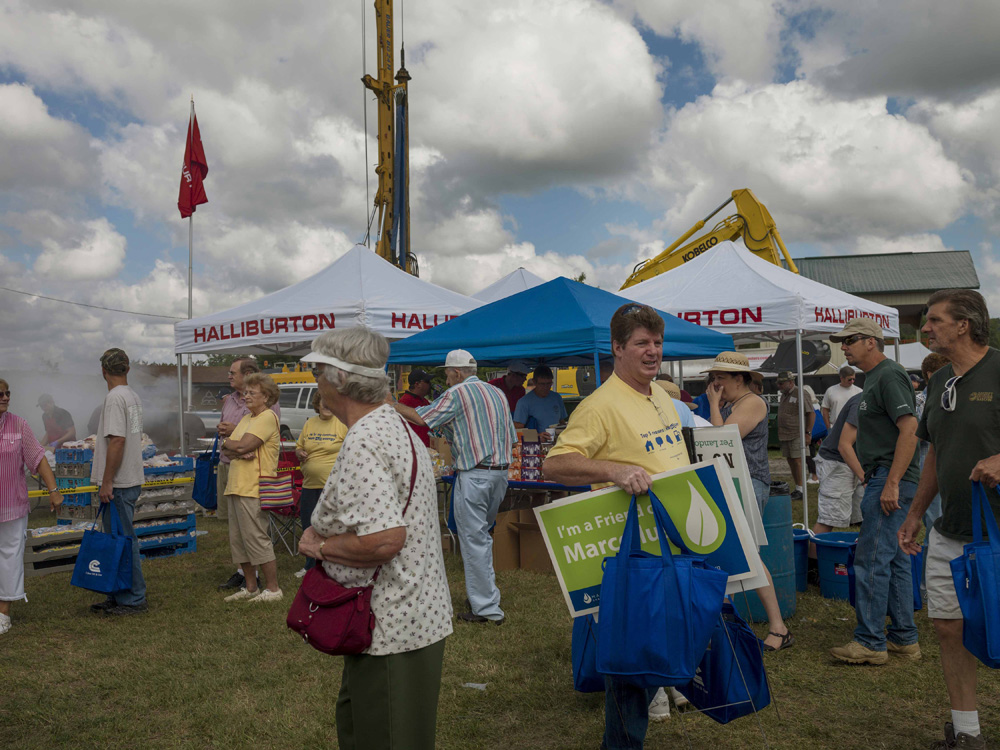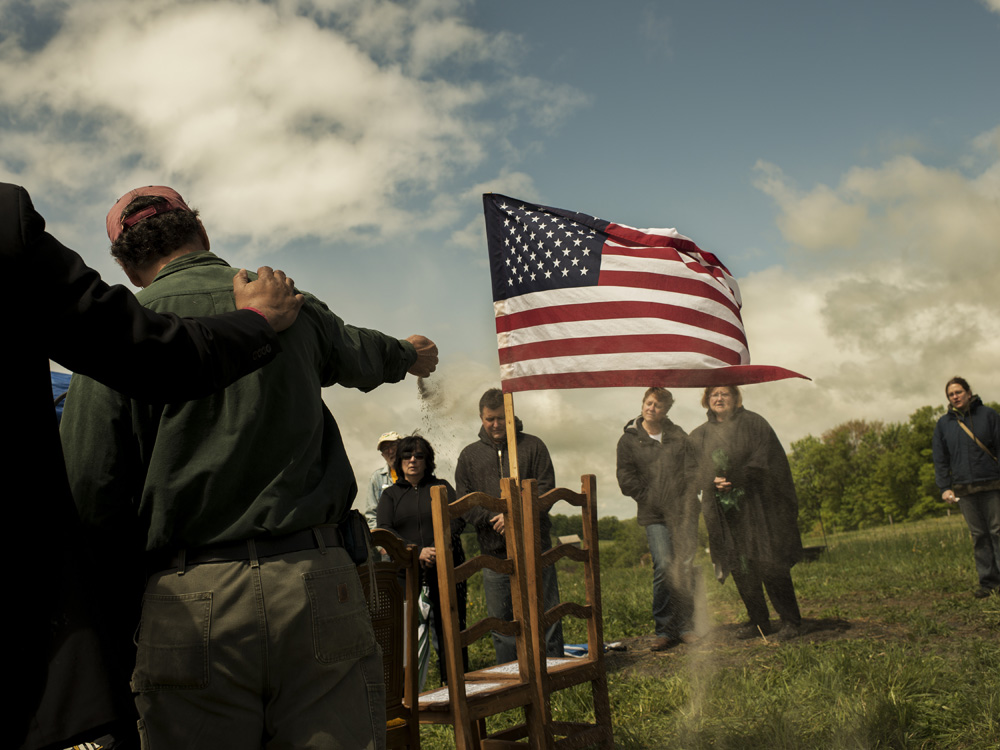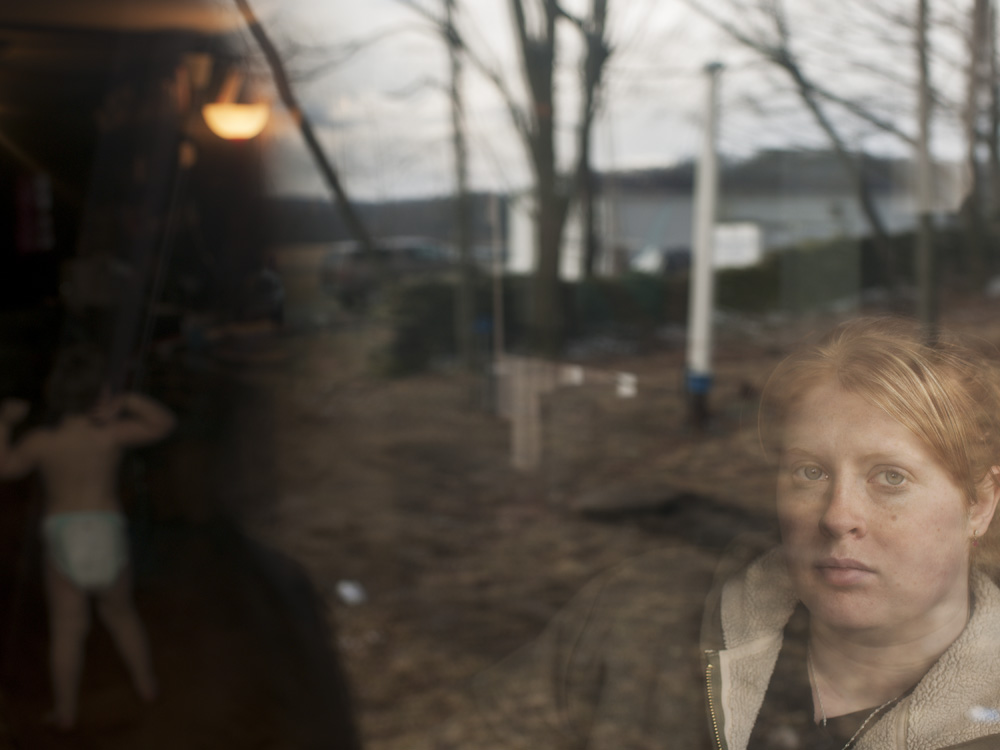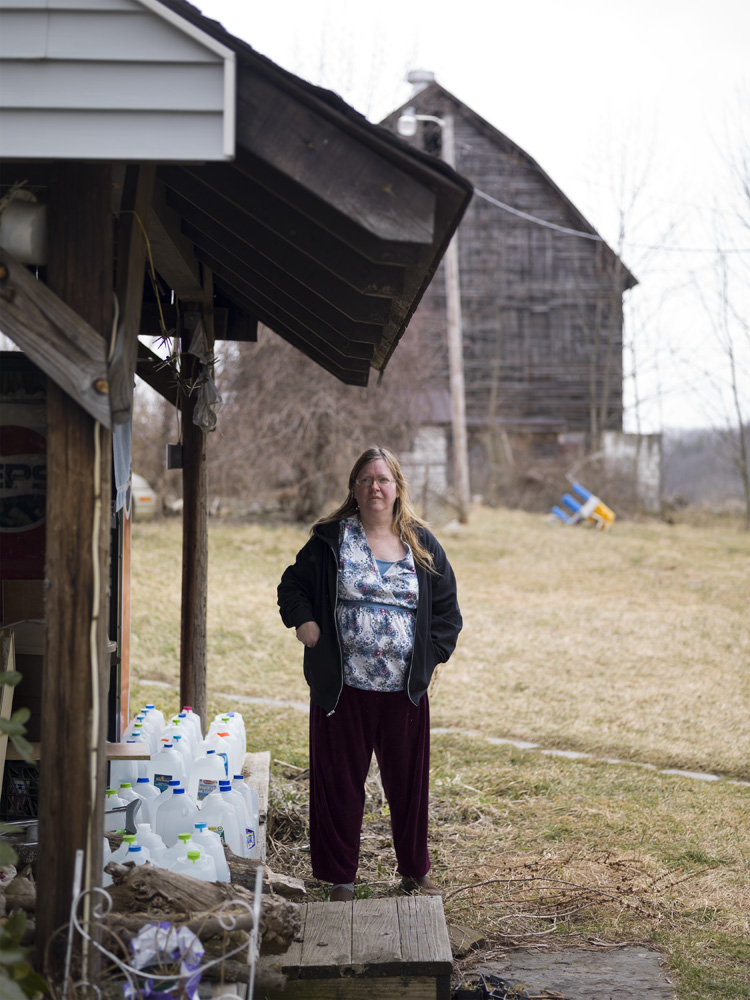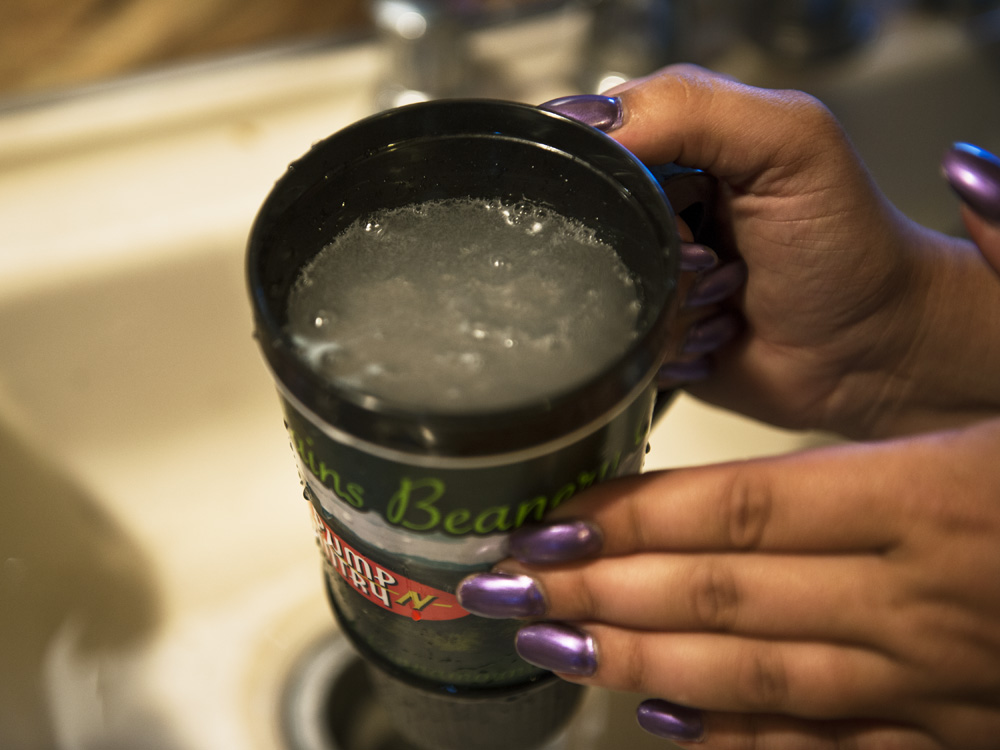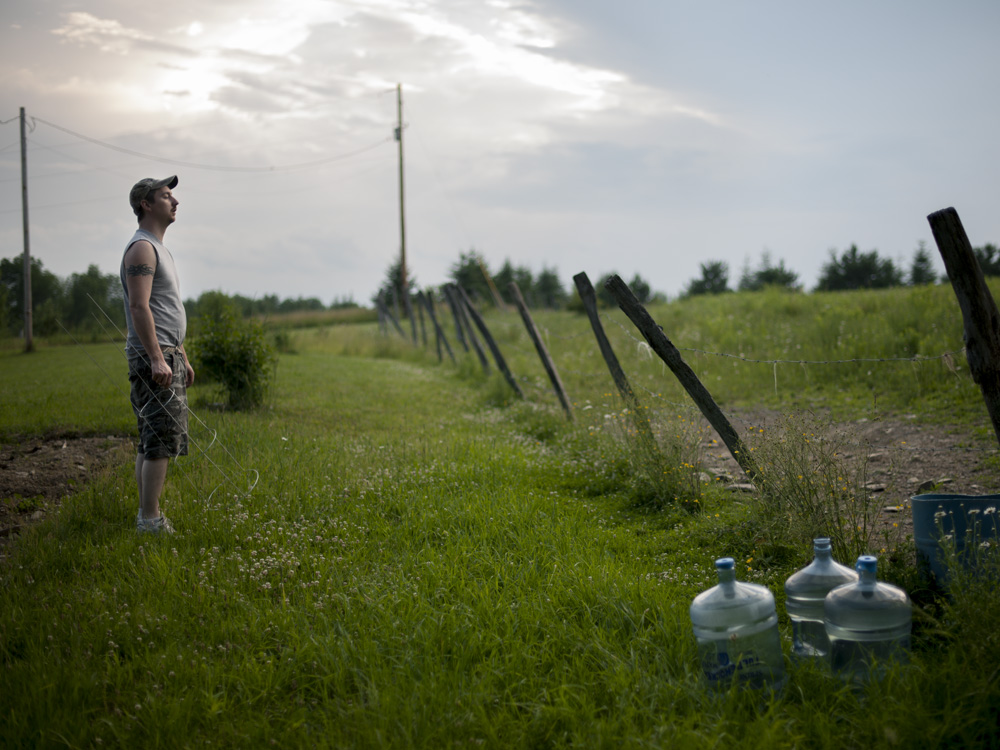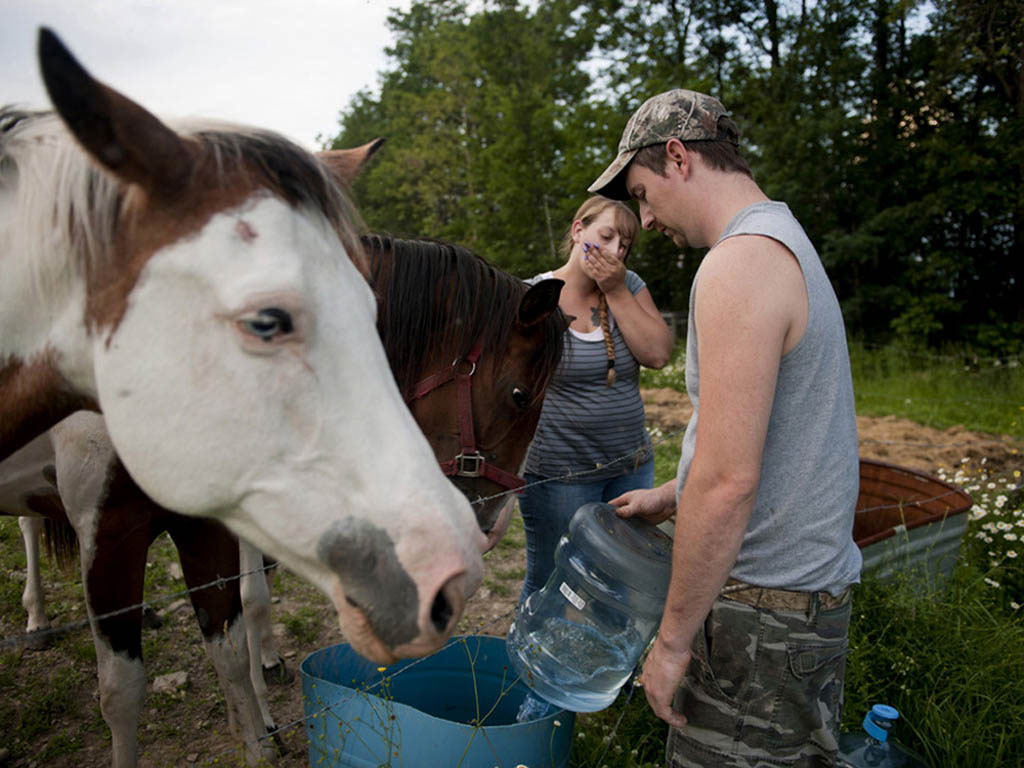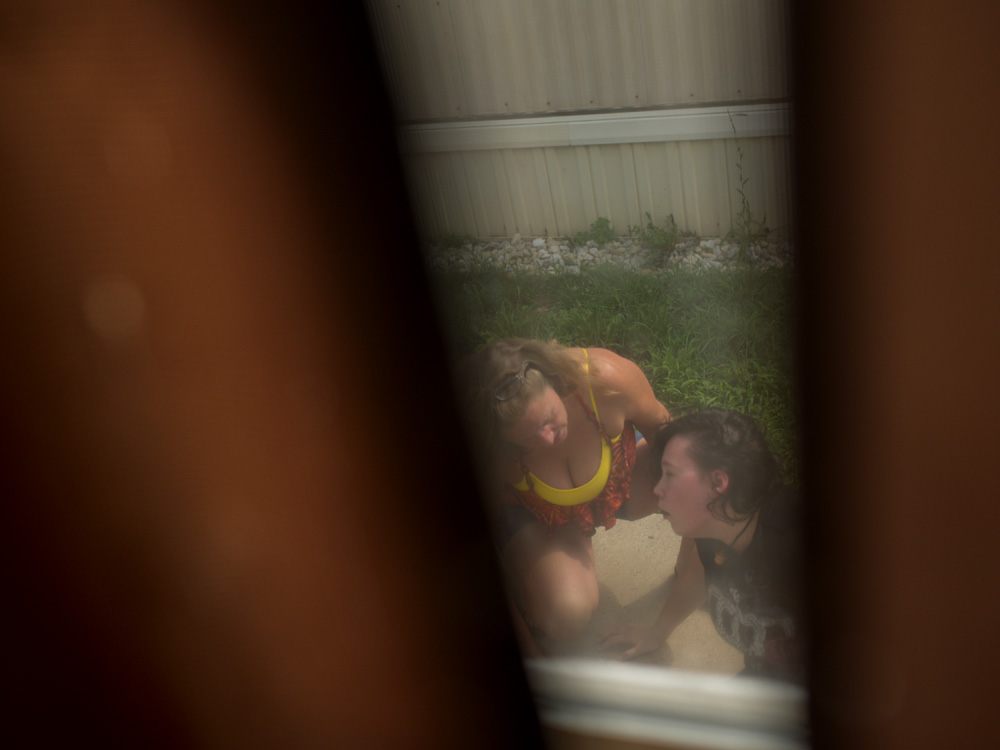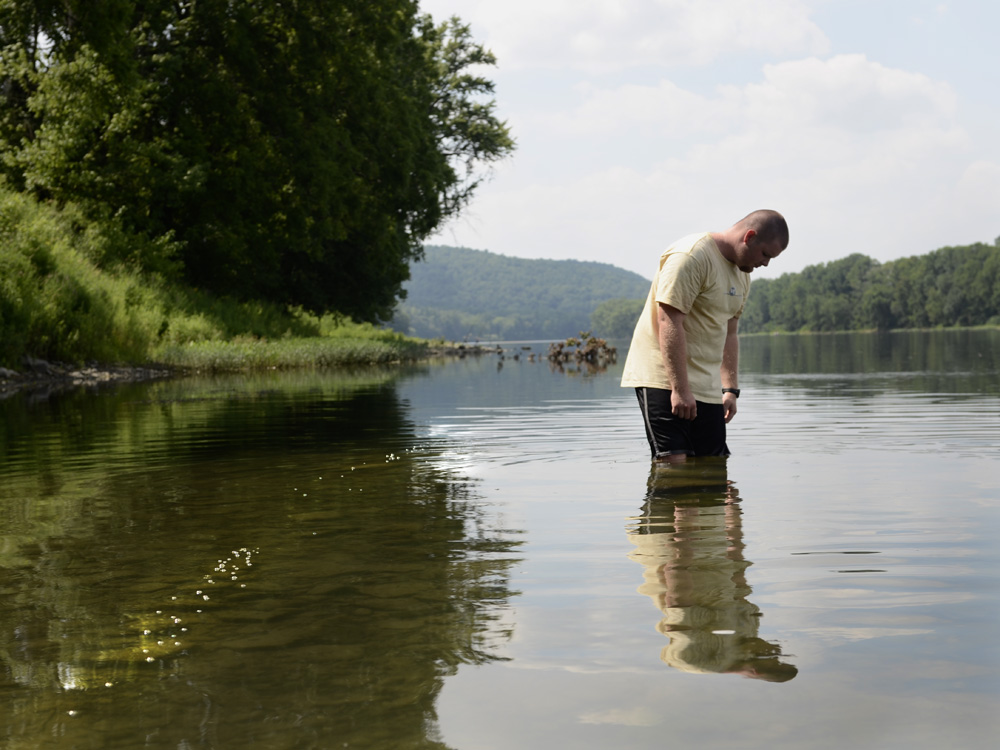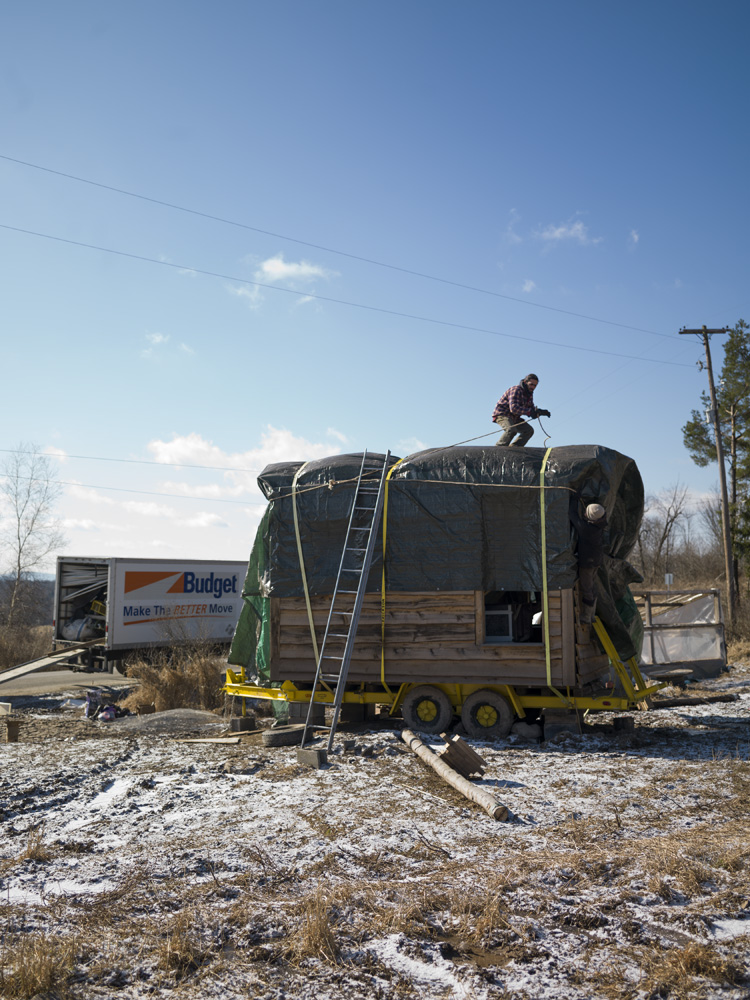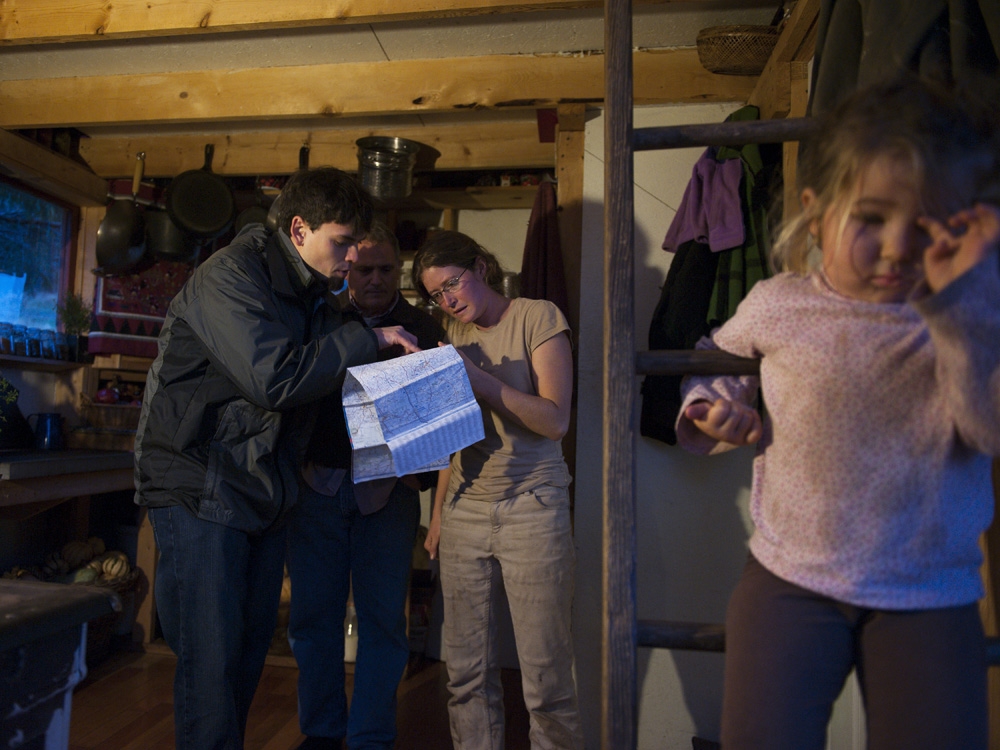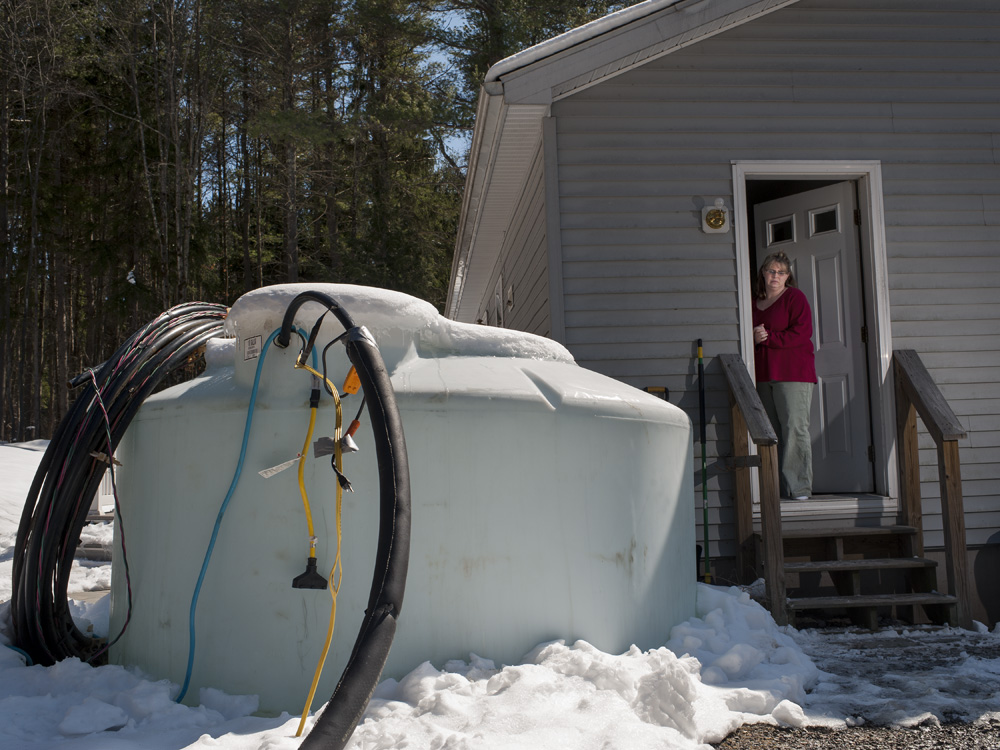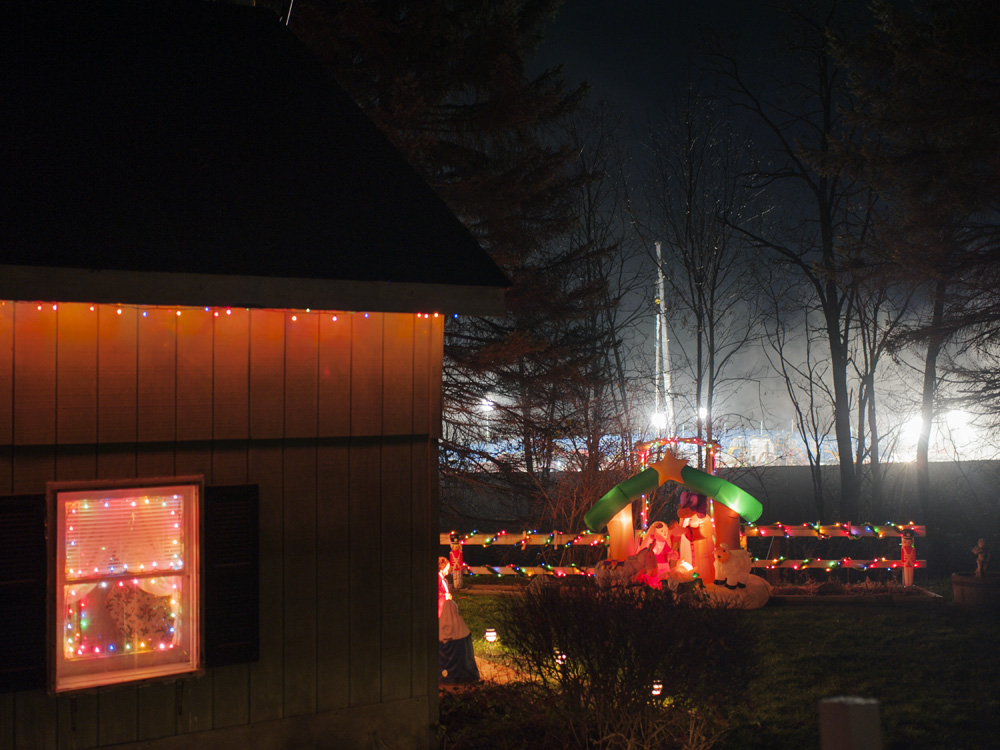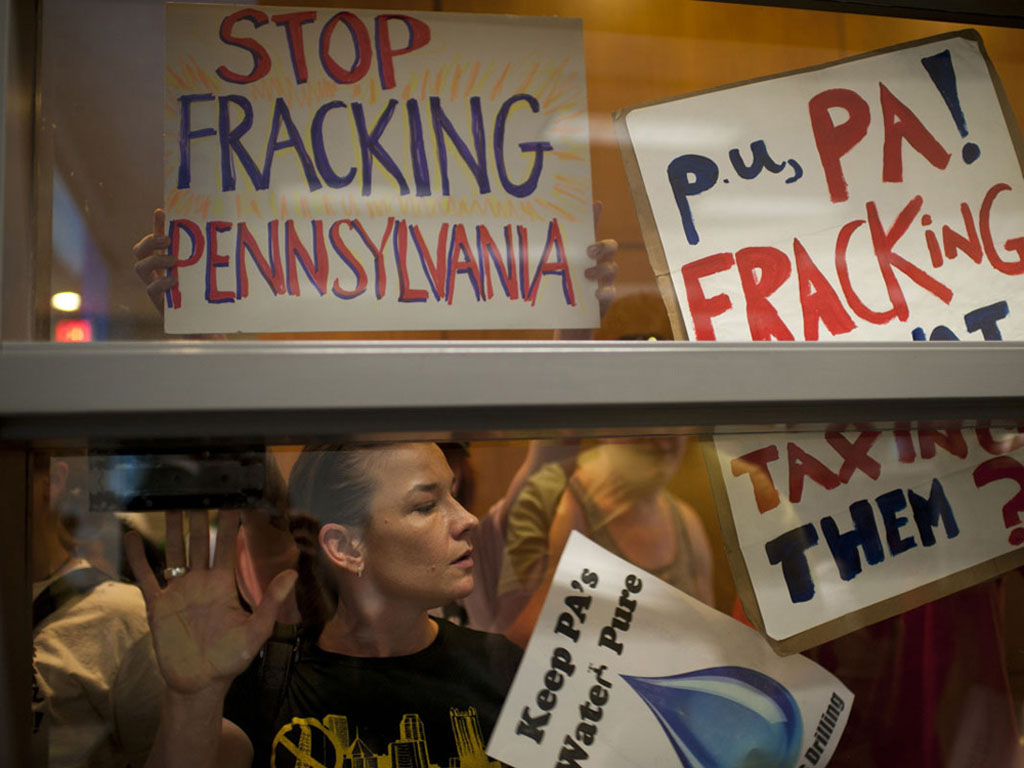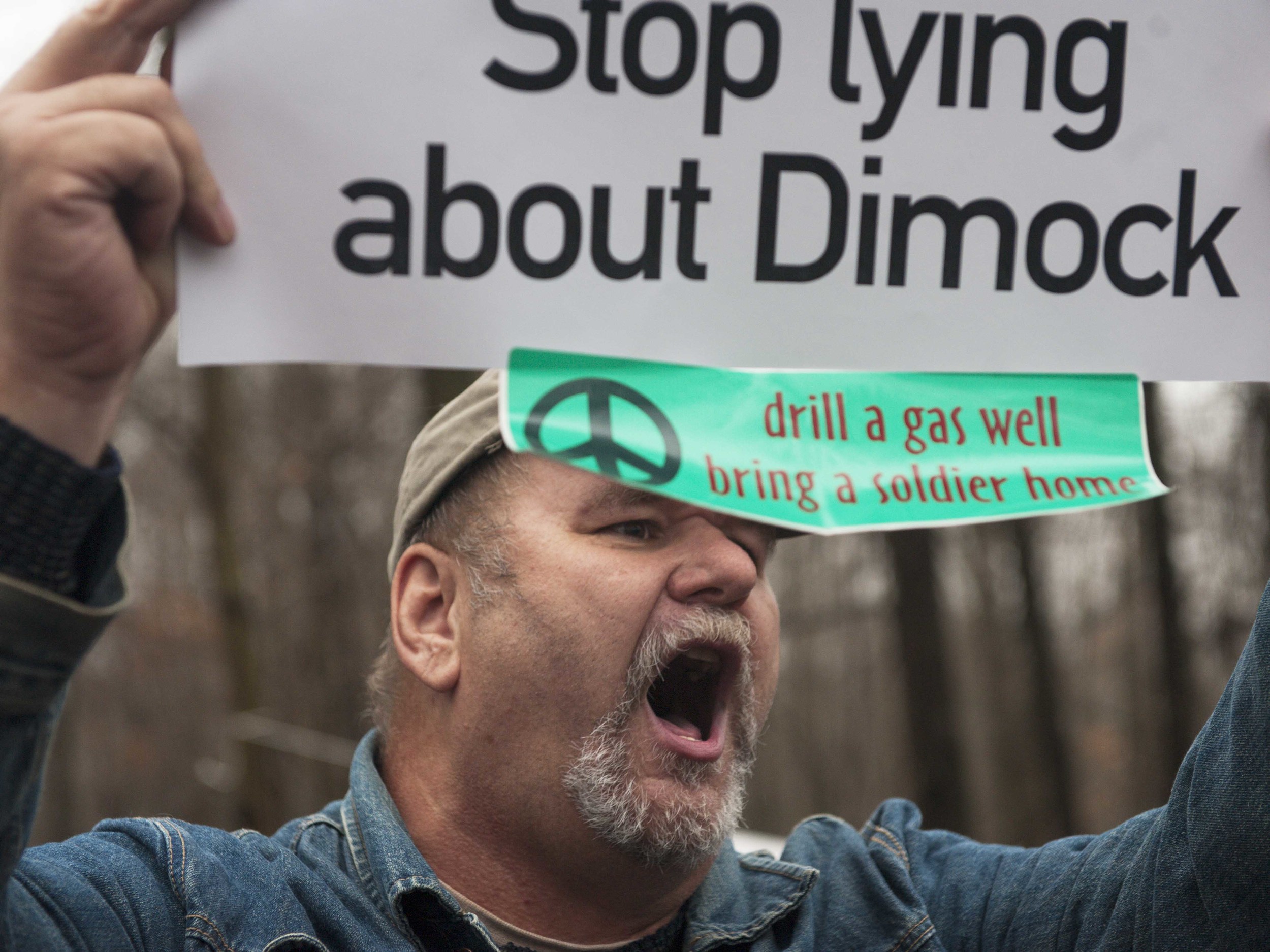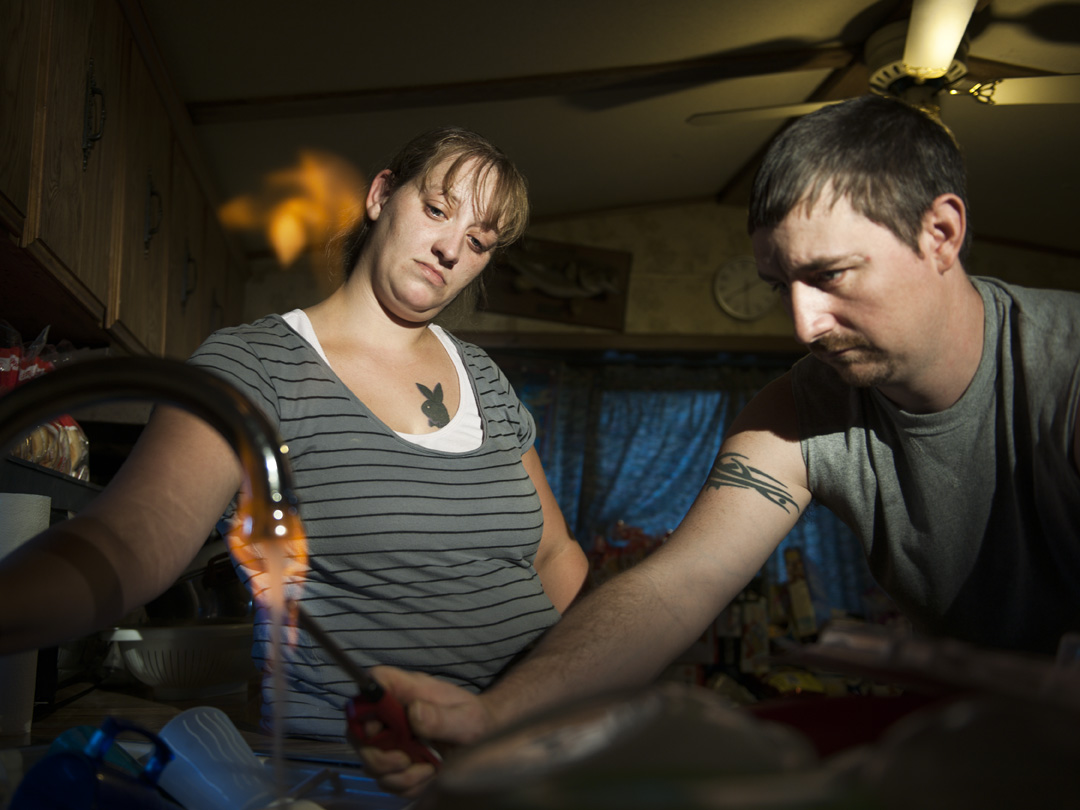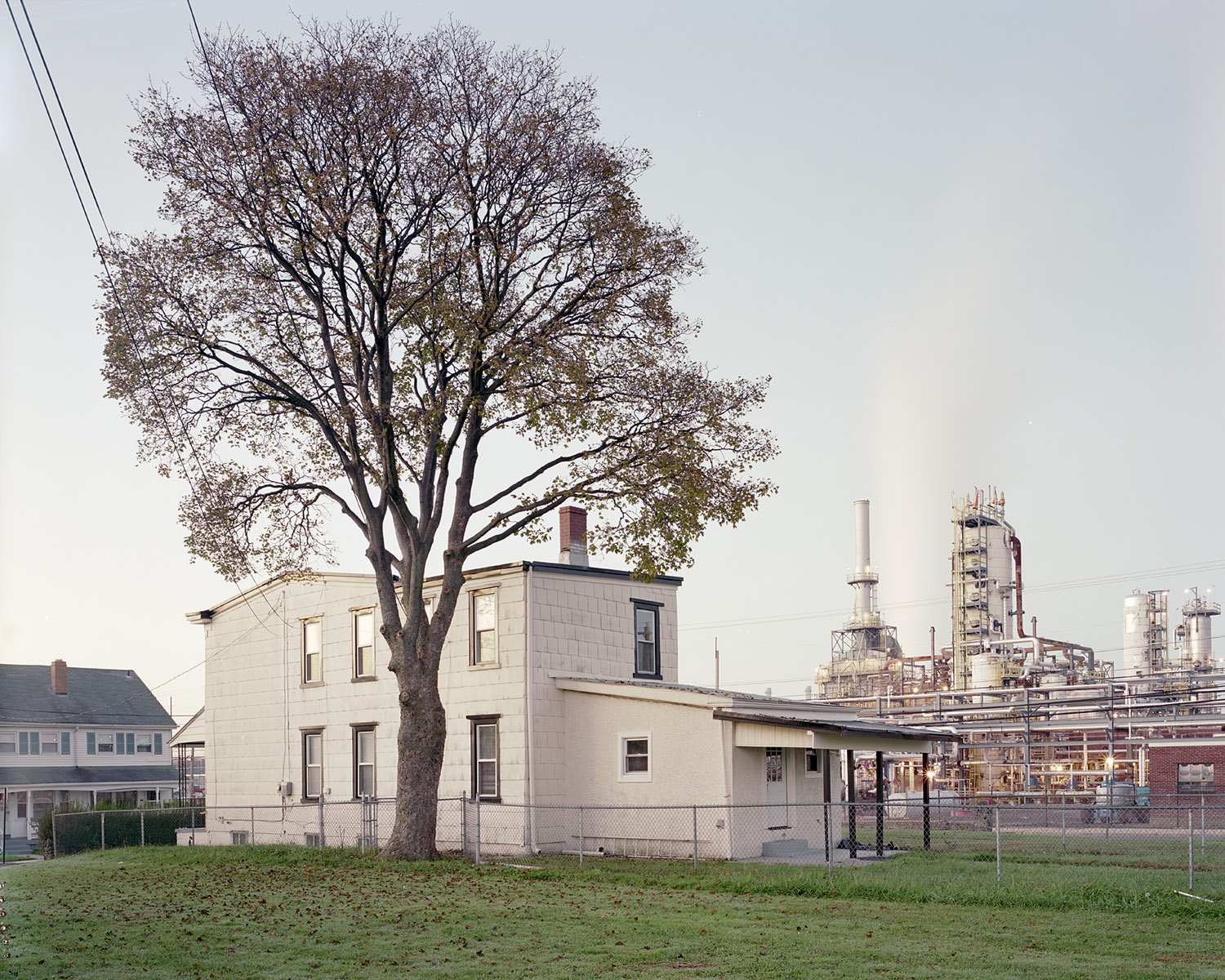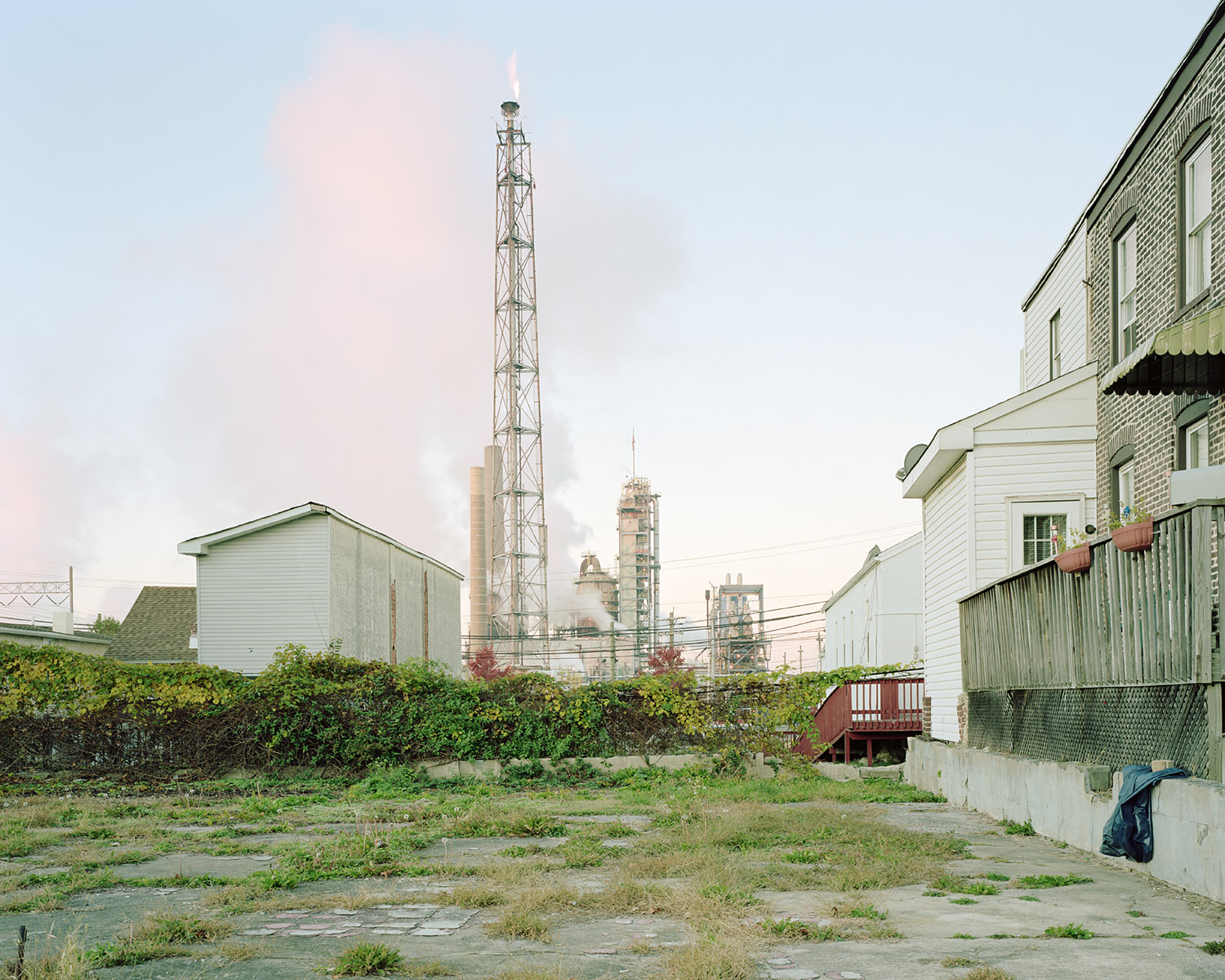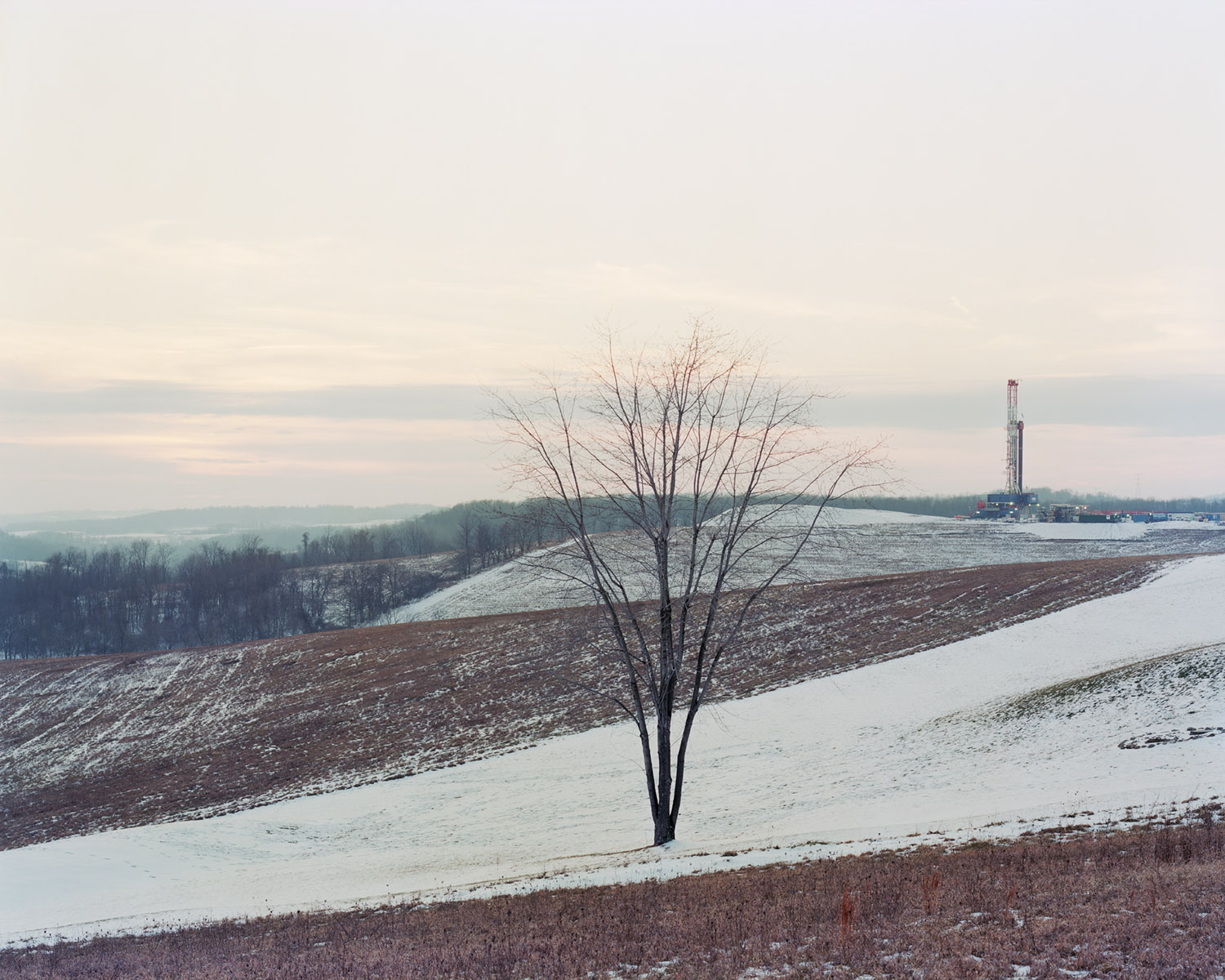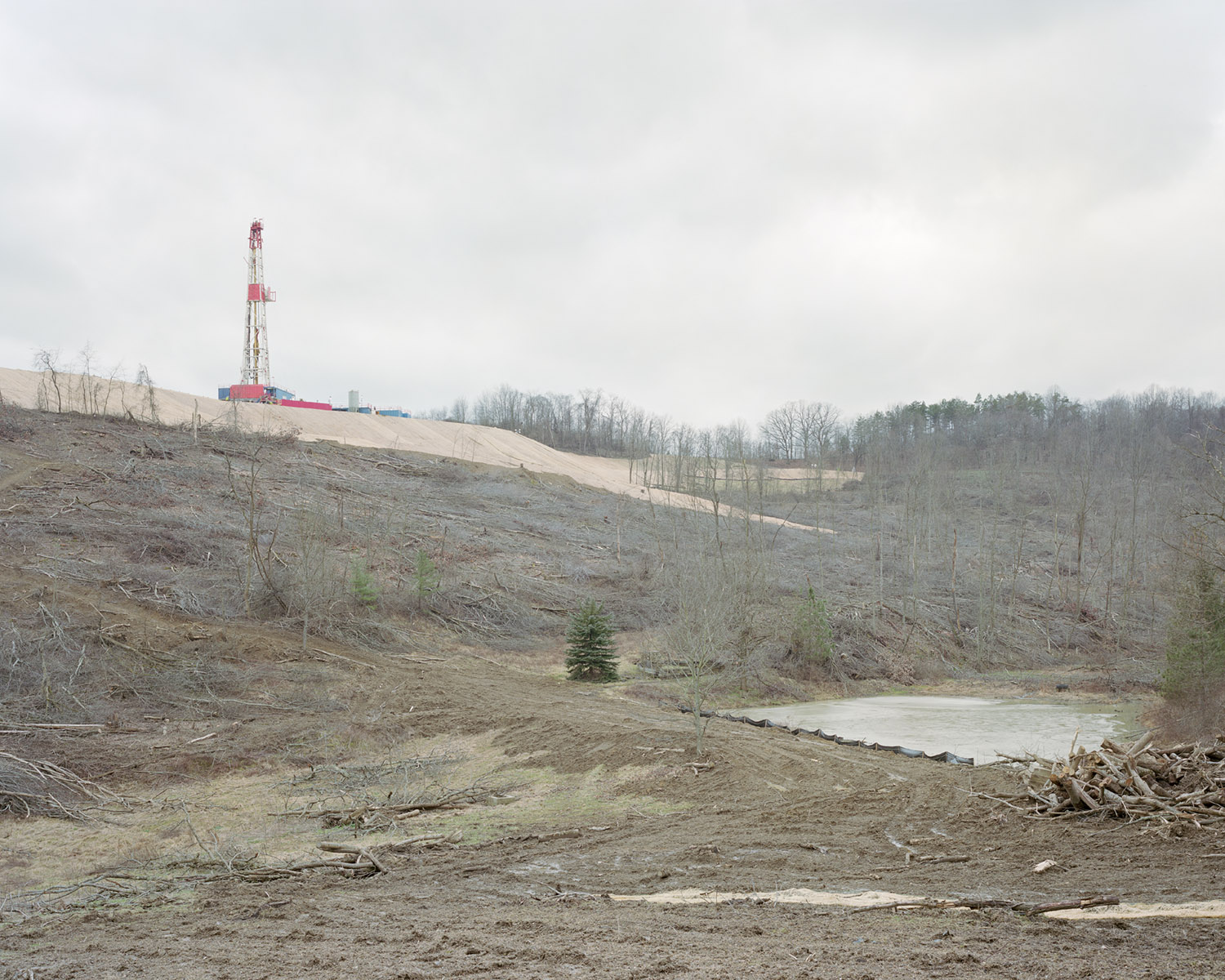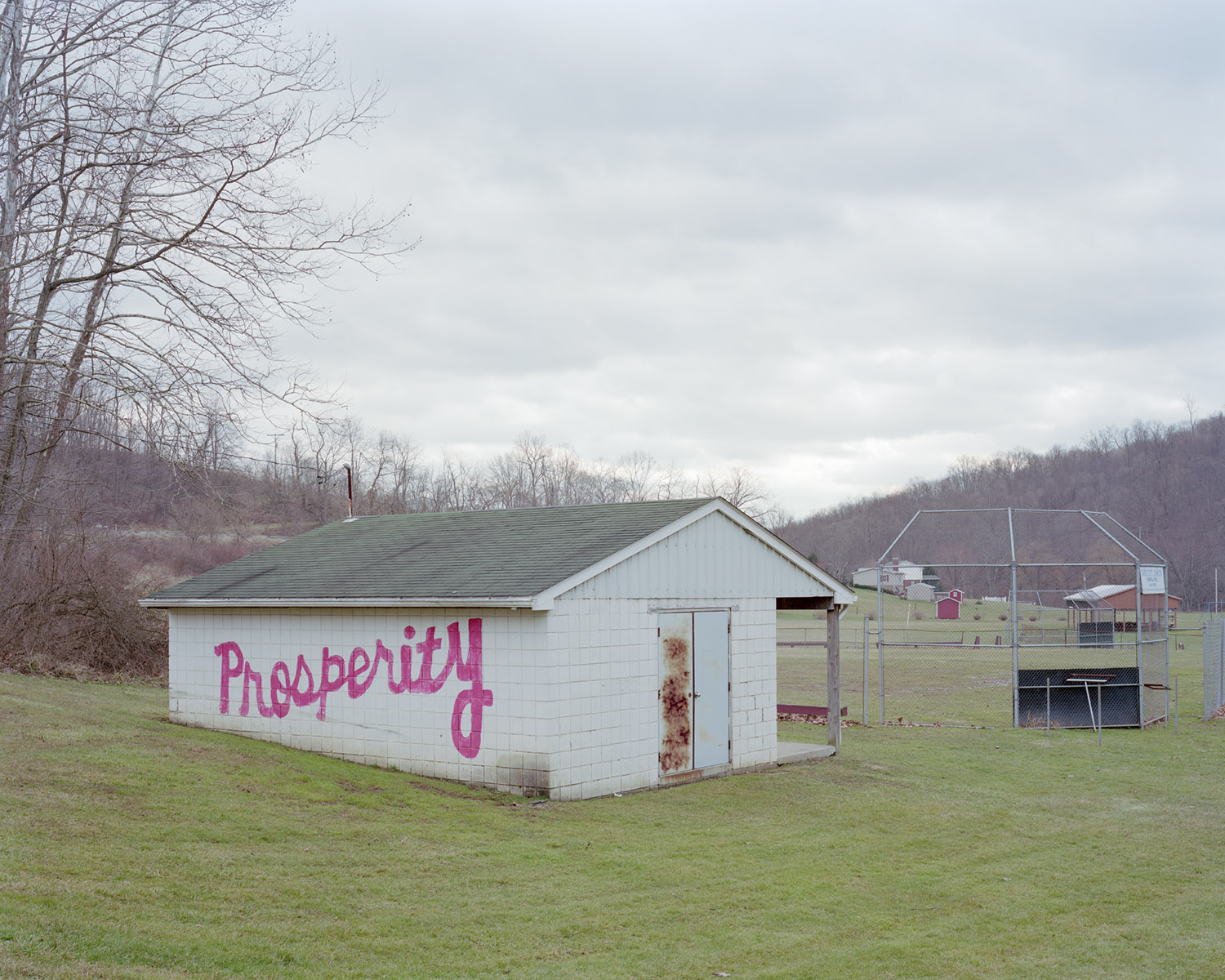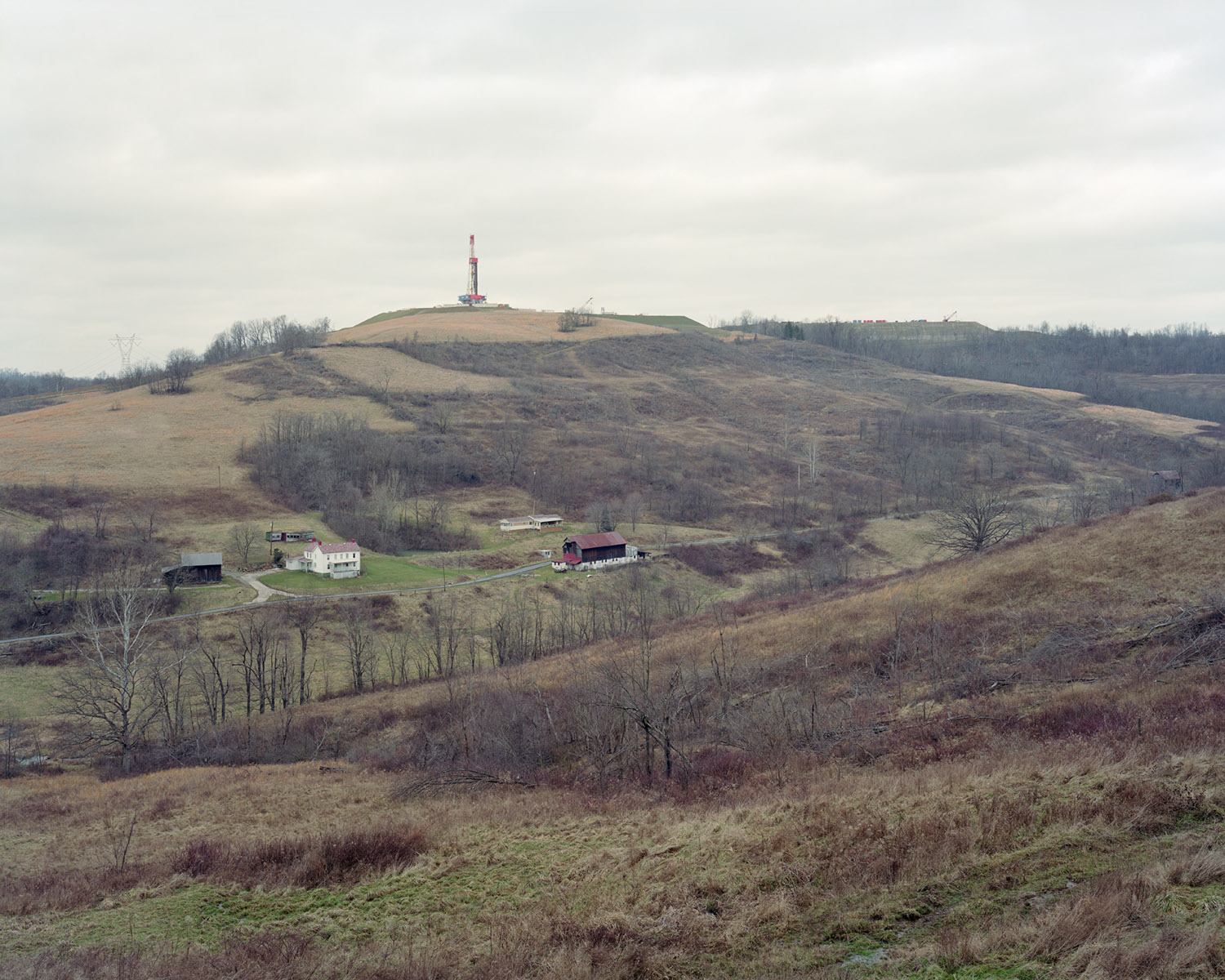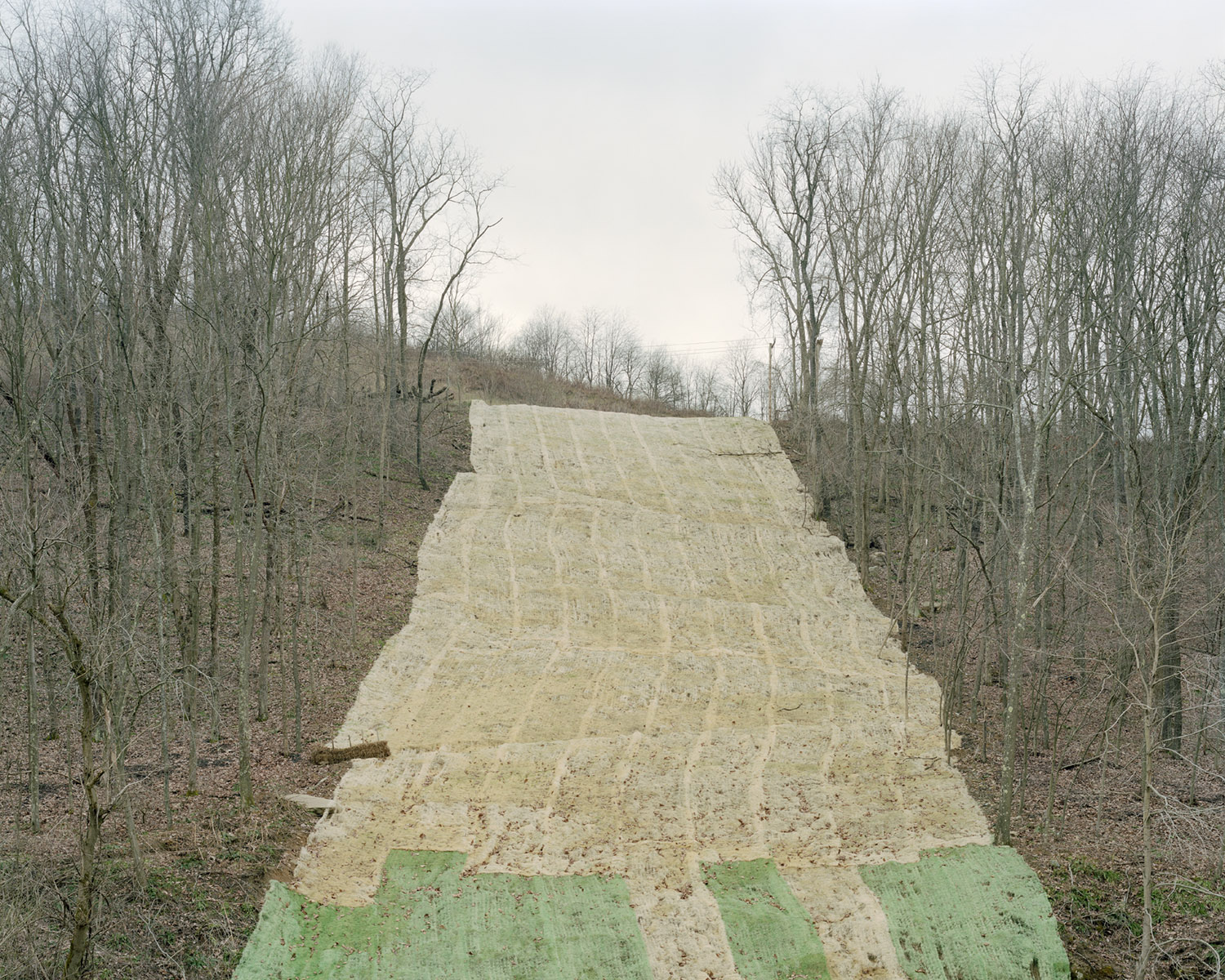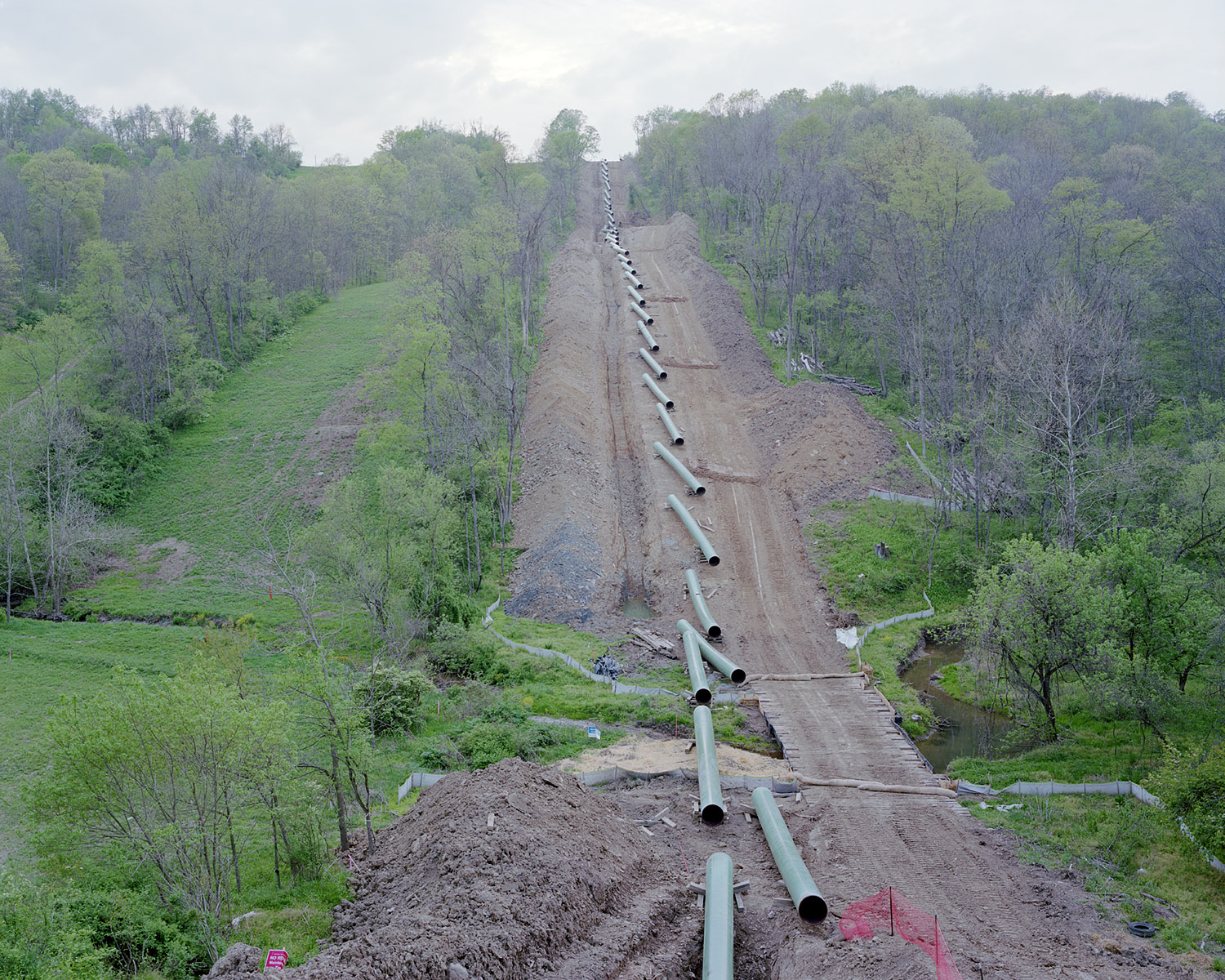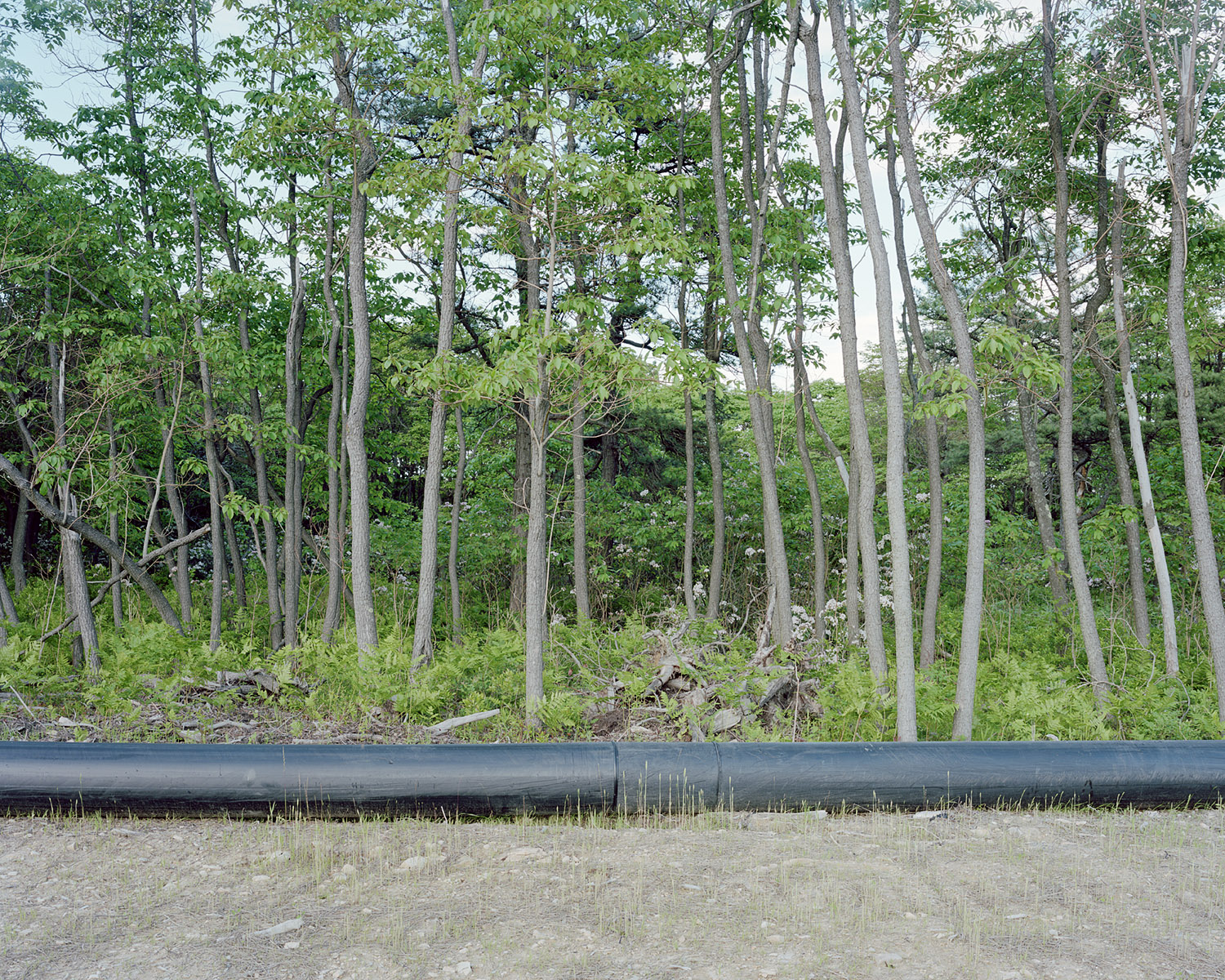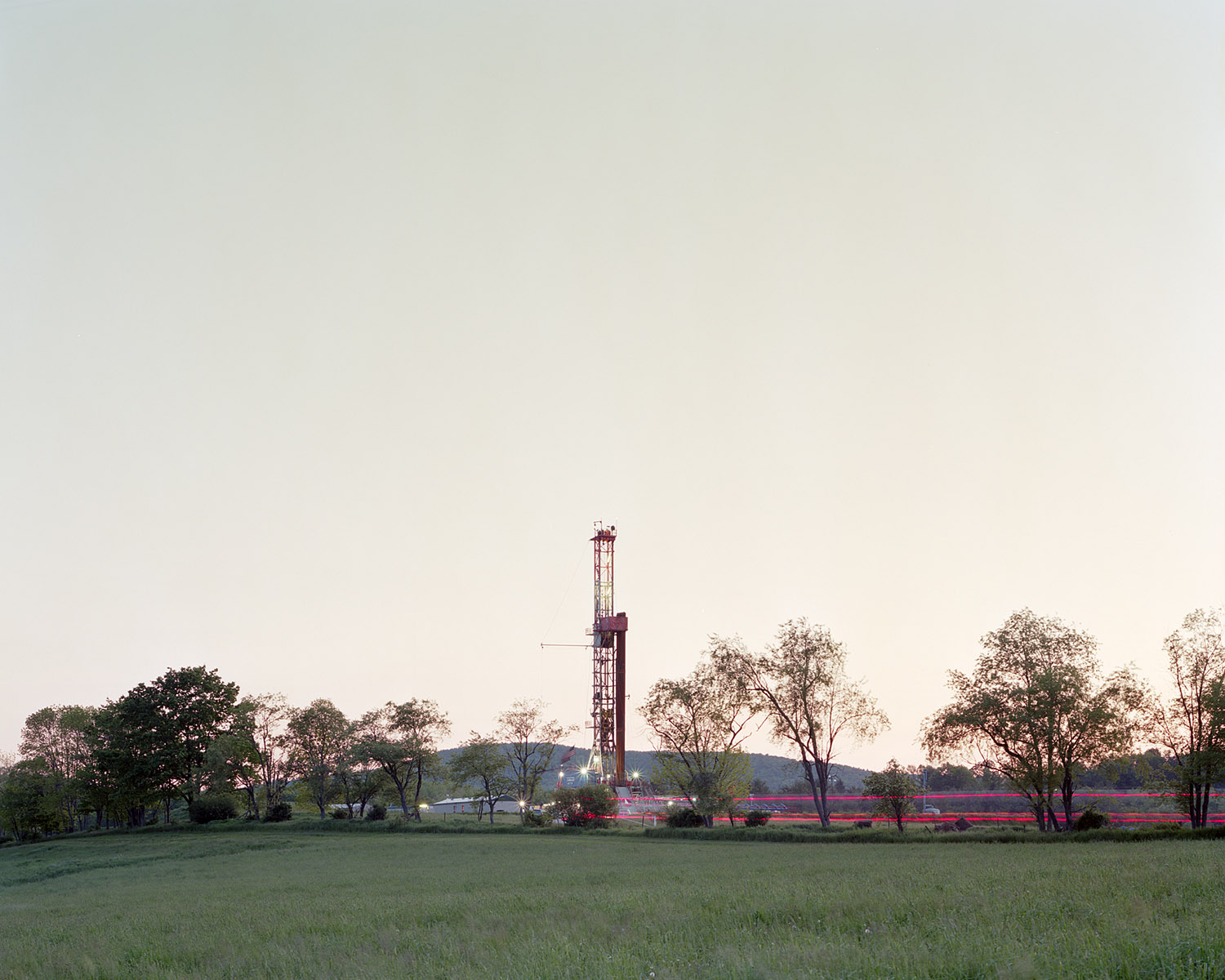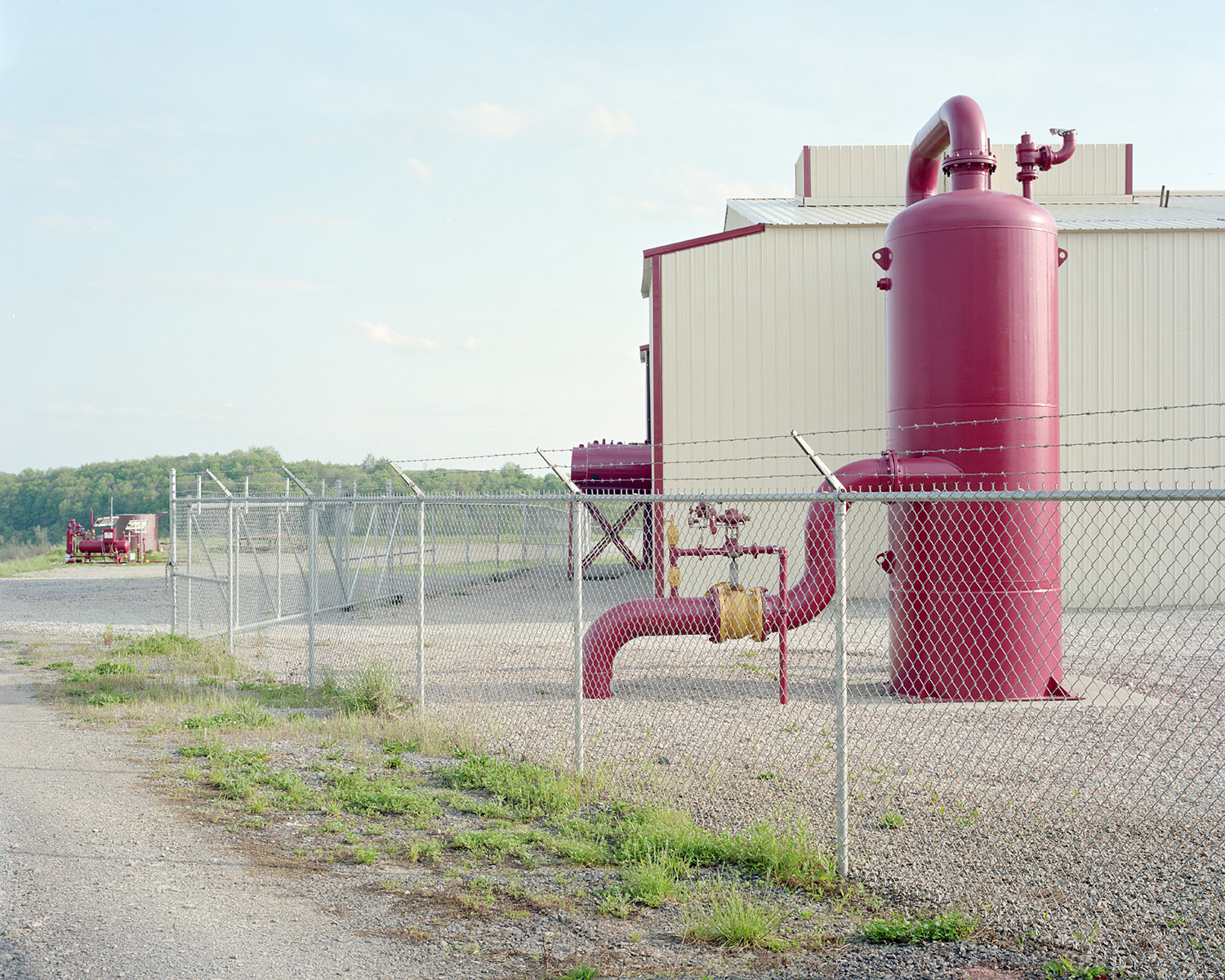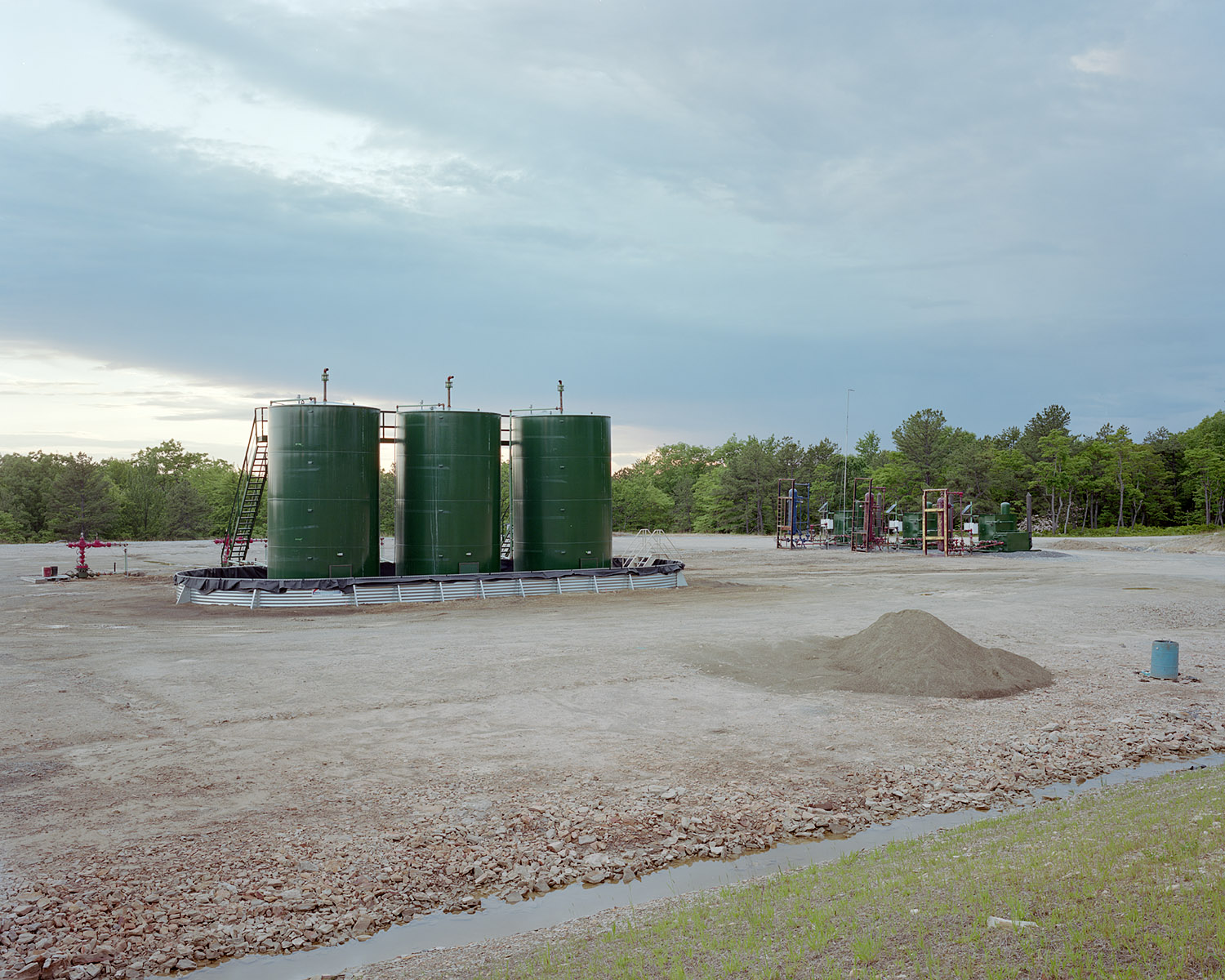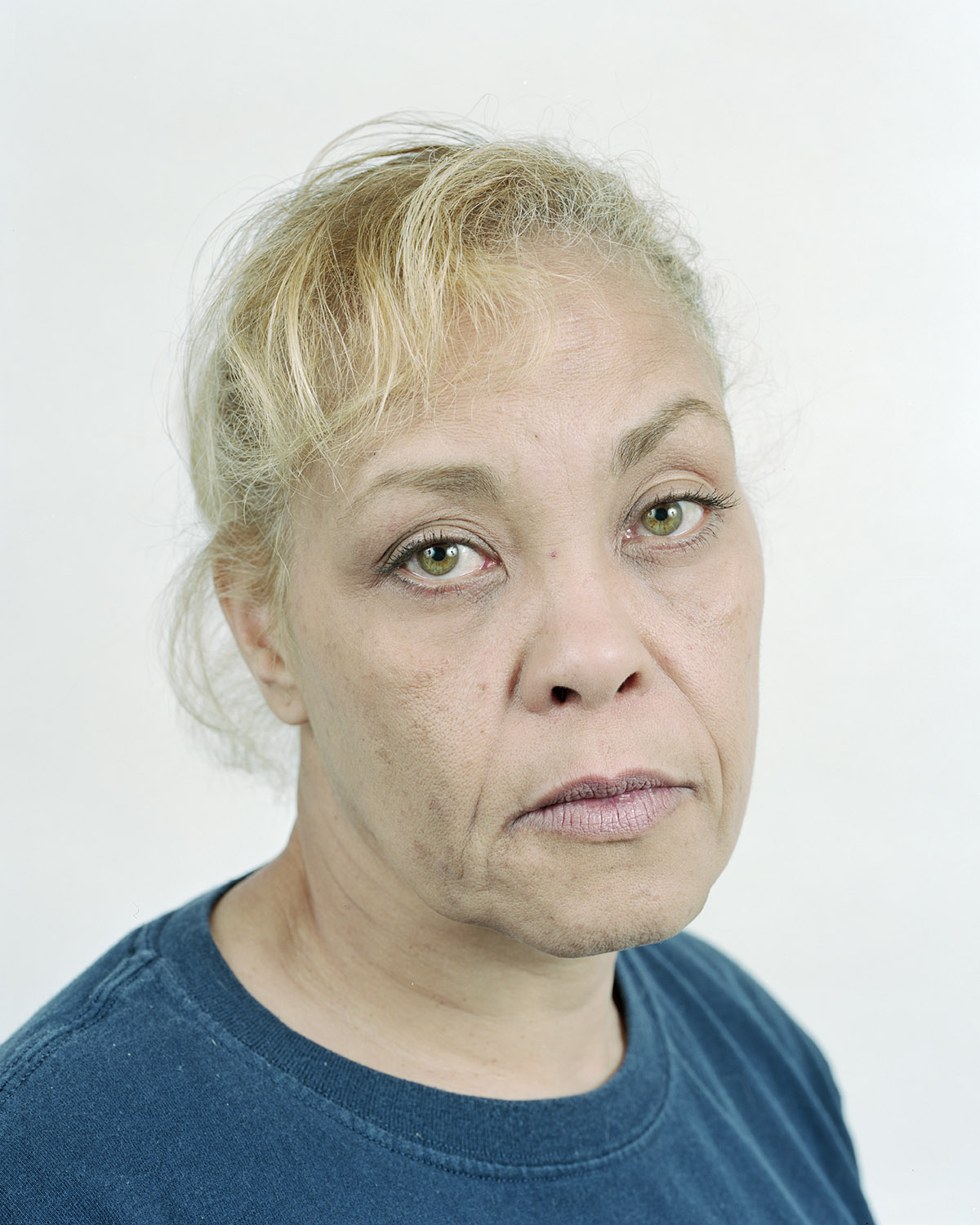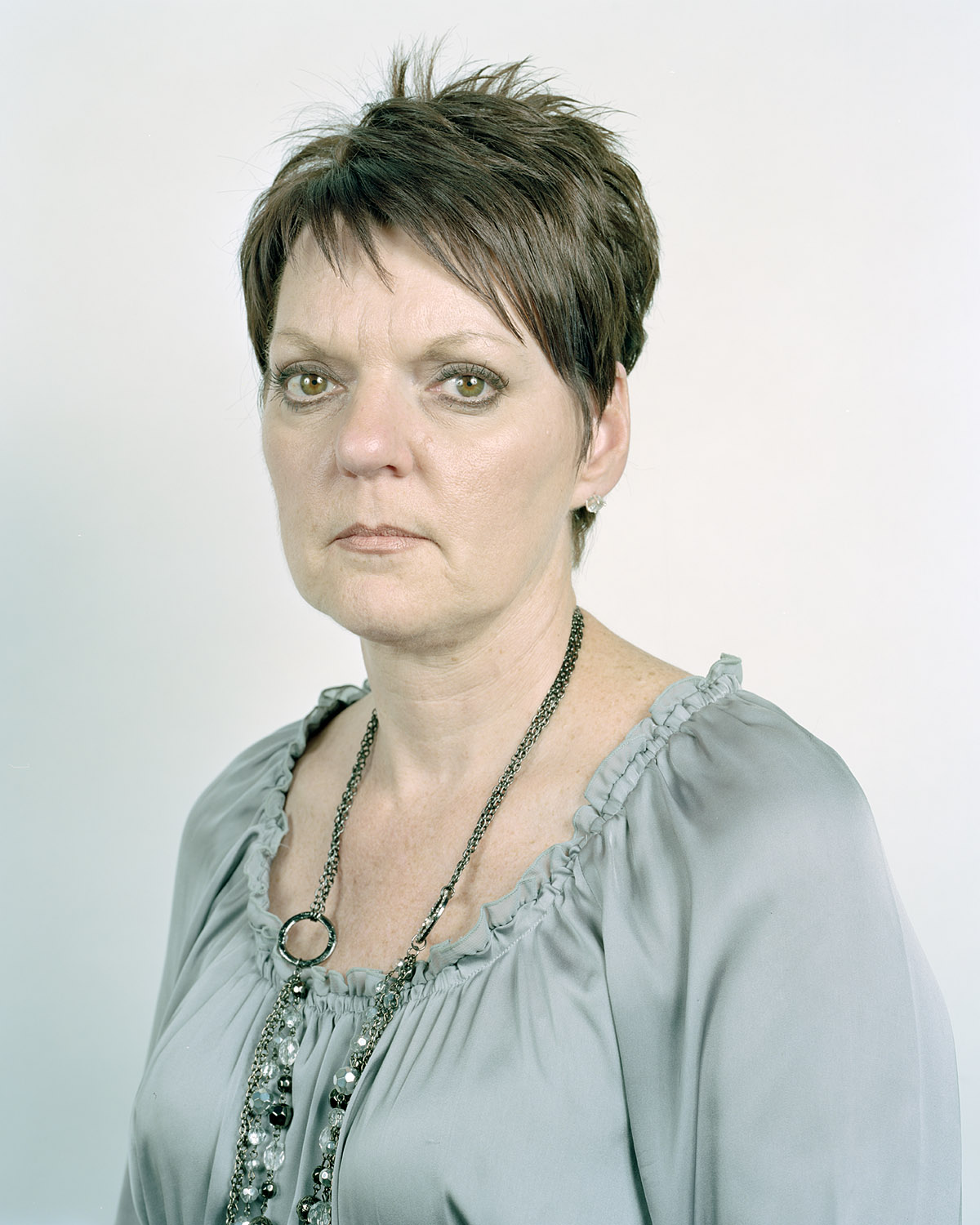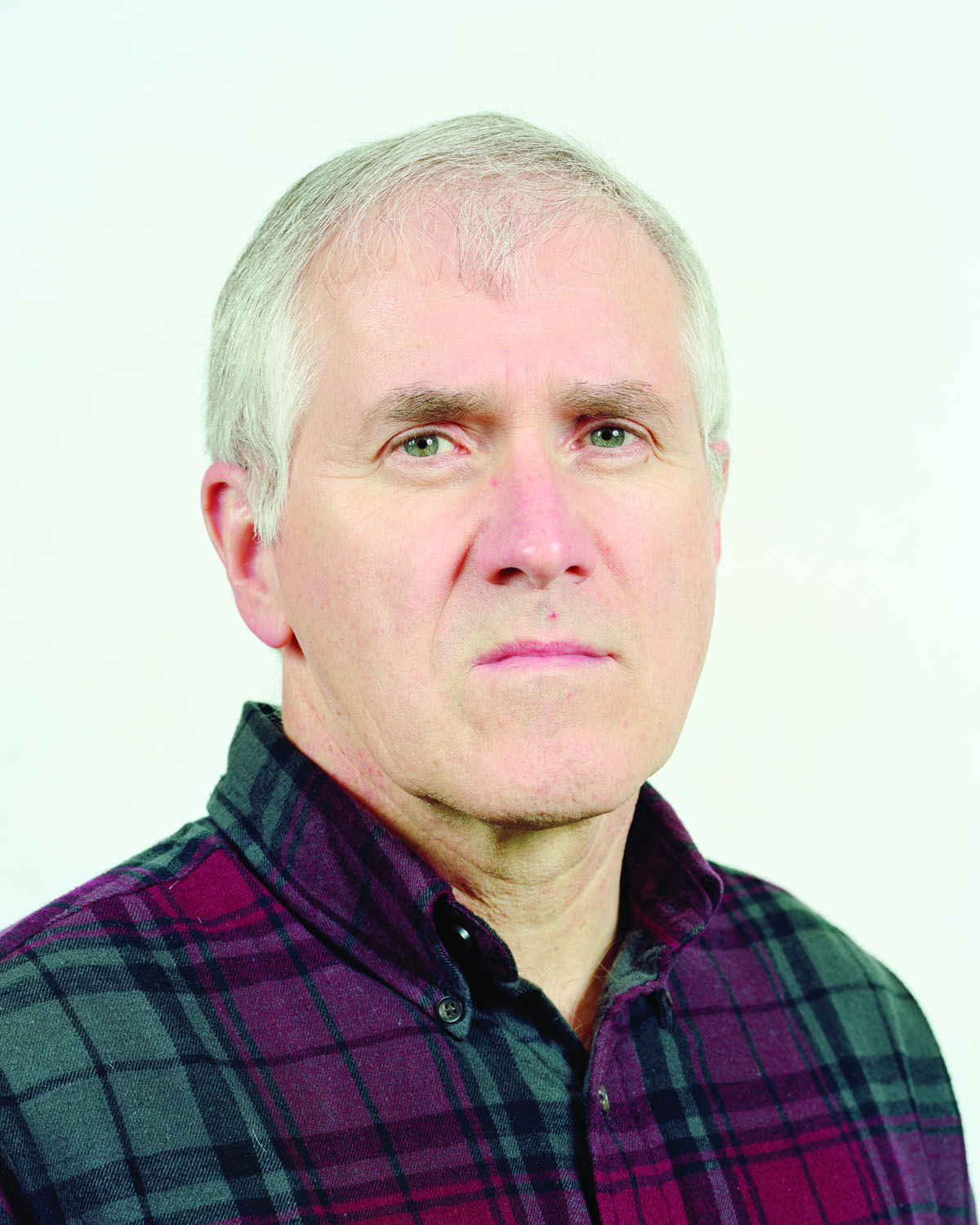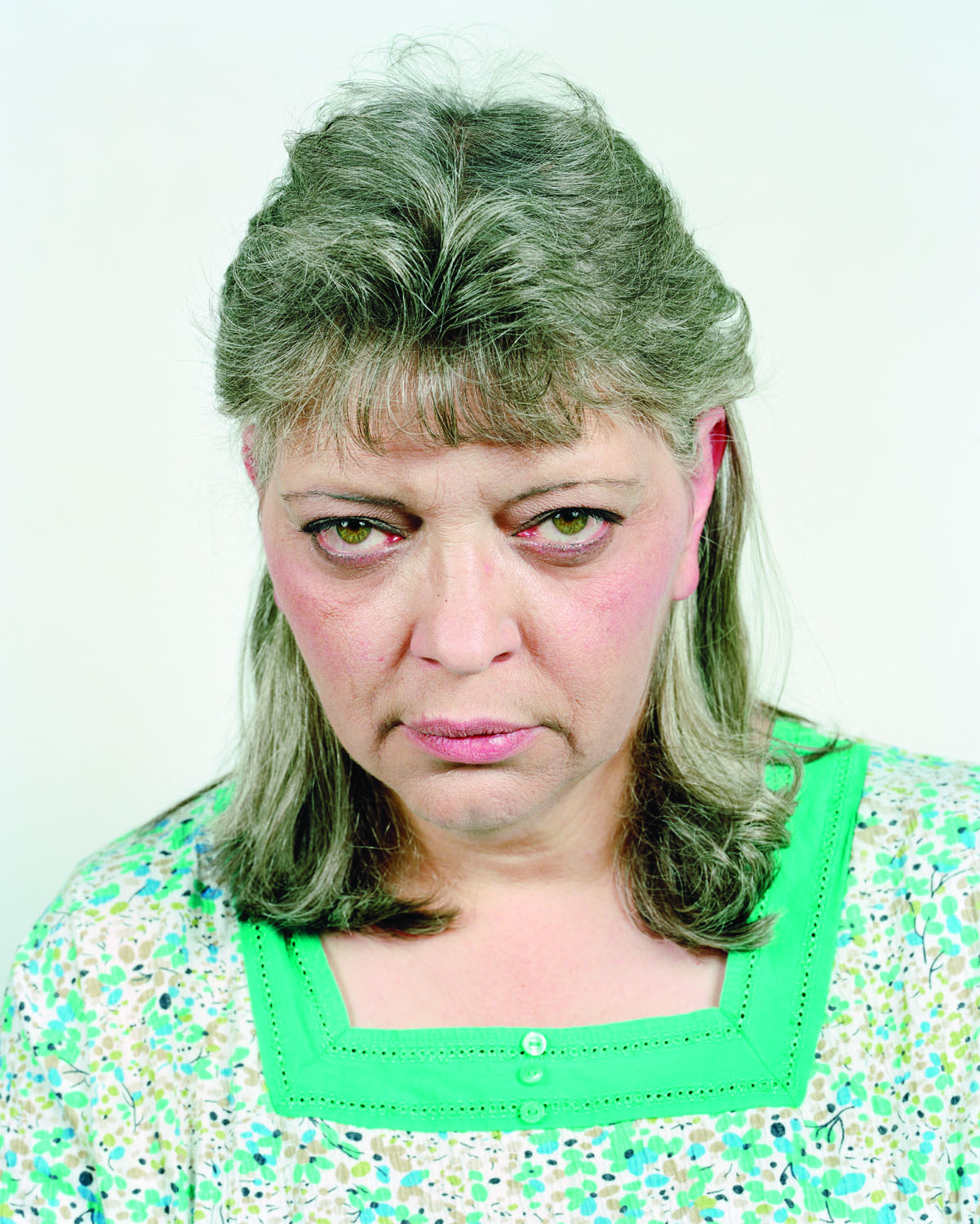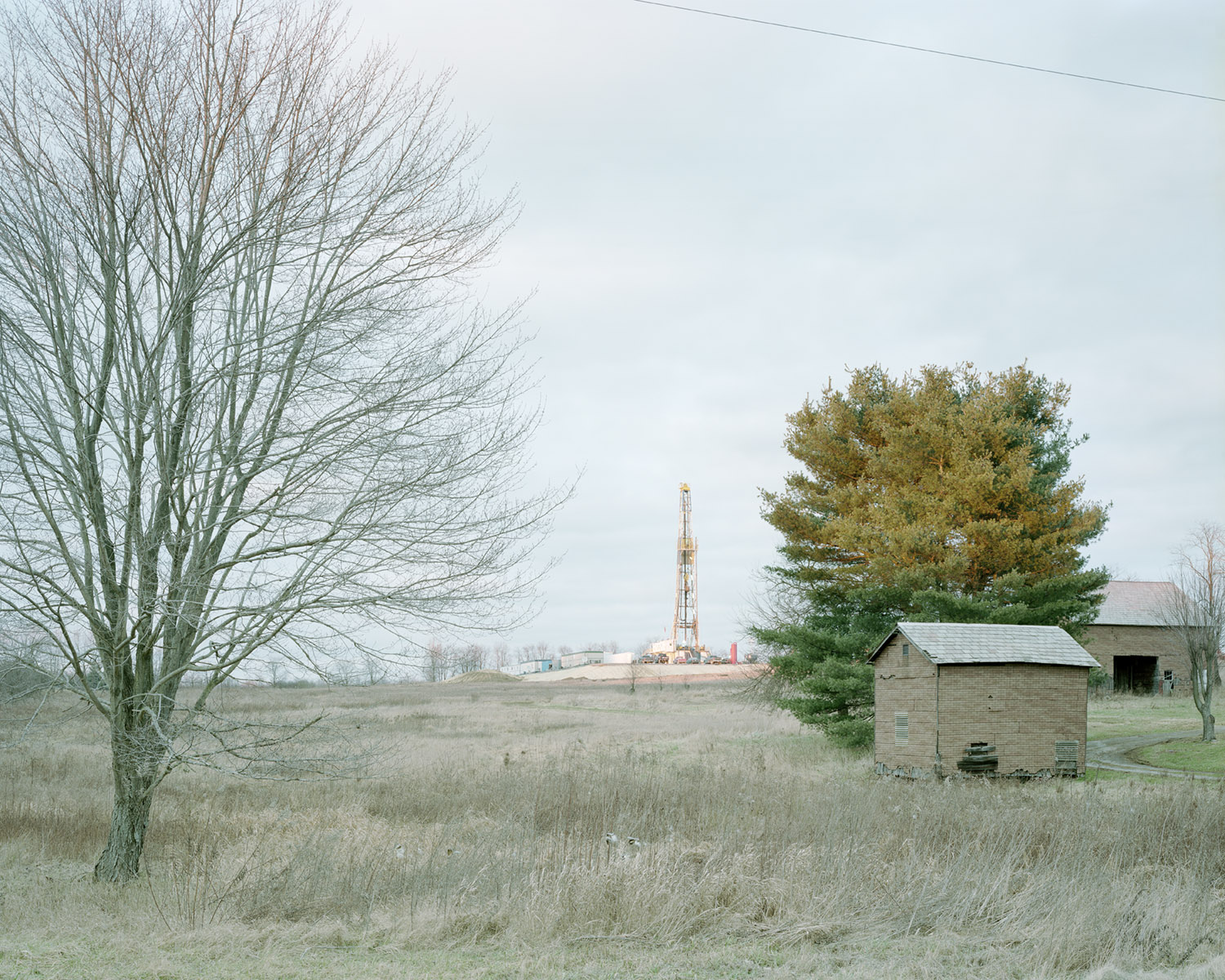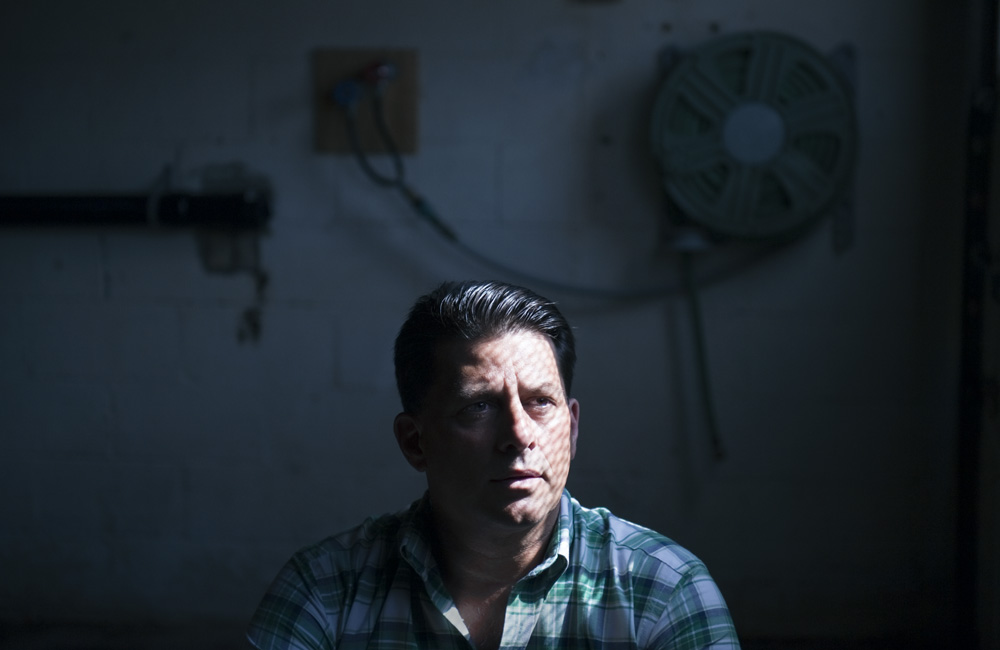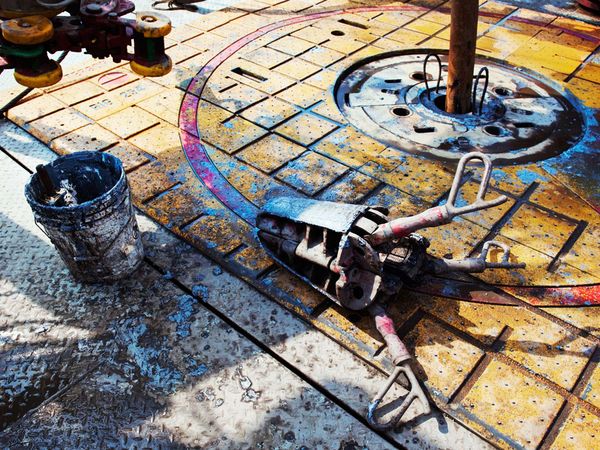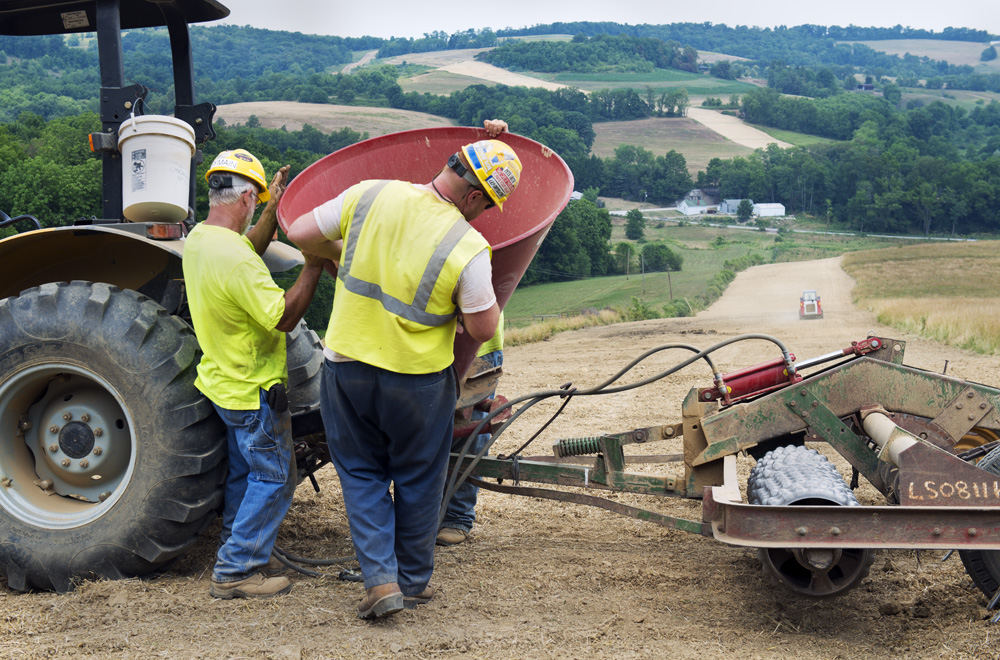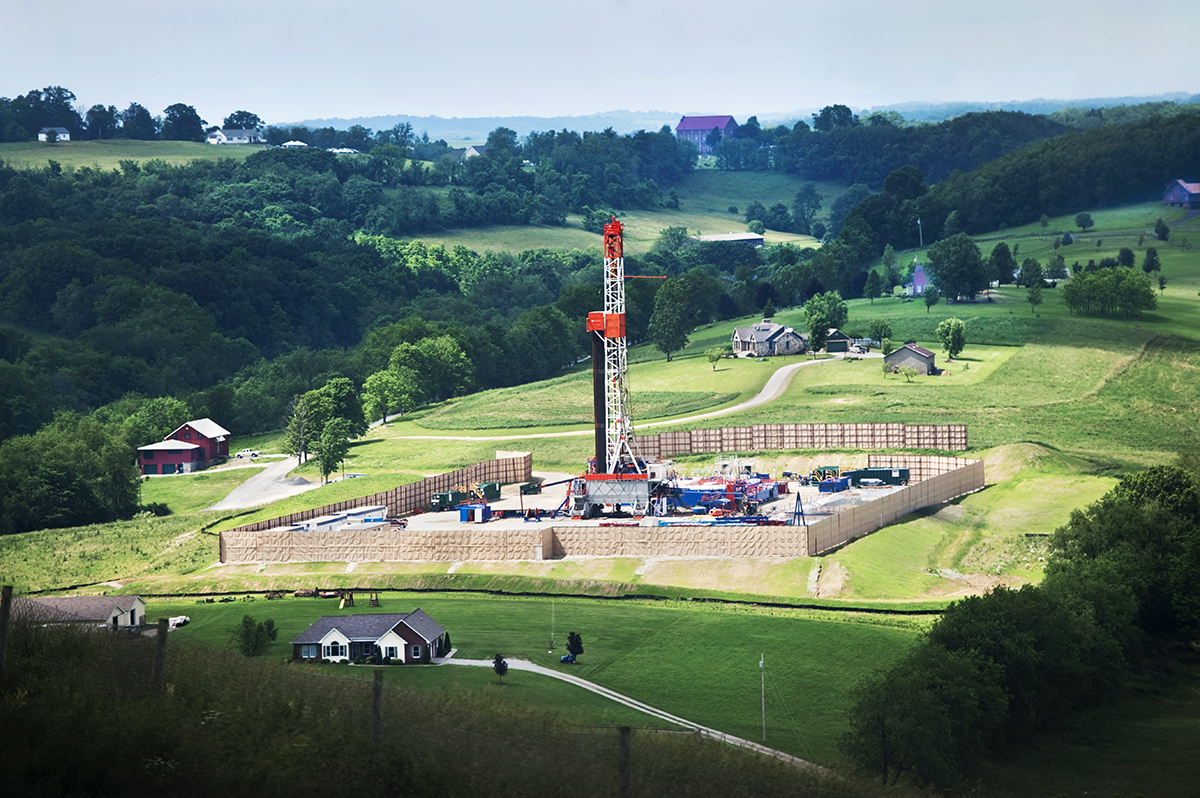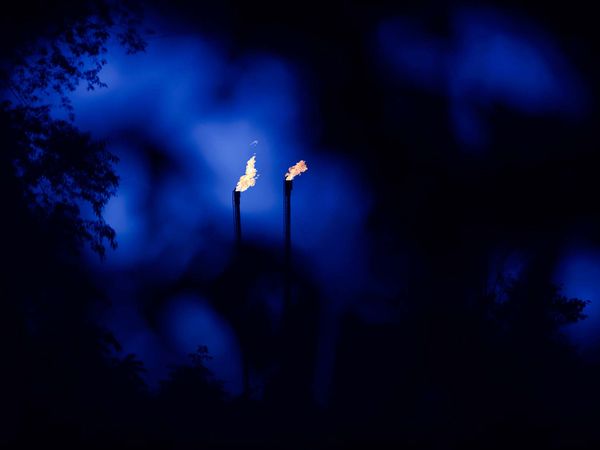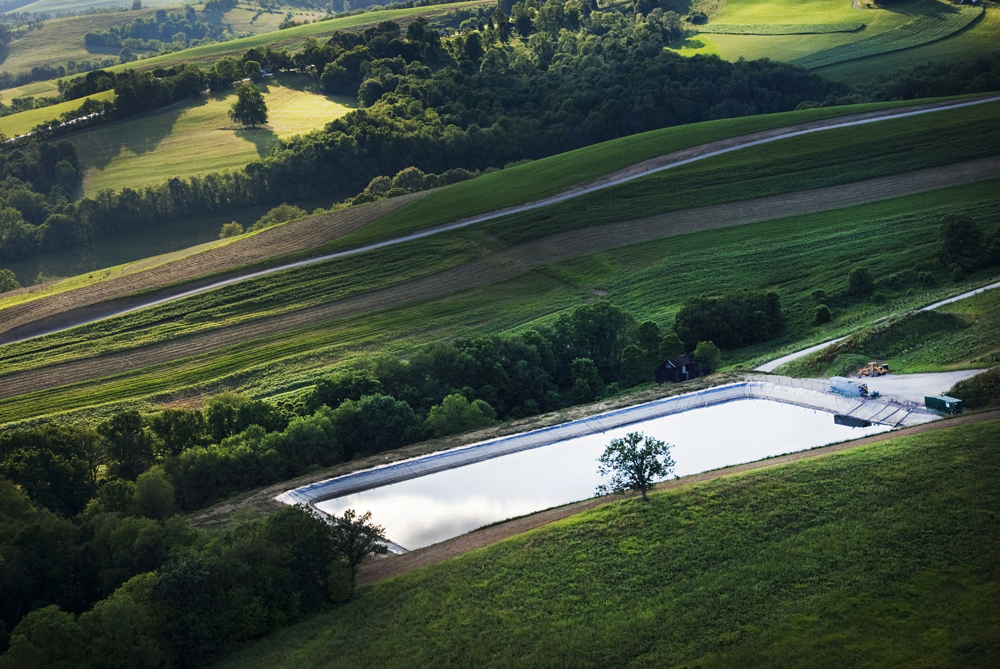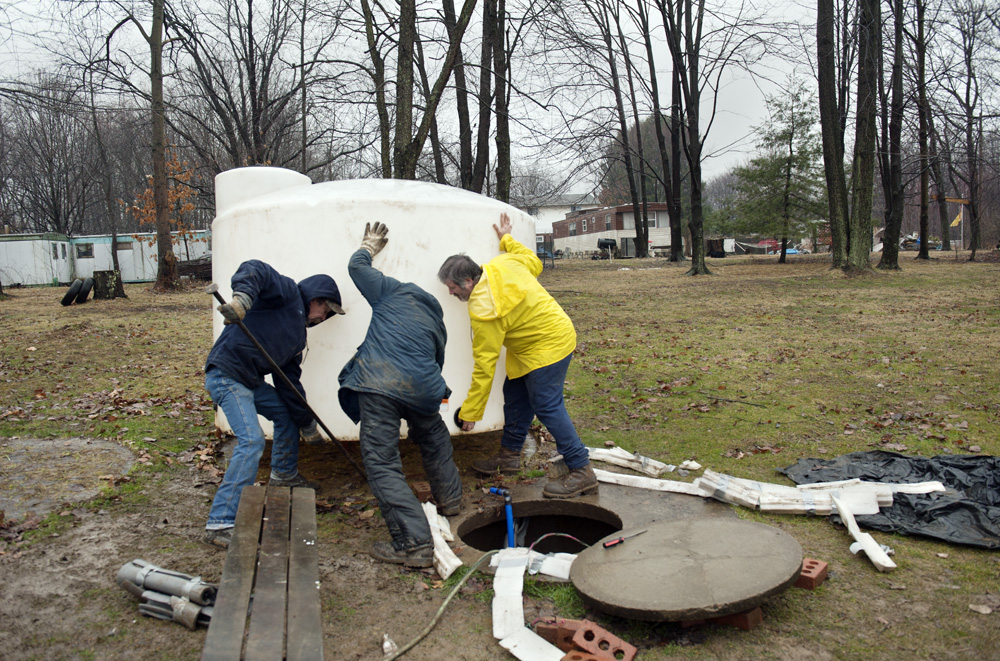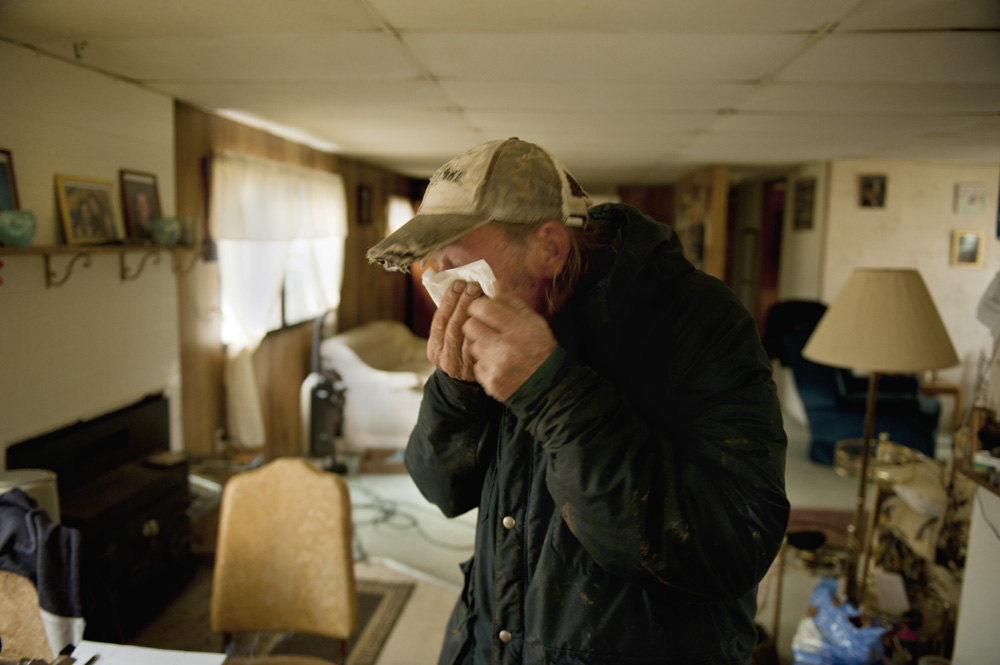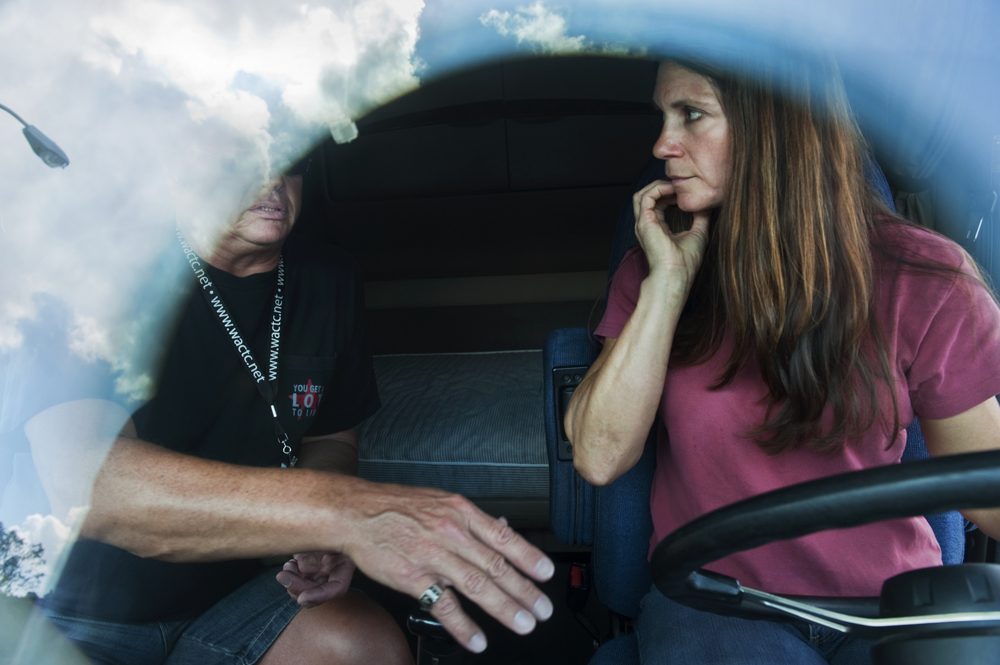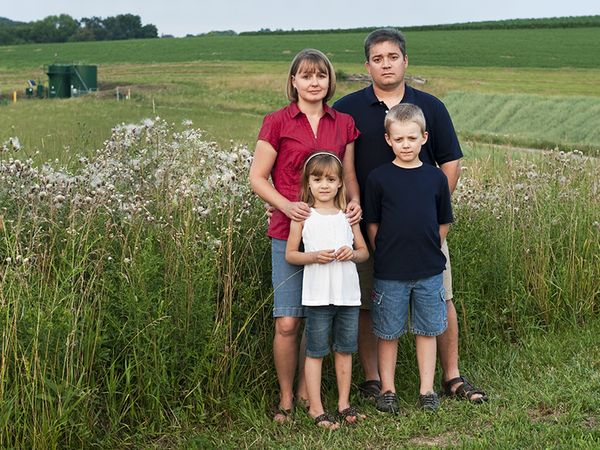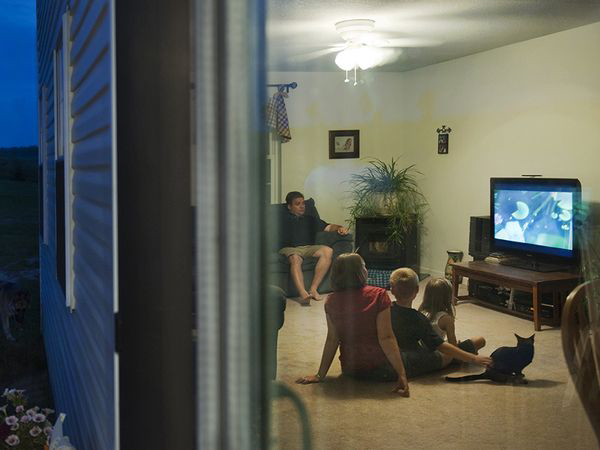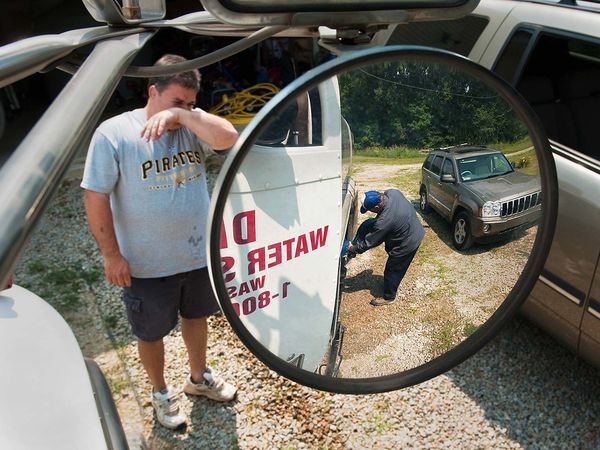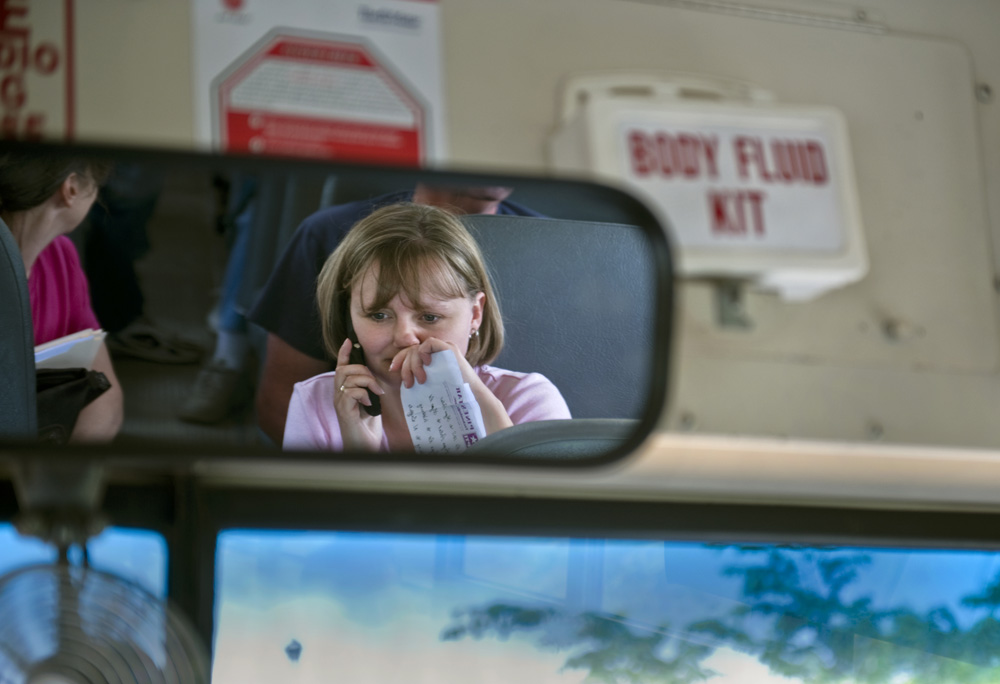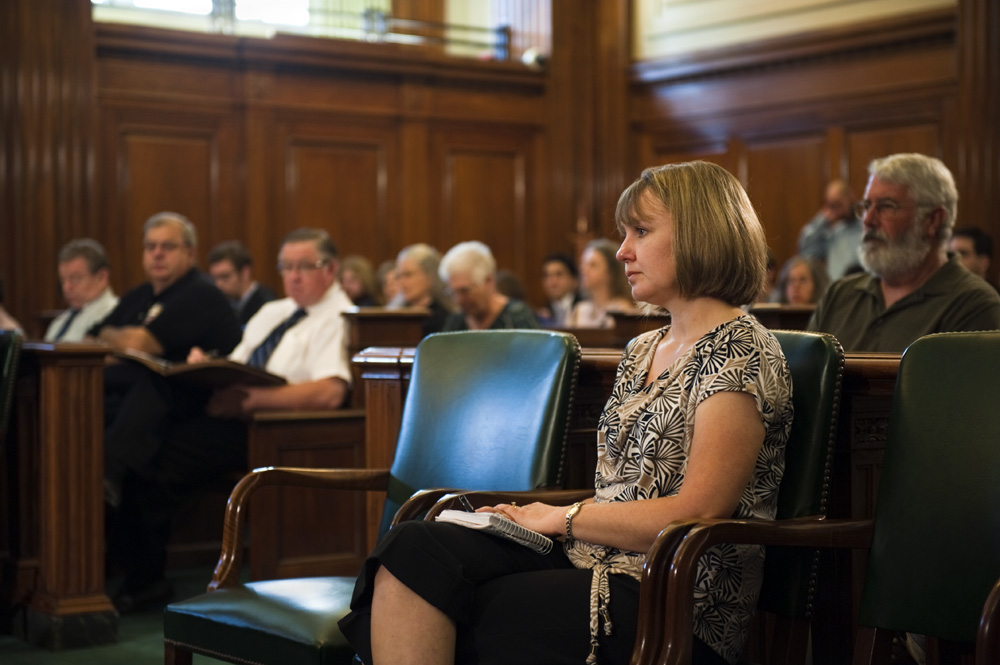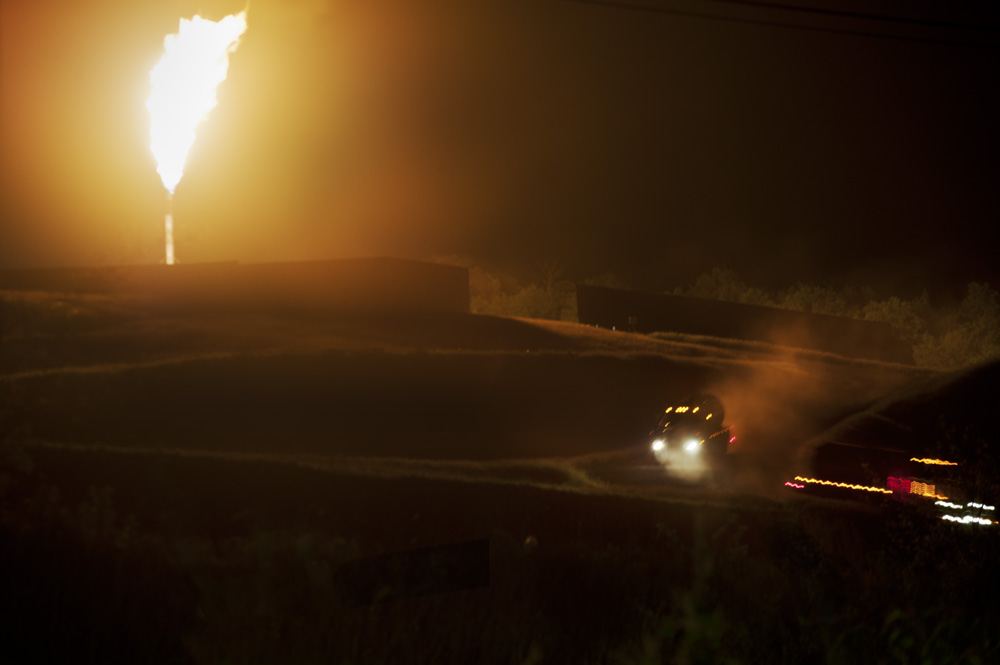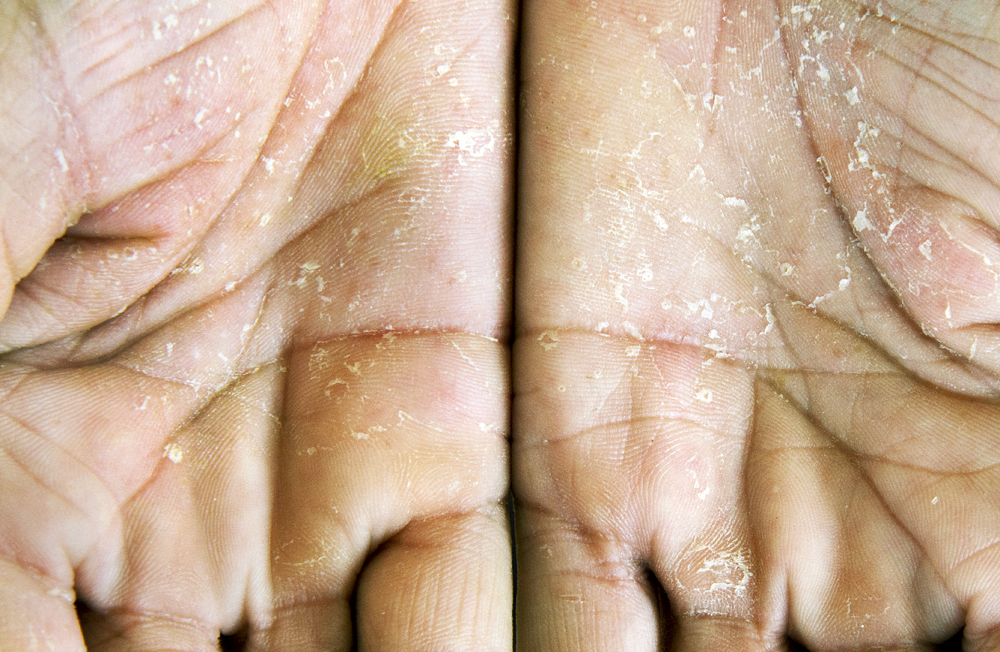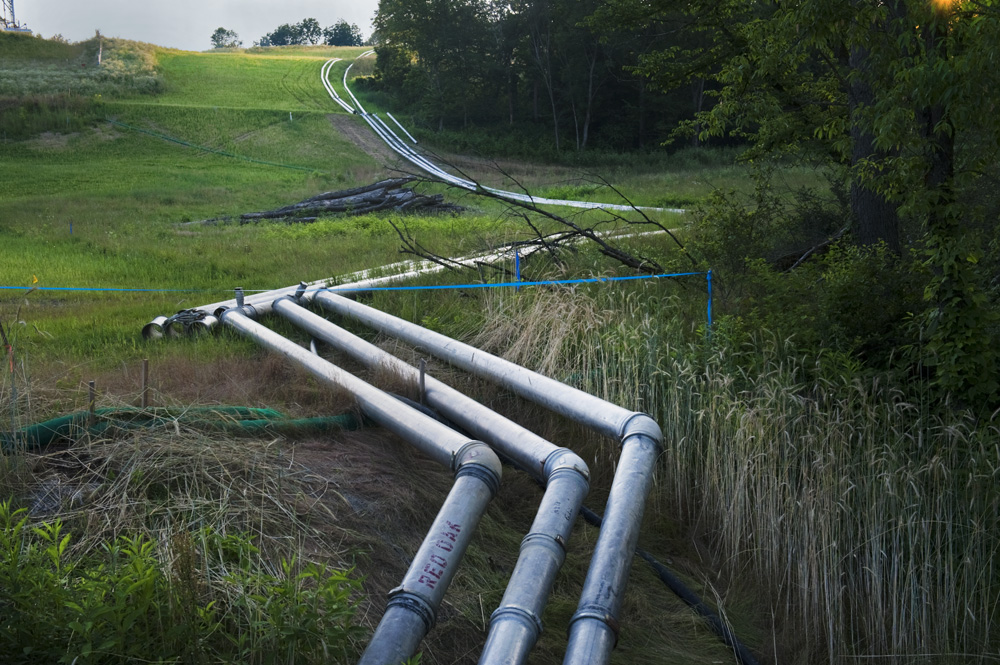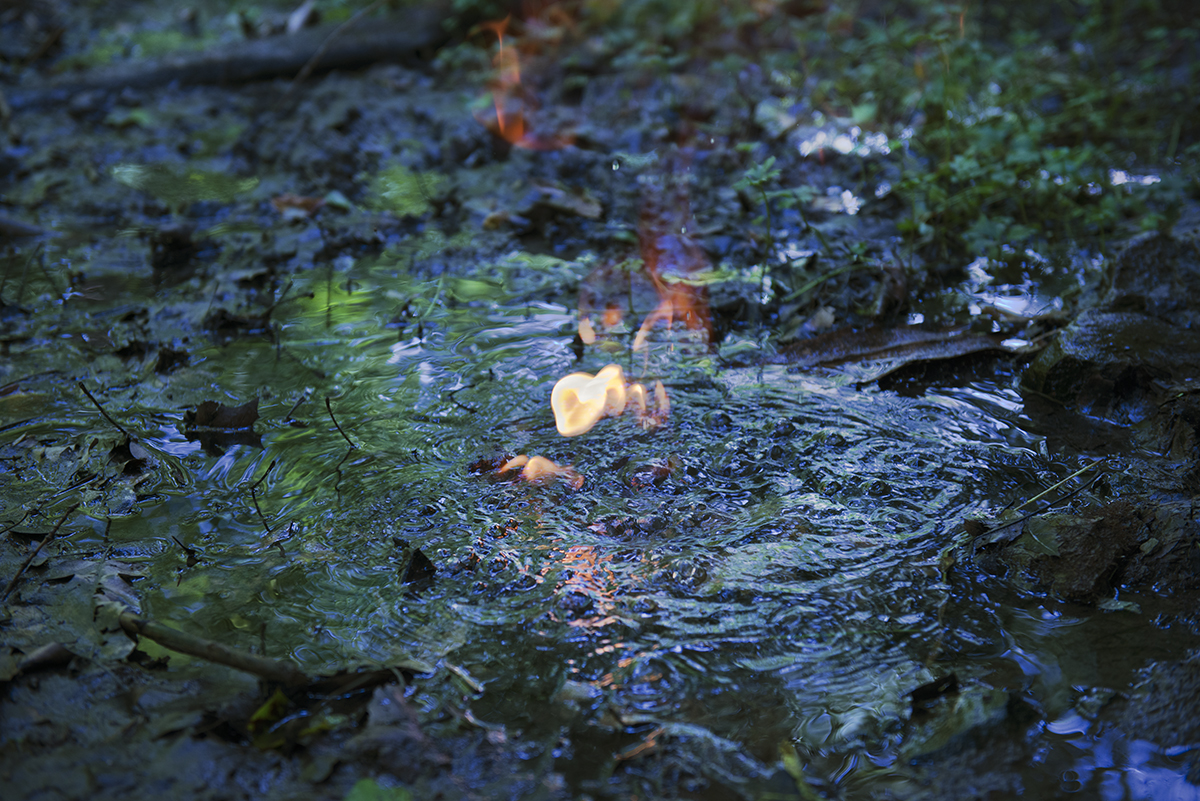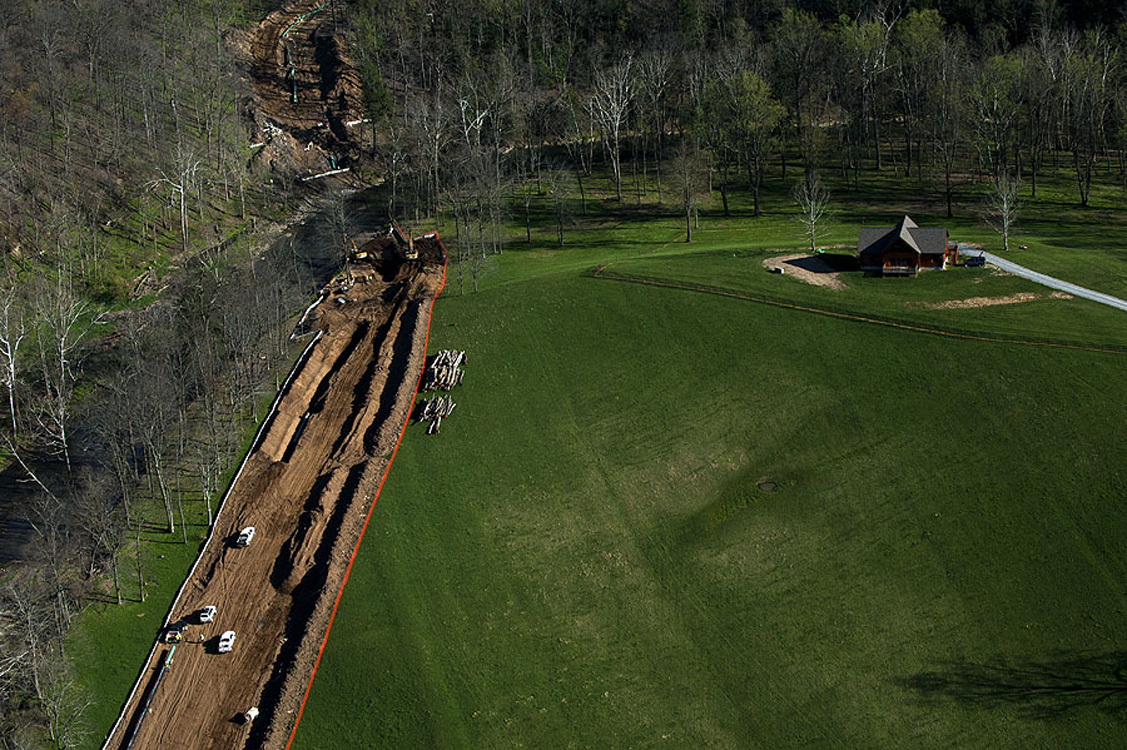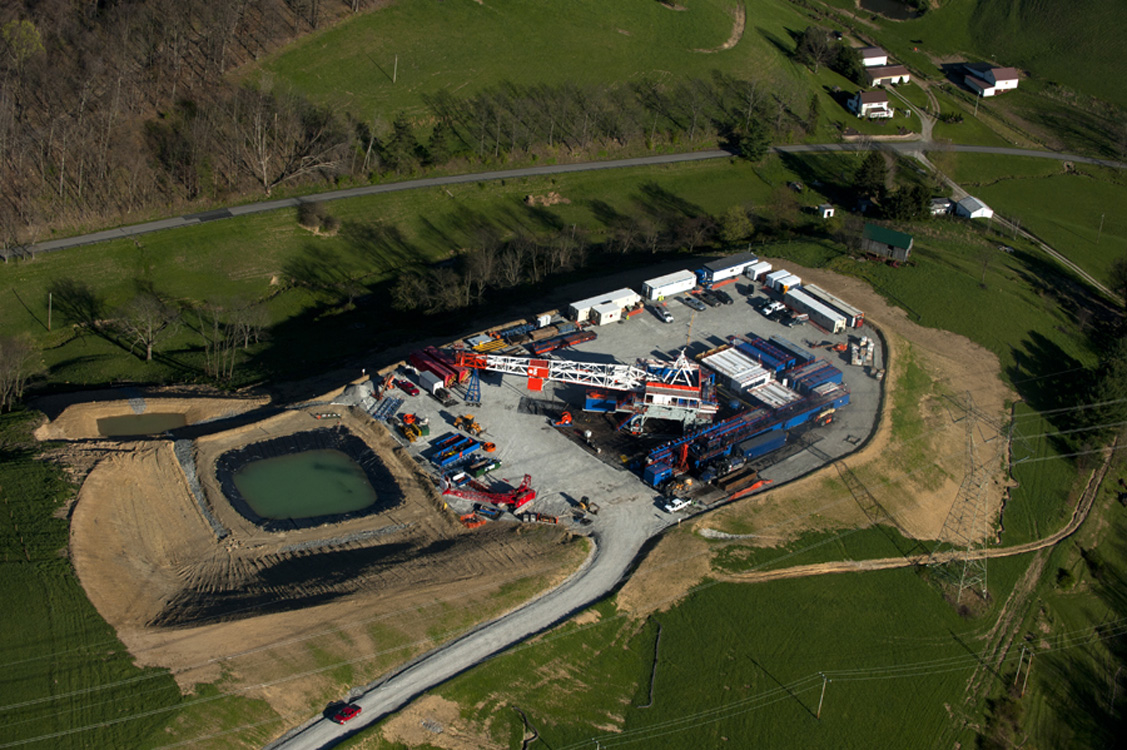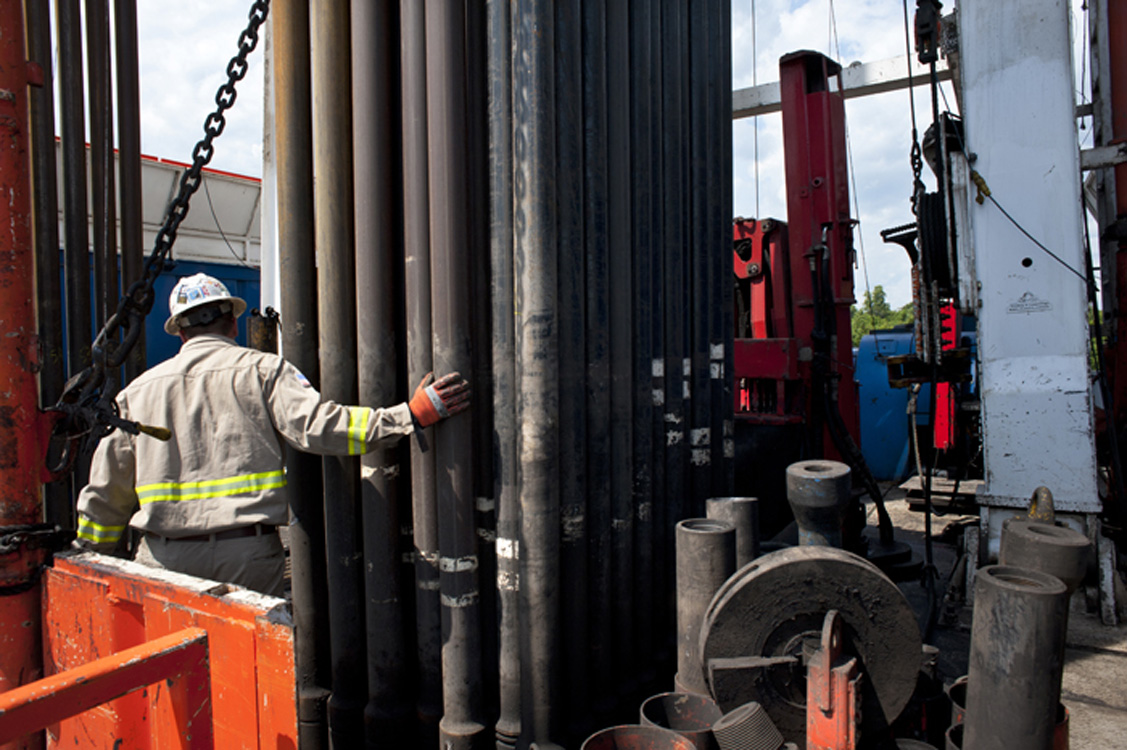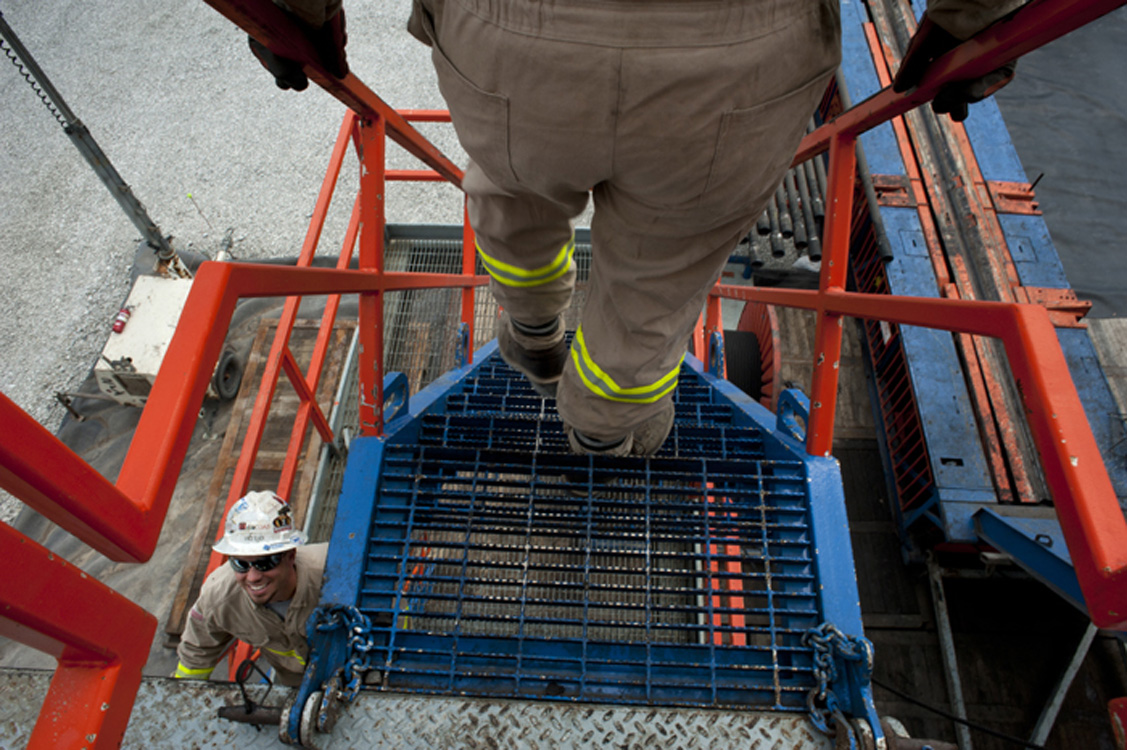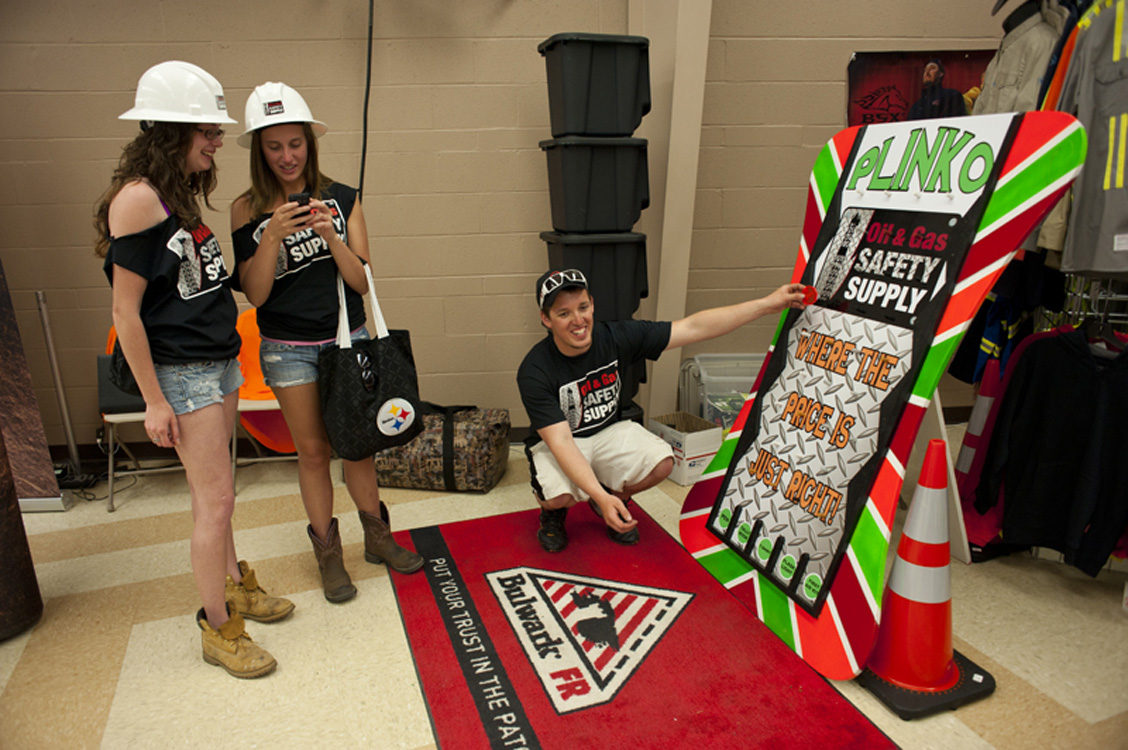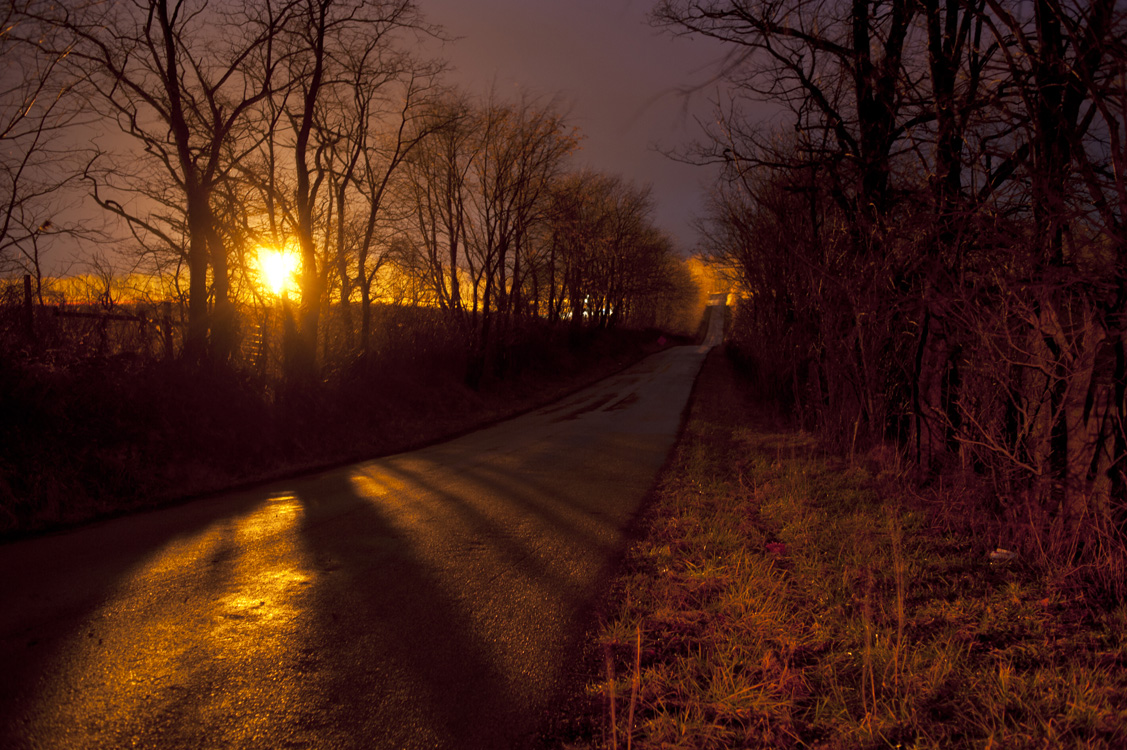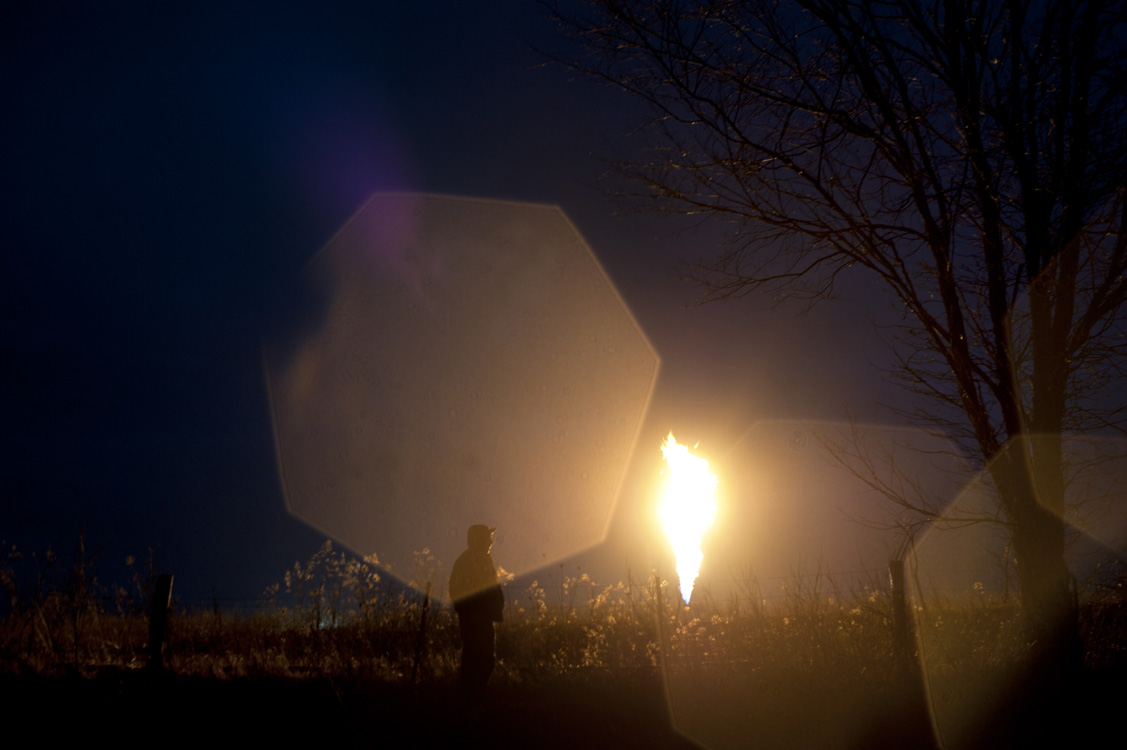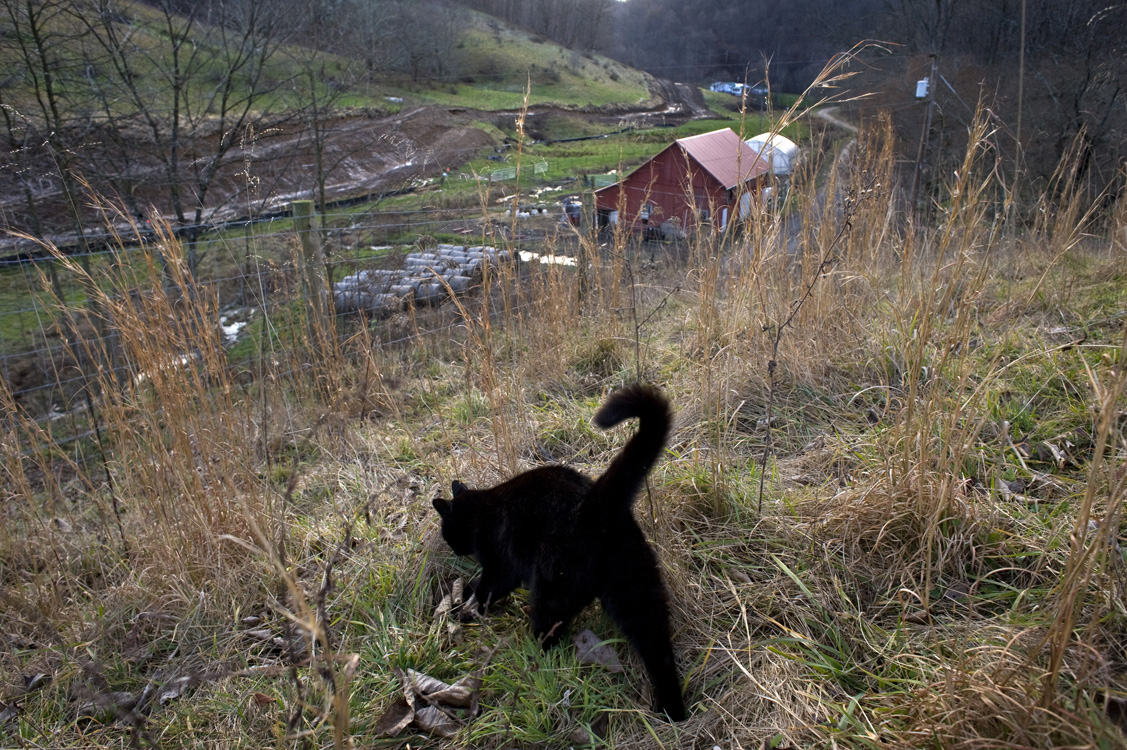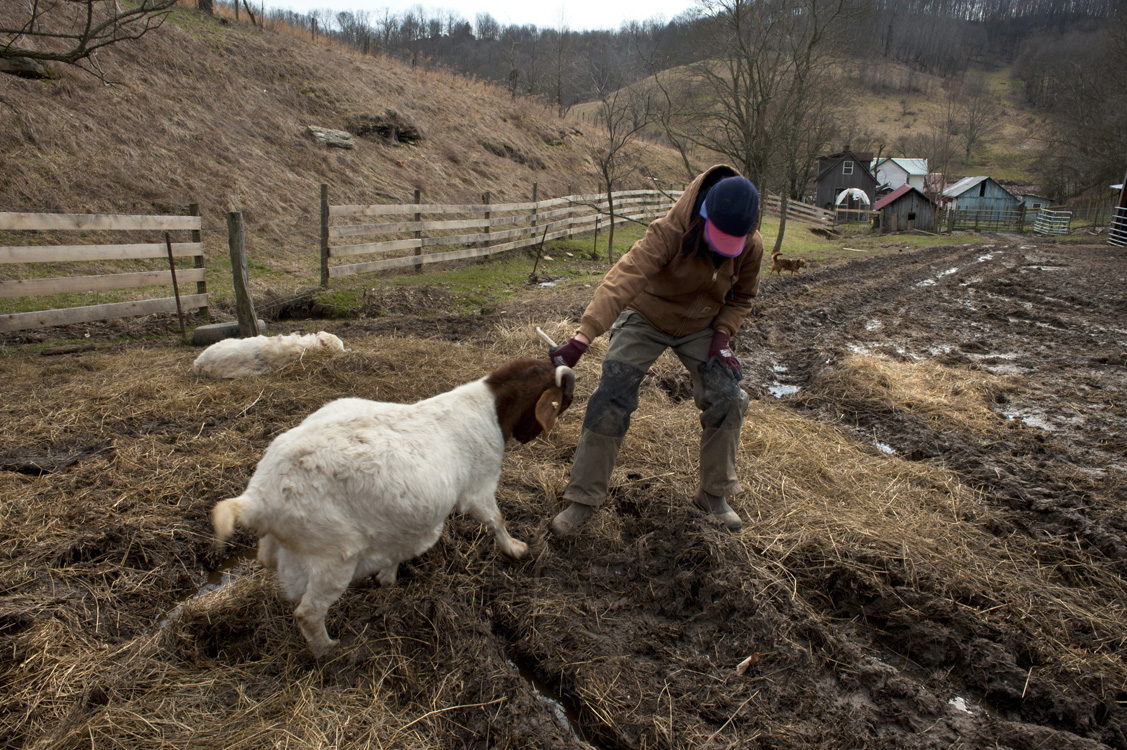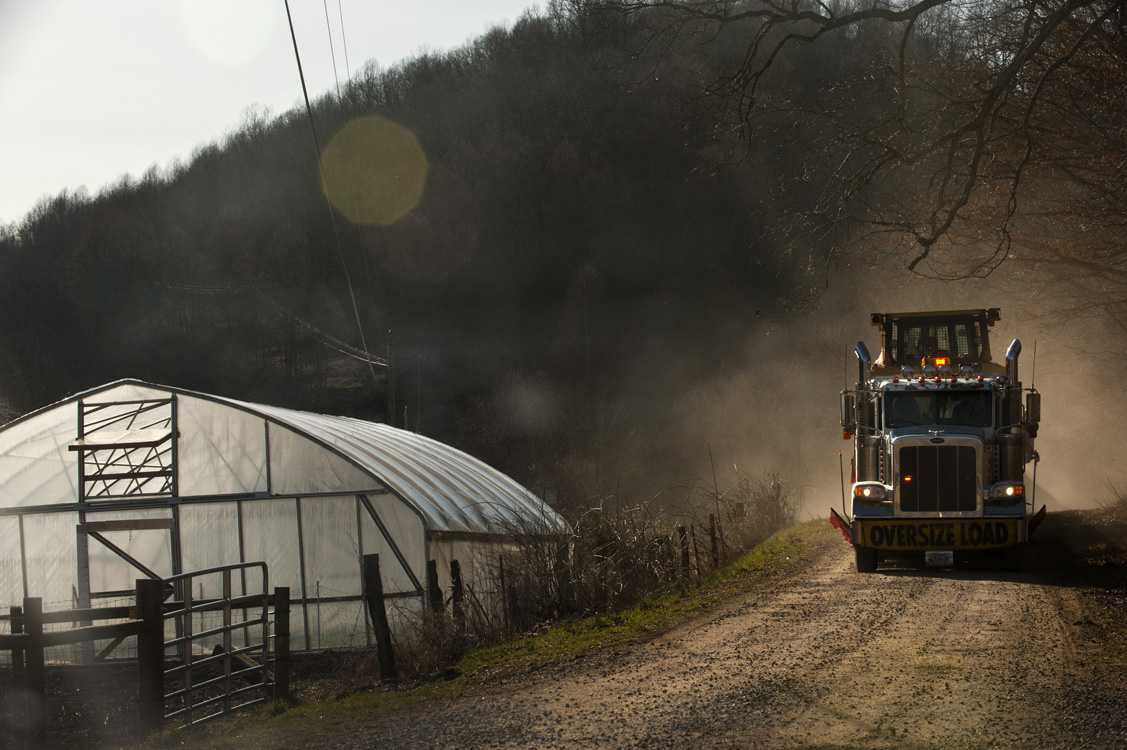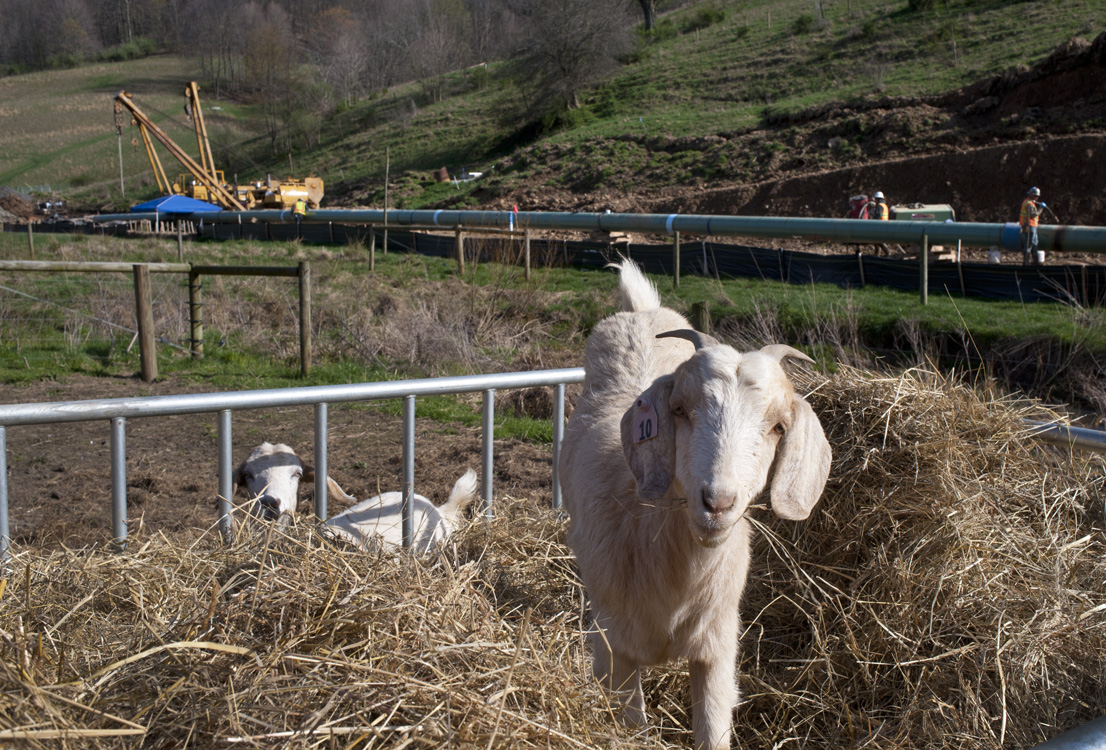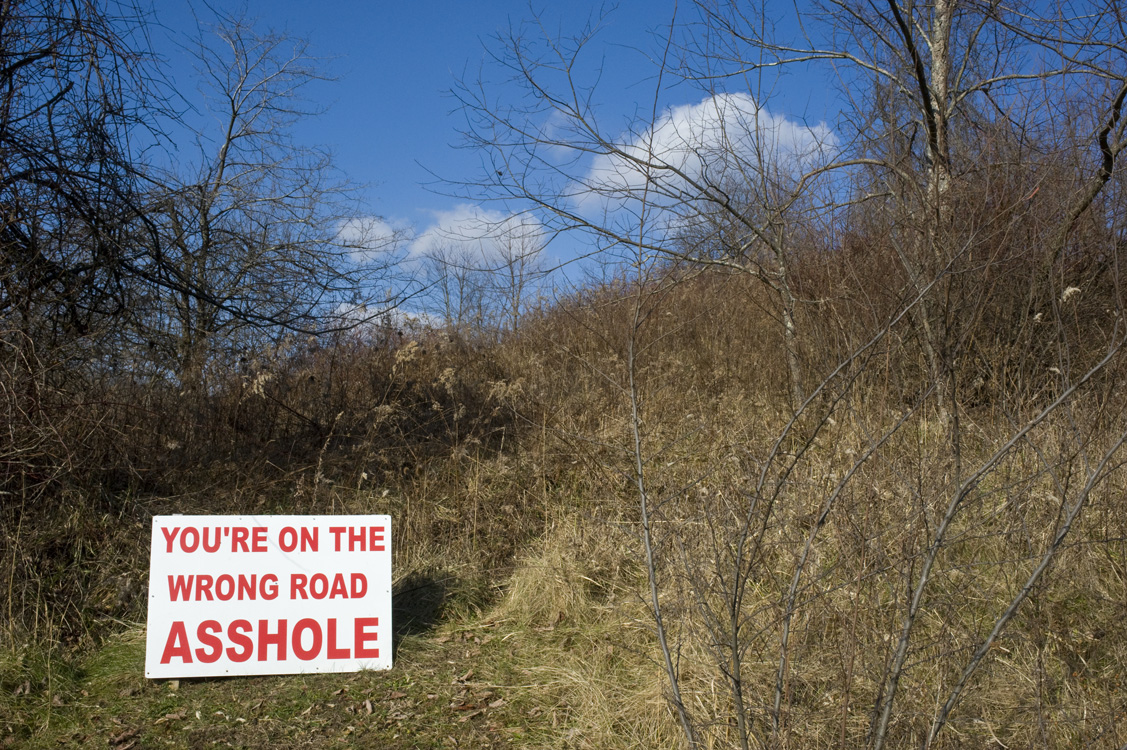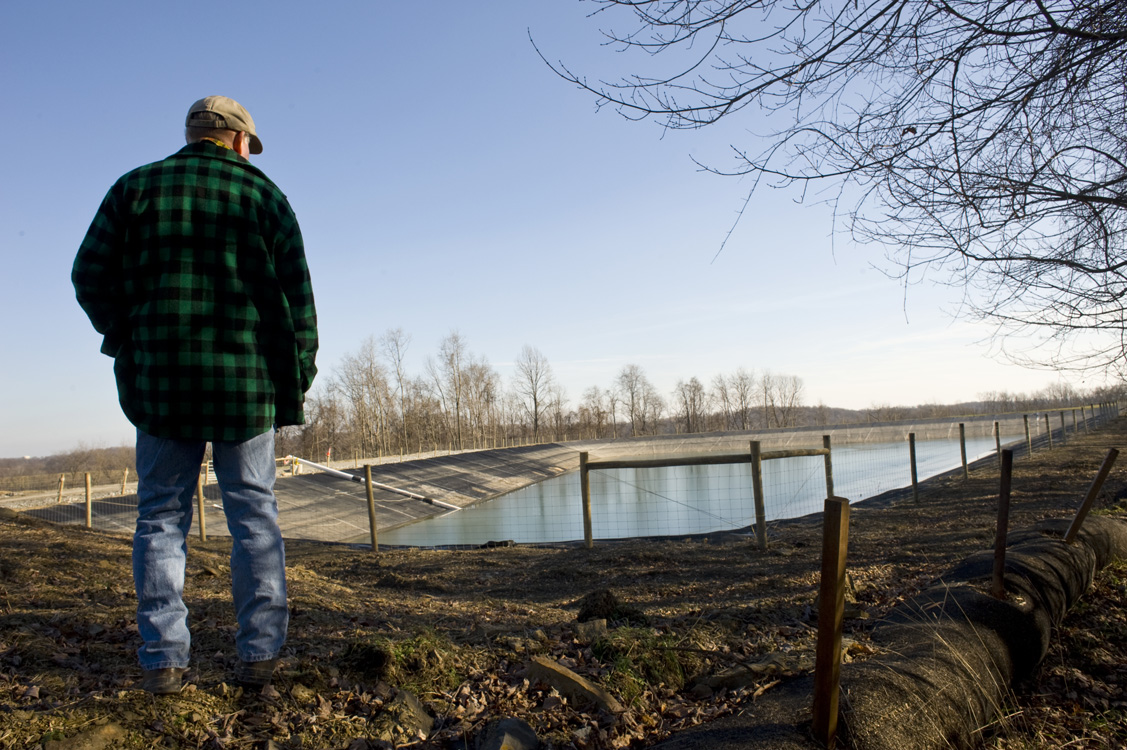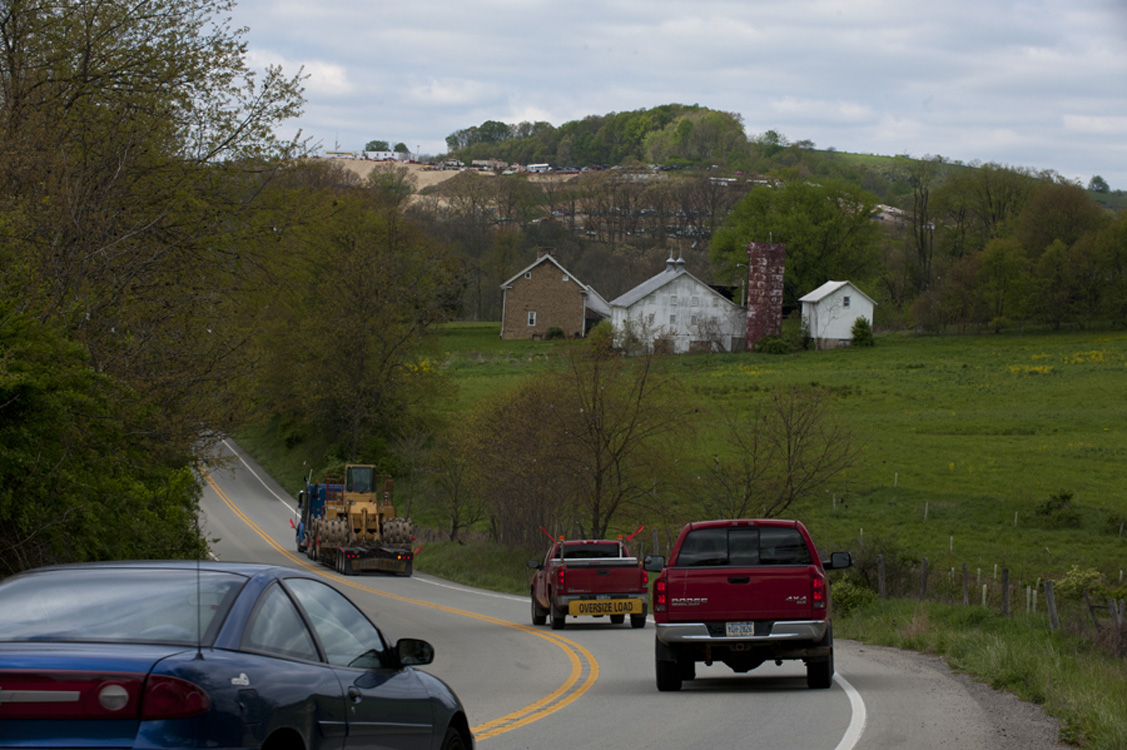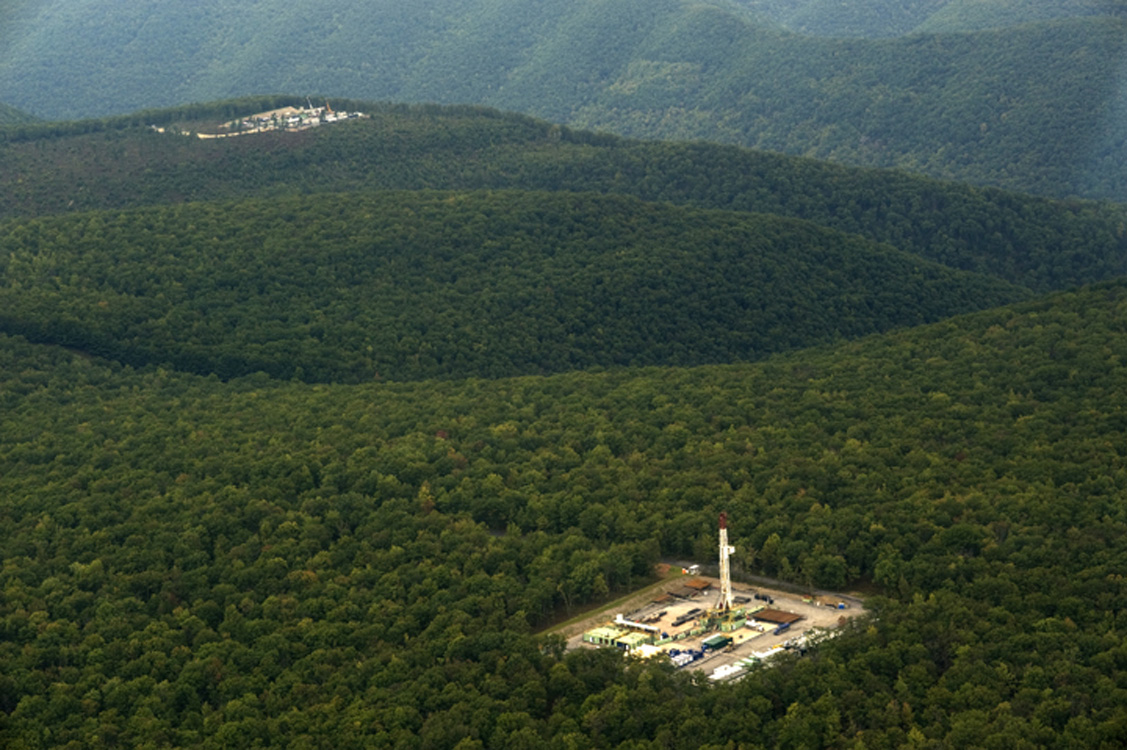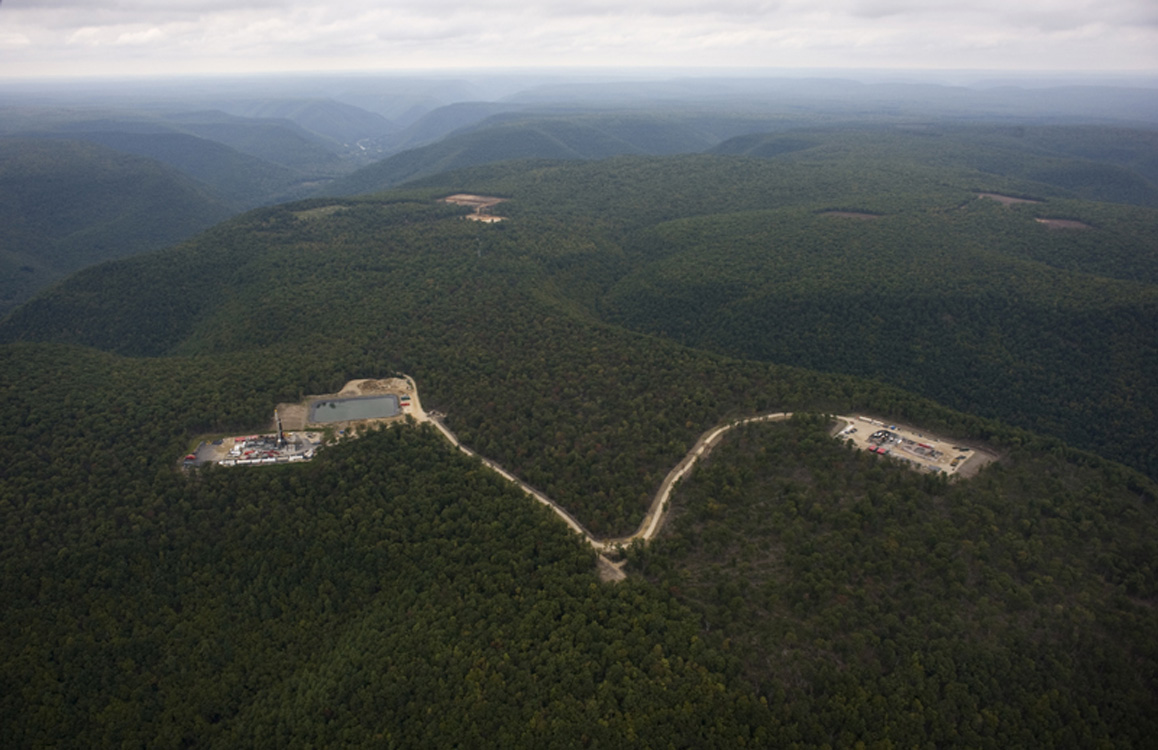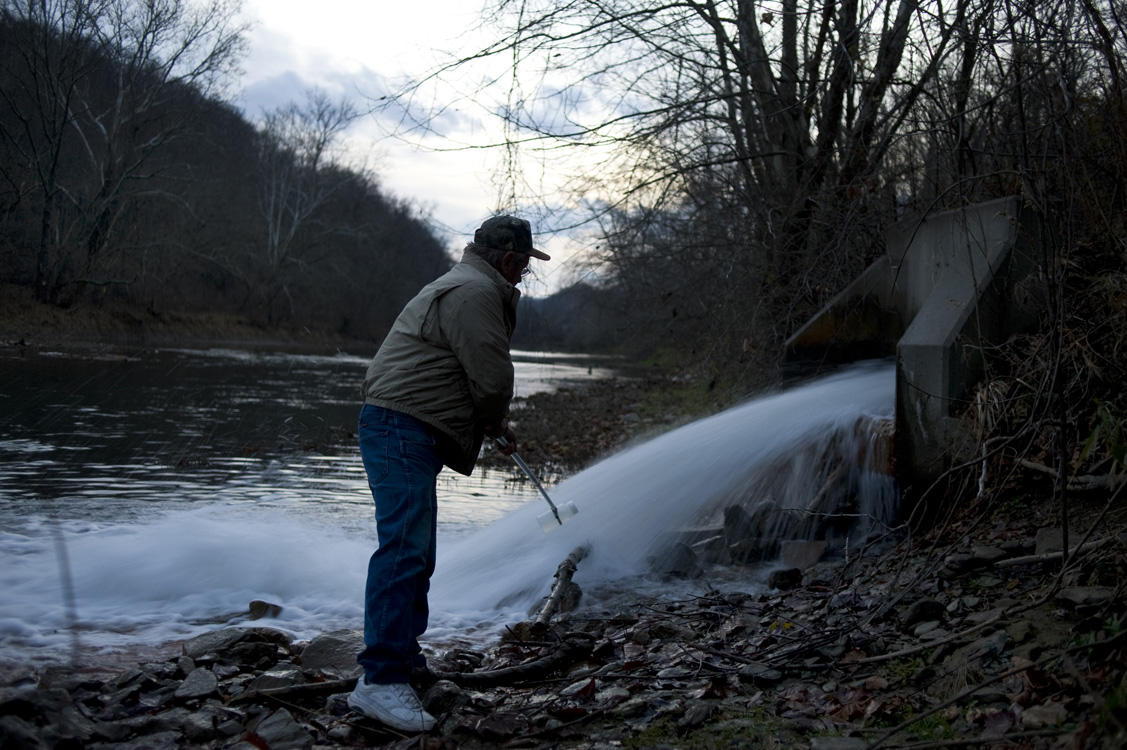
Design by Brett Yasko. Photo © Noah Addis/MSDP 2011
In its first phase, the Marcellus Shale Documentary Project documented the social, environmental and economic effects of unconventional natural gas (methane) extraction (commonly known as "fracking") within the borders of Pennsylvania. Photographers Noah Addis, Nina Berman, Brian Cohen, Lynn Johnson, Scott Goldsmith and Martha Rial, designer Brett Yasko and curator Laura Domencic collaborated for over a year to produce a body of work that opened as an exhibit in Pittsburgh in 2012, and which traveled until the spring of 2016. The project also published a book, available at the shop at Pittsburgh Center for the Arts. This first phase of the MSDP has been featured in the New York Times, and on wired.com, amongst others. The physical exhibit was visited by over 25,000 people during its travels, and was designated one of the top ten exhibits of 2012 by the Pittsburgh Post-Gazette.
MSDP has been generously supported by The Pittsburgh Foundation, The Heinz Endowments, The William Penn Foundation, The Sprout Fund, the Donald and Sylvia Robinson Foundation, and by a number of private donors including Josh Whetzel, Nancy Bernstein, and Cathy Raphael.
The pictures here represent a synthesis of the work, organized by photographer.
Brian Cohen spent most of his time in South-Western Pennsylvania, in Butler County and the Laurel Highlands. He made landscapes that attempt to describe how the arrival of a major industrial process looks in rural Pennsylvania; and he followed stories both of people who have leased their property to a gas company, and of people who lived close by drilling activity.
Lynn Johnson's work casts a wide net, looking at people working in the gas industry, people opposed to drilling activity, people who have leased and who have been adversely affected by drilling. She covered ground across the state, from Butler County in the west, to in the northeast.
Activist Wendy Lynne Lee talks to Riverdale residentChevelle Eck through a chain-link fence constructedshortly after activists were led off the property. Riverdale trailer park residents were evicted to clear theway for a water extraction plant that will supply 3 million or more gallons of water a day to Range Resourcesdrilling operations in the area. © Lynn Johnson/MSDP 2012
Barbara Clifford's family has lived on this farm for four generations. Now it is threatened by the industrialization of the entire area. Drilling rigs and compressor stations dot the landscape here in Montrose, PA threatening the family's dream of an organic farm and idyllic rural lifestyle. © Lynn Johnson/MSDP 2012
Ray Kemble no longer trusts anyone. He lives in Dimock, PA- ground zero in the fracking fight. He believes that Cabot drilling operations fouled the water of many of the residents here several years ago. Many must still use water from water buffalos and not the once-clean underground source. © Lynn Johnson/MSDP 2012
Kim McEvoy shows Carrie Hahn the contaminated water that the DEP has proclaimed "safe" to drink after Rex Energy began gas exploration in their area outside Evans City. Both women became activists out of frustration and anger when, they felt, both local and state authorities turned their back ion their plight. © Lynn Johnson/MSDP 2012
McEvoy and her daughter stand in the brown spot that used to hold their water buffalo, the only source of safe drinking water for the family. The container, originally provided by Rex Energy, was taken away when their water was deemed "safe", though it was still brown and smelled like rotten eggs as it flowed from the kitchen faucet. © Lynn Johnson/MSDP 2012
Betty Whyte stands in her now empty mobile home in Riverdale Trailer Park. The land underneath was sold to Aqua America as the site for a water extraction plant. Residents, many of whom were elderly and living on restricted budgets, were forced to move suddenly and with only $1,200 to $2,500 in compensation. Betty and her husband, Bill, have been married for fifty-one years. This was their home for much of that time. © Lynn Johnson/MSDP 2012
These IPhone images are "impressions" gathered in all corners of Pennsylvania - from the northeast Susquehanna watershed to the north of Pittsburgh. Dimock, Evans City, Benton, Jersey Shore, Milton, Toanda, Moshannon State Forest, Tunkhannock. These are only a few of the places in our state where homes, lands, and lives are deeply affected by the shale gas "boom". Photographs © Lynn Johnson/MSDP 2012
Nina Berman focused on the tensions caused by the rapid rise of gas drilling in the northeast of the state, and the struggles of residents to cope with the changes it has brought.
Dr. Stephen Cleghorn declares his farm forever frack free in a memorial tribute to his wife Lucinda Hart Gonzalez who died of breast cancer. Environmental activists from across the region attended to honor Lucinda and participate in the release of her ashes. Reynoldsville, Jefferson County, 2012. © Nina Berman/MSDP 2012
Tamara Horn's son, Aidan, showing the rashes on his face that his parents say are a result of drinking and using contaminated water. The family and several others on Carter Road in Dimock claim that they had their well water contaminated, allegedly by nearby gas-drilling activities of Cabot Oil and Gas. Dimock, Susquehanna County, 2012. © Nina Berman/MSDP 2012
Jason Lamphere looks out over his property. He and his family have been without well water since 2010 after methane migrated into their system. A garden plot behind him lays unplanted since he lacks clean water to irrigate it. He believes nearby gas drilling and fracking caused the problem. Monroeton, Bradford County, 2011. © Nina Berman/MSDP 2011
Jude Stiles comforts her daughter Angelina Fiorentino who collapsed in a seizure outside her trailer. Angelina, Jude, and Jude's husband, Carl Stiles all became sick from contaminated drinking water in their Sugar Run home and were forced to flee under doctor's orders. Carl was diagnosed with cancer and other ailments, Jude has skin problems and Angelina suffers from chronic seizures and blood poisoning. She can no longer work. In despair, Carl committed suicide, no longer able to handle the daily headaches and constant abdominal pain. The family is suing Chesapeake Energy, claiming they are victims of a 4-mile toxic cluster created by gas drilling that also affected homes in Wyalusing. Fayetteville, Franklin County, 2012. © Nina Berman/MSDP 2012
Nick DeRemer, a kayak instructor, shows where methane has been bubbling in the Susquehanna River along Sugar Run. He attributes it to gas drilling and wants to leave his home state because of the shale exploration. Several homes in Sugar Run and nearby Wyalusing have seen methane migrate into drinking water wells. Sugar Run, Bradford County, 2011. © Nina Berman/MSDP 2011
Matt Walker with the Clean Air Council, and Ralph Kisburg of the Responsible Drilling Alliance visit the one-room home of organic farmers Adron and Mary Delarosa to alert them to a meeting about a compressor station planned near their home. The station, and the four wells already mapped within 1 mile of their home, made them fear for their daughter's health and the integrity of their organic crops. As a result, they left the property and the state in early 2012. Springville, Susquehanna County, 2012. © Nina Berman/MSDP 2012
Cassie Spencer standing in her house which has lost 80 percent of its value after her well water went bad and she was forced to use a water buffalo and bottled water. Spencer and two other families won a lawsuit against Chesapeake claiming gas-drilling activities contaminated their well water. Chesapeake denied the charge but paid the families $1.6 million. Wyalusing, Bradford County 2011. © Nina Berman/MSDP 2011
A supporter of natural gas drilling who lives in New York, traveled to Pennsylvania to promote gas drilling and shout at anti-fracking residents wholost their well water as a result of contamination from gas drilling. The frackingissue has split residents of Carter Road into two opposing camps. © Nina Berman/MSDP 2012
Noah Addis' large format photographs describe in extraordinary detail the faces and landscapes of the gas fields.
Carol Jean “Jeannie” Moton poses for a portrait at her home in Avella, PA on 04/29/2012. Moton says she has had health problems including skin lesions and rashes, hot flashes, and bone pain since the first Marcellus Shale well was drilled near her home in 2006. She says several of her neighbors, including her mother, have become ill. She suspects that contaminated water contributed tothe recent death of her father, as well as that of her own and her neighbor’sdogs. “This is not a safe practice,” she says. “I’ve been through hell.” © Noah Addis/MSDP 2012
Skylar Sowatskey, aged three, poses for a portrait near her home inConnoquenessing Township, PA on 04/30/2012. Her mother claims that their water was contaminated after several Marcellus Shale gas wells were drilled inthe area between 2010 and 2011. The family recently moved from their home, where they had lived for sixteen years. © Noah Addis/MSDP 2012
Fred McIntyre poses for a portrait at his home in Connoquenessing Township, PA on 04/30/2012. McIntyre, who has lived in his home for twenty years, claimsthat his water turned purple and foamy after several Marcellus Shale gas wells were drilled in the area in January of 2011. He and his family now drink only bottled water. © Noah Addis/MSDP 2012
Janet McIntyre poses for a portrait at her home in Connoquenessing Township, PA on 04/30/2012. McIntyre, who has lived in her home for 20 years, claims that her water turned purple and foamy after several Marcellus Shale gas wells were drilled in the area in January of 2011. She and her family now drink only bottled water. © Noah Addis/MSDP 2011
Scott Goldsmith photographed workers, activists, residents, and the infrastructure that brought them together and altered the landscape of south-western Pennsylvania.
The hole in the middle of this drilling rig platform (yellow area) is where the drill is inserted. Extension pipes are attached as they add length to achieve a depth of about a mile. Most of the extension pipes are rusted and corroded from the caustic chemicals used in the drilling process. One of the chemicals used helps fight corrosion. © Scott Goldsmith/MSDP 2011
An underground pipeline stretches like a ribbon into the distance. Workers ready the top of the pipeline to plant grass as the final phase of the pipeline built to transport the gas harvested from the Marcellus Shale. Mt Pleasant Township, PA. This section of the pipeline was completed in 2010 and opened again in 2012 for updates. © Scott Goldsmith/MSDP 2012
Looking up at a natural-gas drilling rig in Washington County, PA, through a ceiling window of the control room on the drilling platform. The flag is used to help the people working on the rig determine which way the wind is blowing, to help avoid airborne contaminates when present. © Scott Goldsmith/MSDP 2012
A flow-back water containment pond holds polluted and radioactive water from the drilling industry. This water evaporates and lands on crops and farm land in the form of dew condensation. These ponds have leaked and flown into creeks, streams, and rivers. Birds land on the ponds and small animals have consumed the water. © Scott Goldsmith/MSDP 2012
John "Denny" Fair, aged fifty-eight, was among several Butler County residents who lost their water supply when gas driller Rex Energy ended water shipments to several families in Connoquessing Township, Butler County. Workers hauled away two tanks from his backyard that supplied water to three homes. Fair is in the middle helping workers remove his only supply of water that is portable after boiling. © Scott Goldsmith/MSDP 2012
After workers hauled away two water tanks that supplied three homes from his backyard, John "Denny" Fair went inside his small home and became teary-eyed. When Fair reconnected his water well, it pumped out orange-brown water that he and the neighbors don't want to use. Fair said the water turned brown and "stinky" shortly after the fracking started. © Scott Goldsmith/MSDP 2012
Lee Zavislak of Amity, PA, during a truck-driving class at the Western Area Career & Technology School in Canonsburg, PA. The school is helping gas companies fill their need for truck drivers with graduates of the truck-driving program. Lee made it well-known that she would not drive for the gas companies because of the environmental damage they are doing. © Scott Goldsmith/MSDP 2012
This water truck is making a delivery to the Hallowich family water buffalo. The family could not use their water because of contamination that started after drilling and fracking near their property. The water being delivered was for bathing only and cost the family more than 300 dollars a month, not including bottled water for drinking. © Scott Goldsmith/MSDP 2011
A hearing in downtown Pittsburgh, PA called by US senator Bob Casey, D., PA, to discuss action plans for accidents caused by gas drillers. Hallowich is crying as she listens to testimony from a person with severe health problems thought to be caused by water and air contamination from fracking. © Scott Goldsmith/MSDP 2011
Jeannie Moten shows her hands. She thinks the scaling skin comes from washing dishes and plans to use gloves from now on. She didn't have this problem before fracking. Moten also lost her portable water from contamination and members of her family have had respiratory problems and nosebleeds that she and others feel is the result of fracking near her property. © Scott Goldsmith/MSDP 2012
Lighting water on fire due to the natural gas bubbling up from a natural spring. The gas showed up in the spring after David Headley's property was fracked in Smithfield, PA. Headley owns horses and discovered the bubbles when his horses stopped drinking water from this location after the fracking. © Scott Goldsmith/MSDP 2012
Martha Rial spent time in Greene County, once the poorest in the state, to focus on how the construction of a pipeline affected one goat farmer and her surroundings.
Volunteers take a break at the Oil and Gas Safety Supply booth at the Tri-County Oil & Gas Expo in the Washington County Fairgrounds. Oil & Gas Safety Supply sells affordable flame-resistant work wear. Amy Savage opened the store in Washington, PA and it's one of the growing number of women-owned businesses serving the gas, oil, and coal industry. © Martha Rial/MSDP 2012
Jeanne Williams and her husband Llew purchased the 113-acre farm they named Red Barn Farm in 1995. Her father introduced her to farming in her teens when her family moved to Greene County. Auzre, one of Williams' barn cats, explores the land overlooking pipeline construction. © Martha Rial/MSDP 2012
Ken Dufalla collects a water sample while monitoring bromide levels at Clyde Mine discharge along Ten Mile Creek in Greene County. In fresh water, elevated levels of bromide, a substance usually found in seawater, are always a result of human activity. Dufalla is president of the Harry Enstrom Chapter of Izaak Walton League in Greene County and a long time advocate for clean water. As of March 2012, high bromide concentrations- some contend as a result of Marcellus Shale activity- remained a concern in many of the region's rivers. © Martha Rial/MSDP 2012

